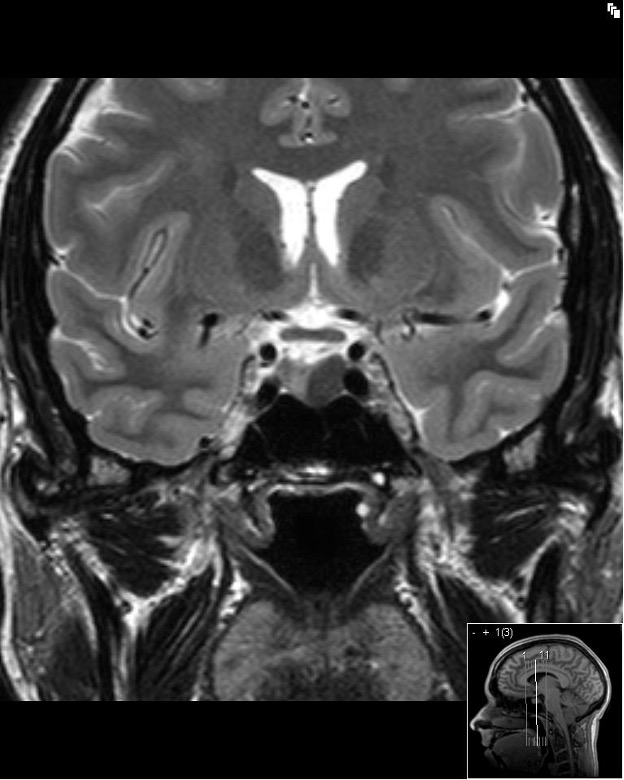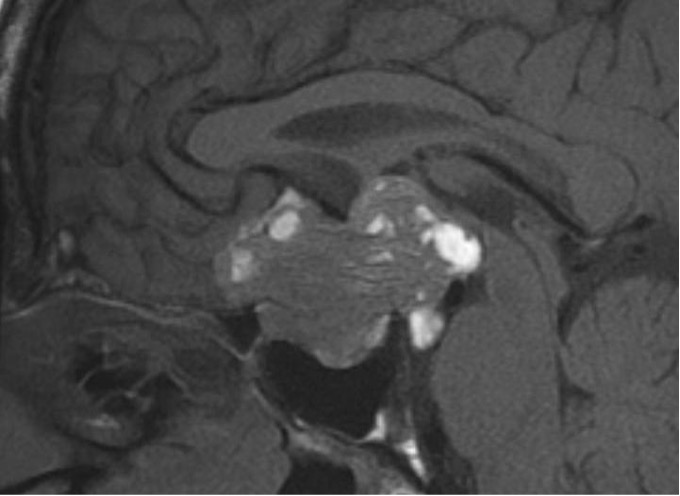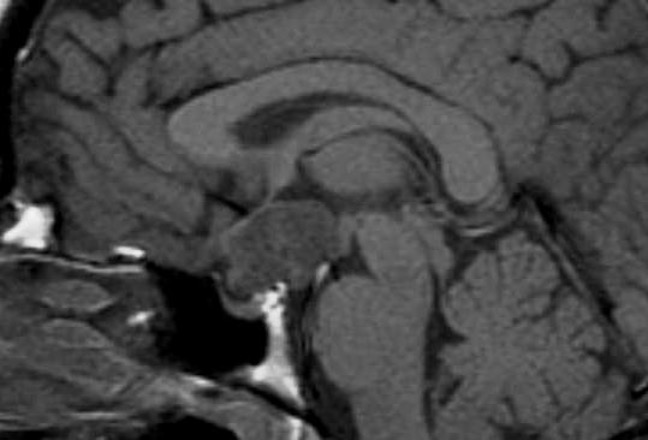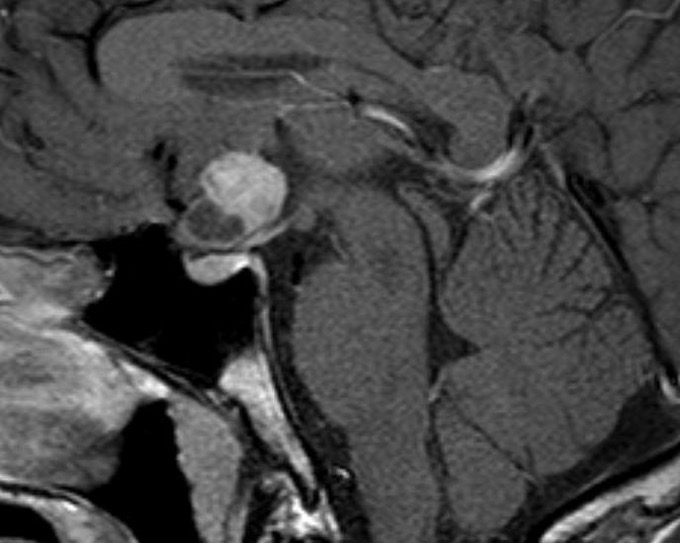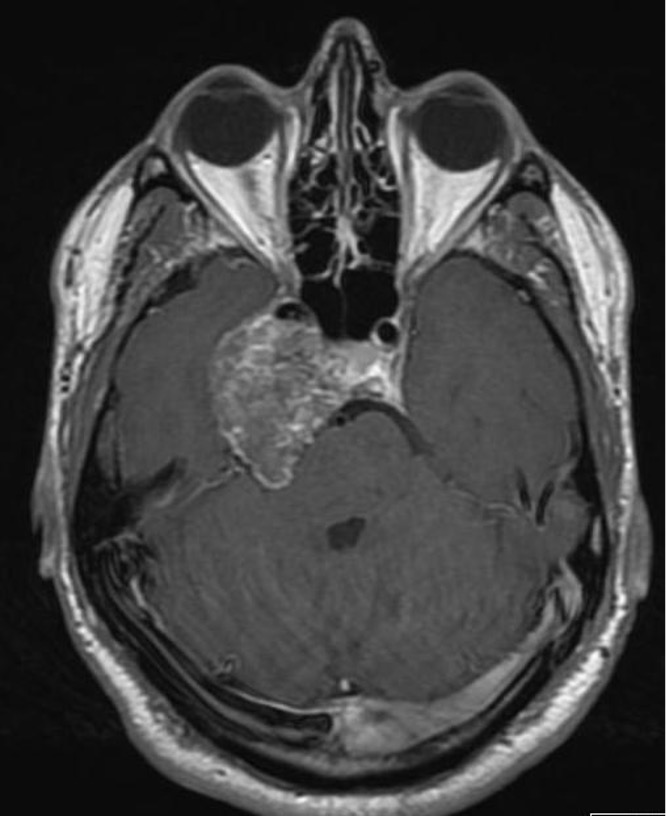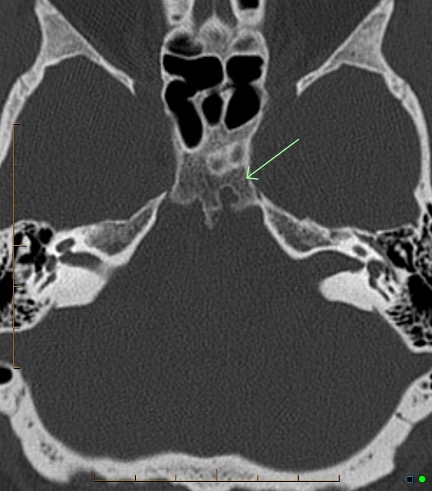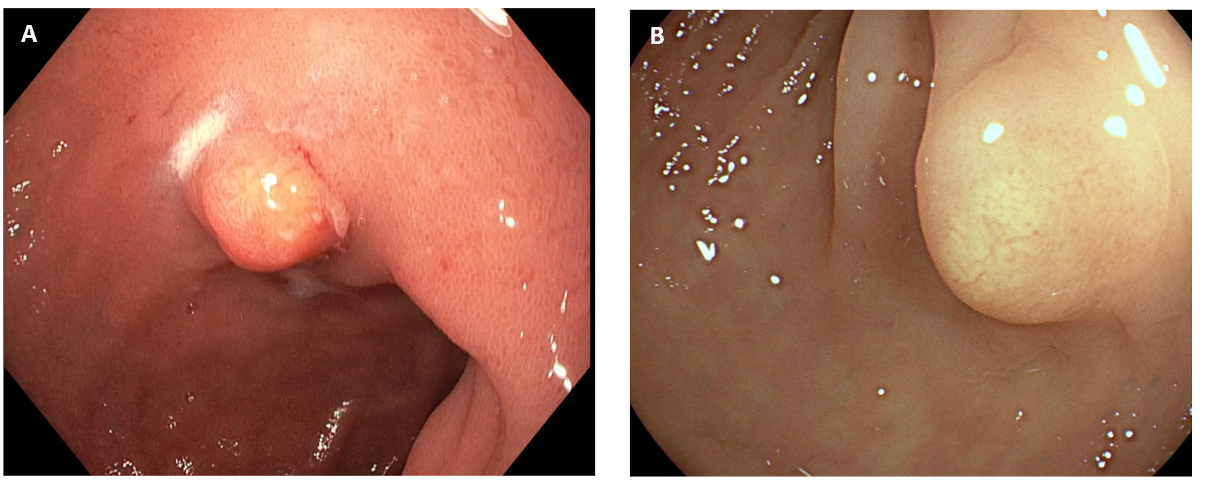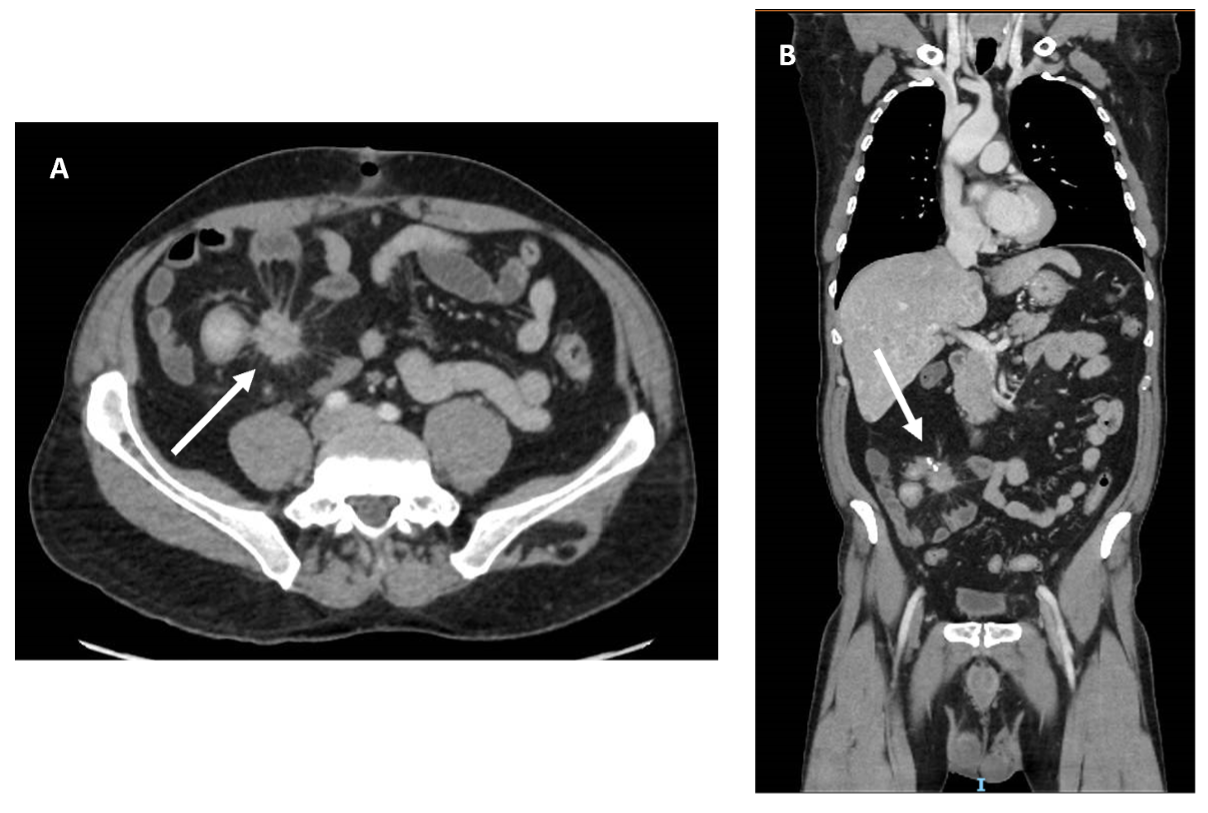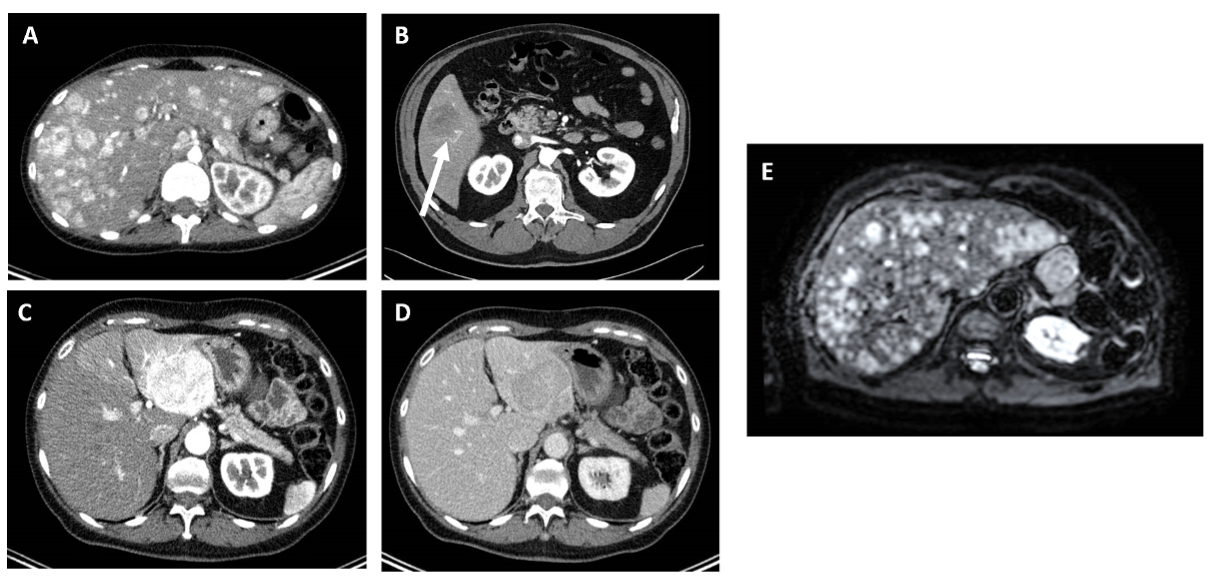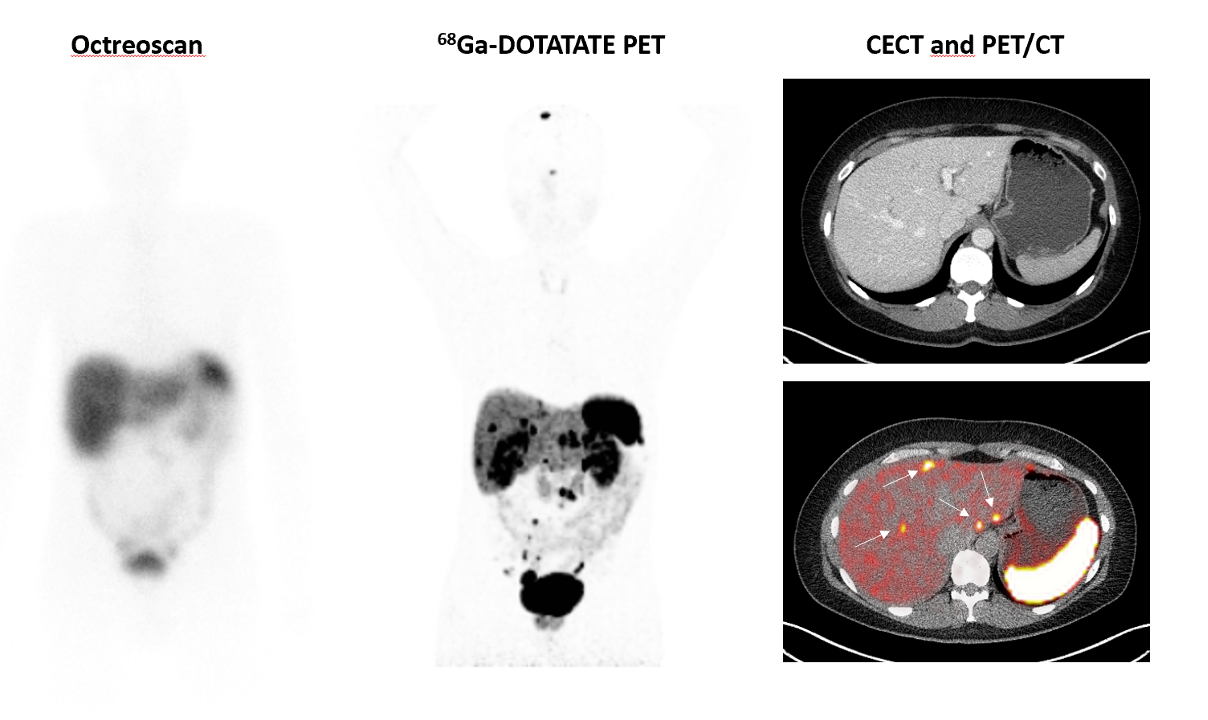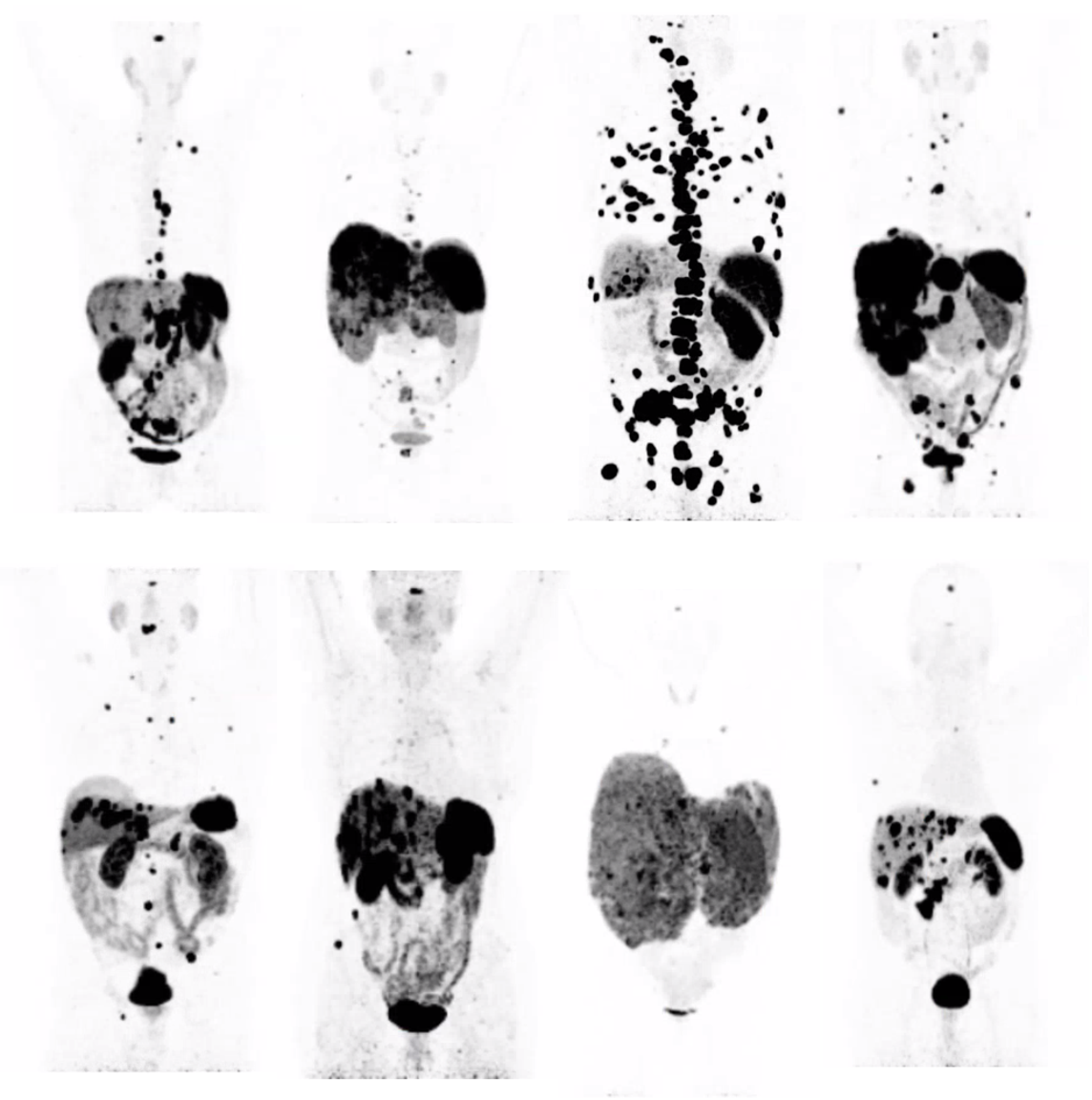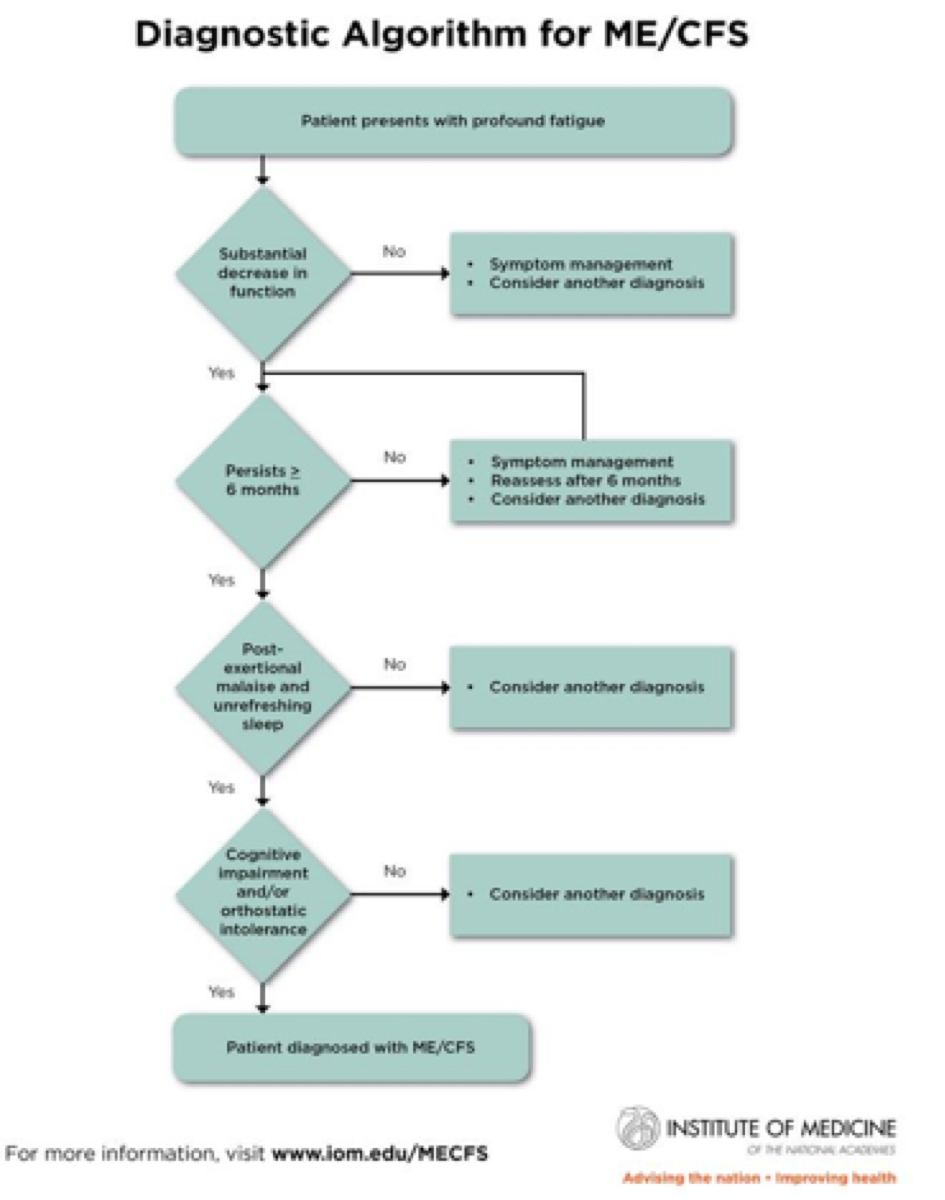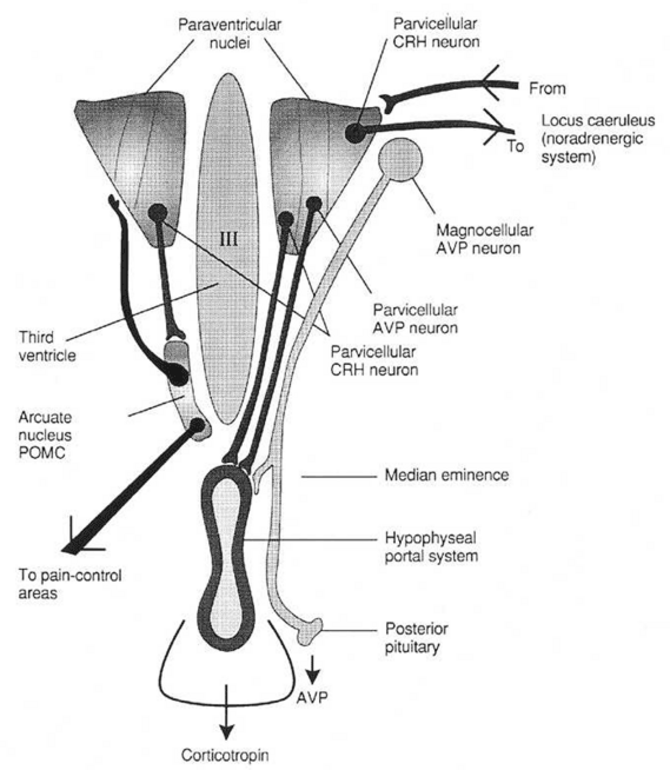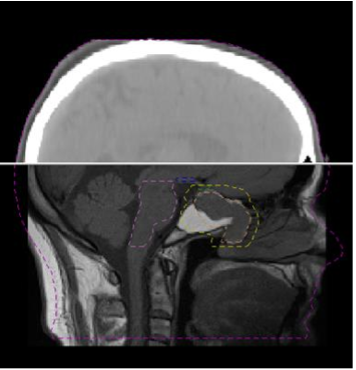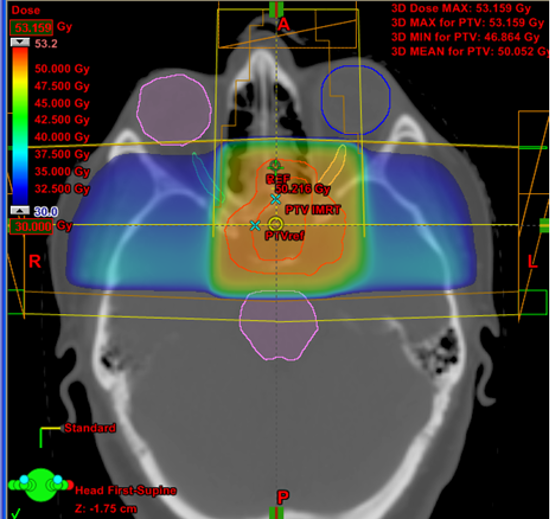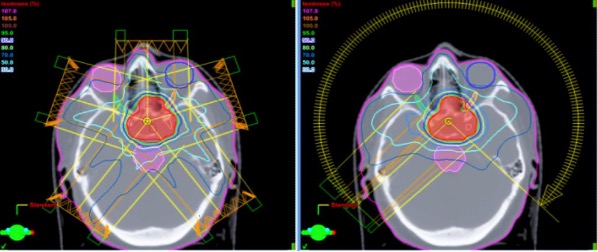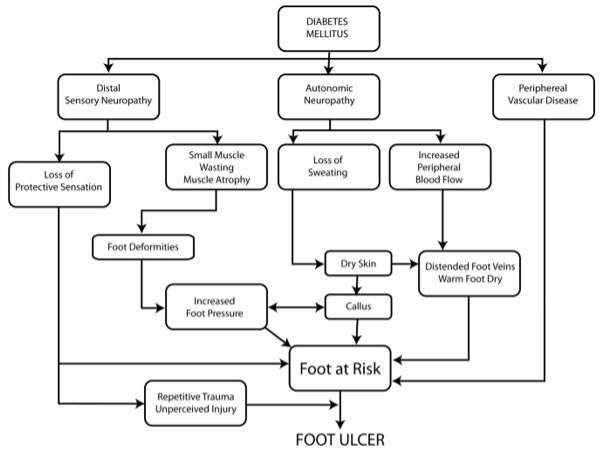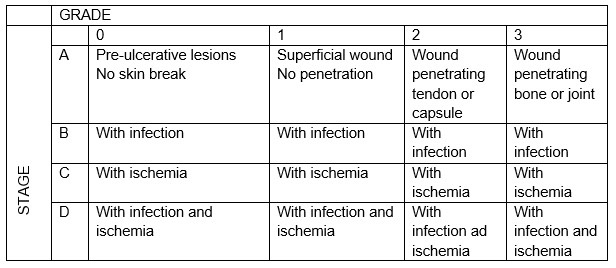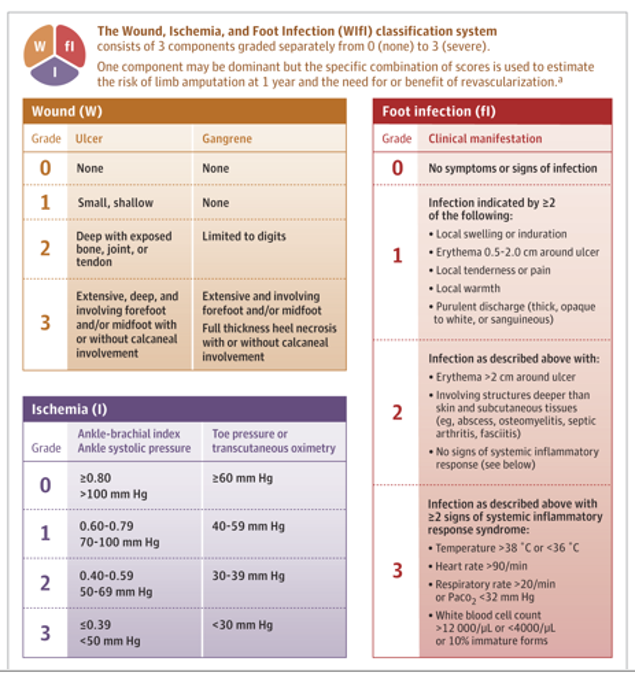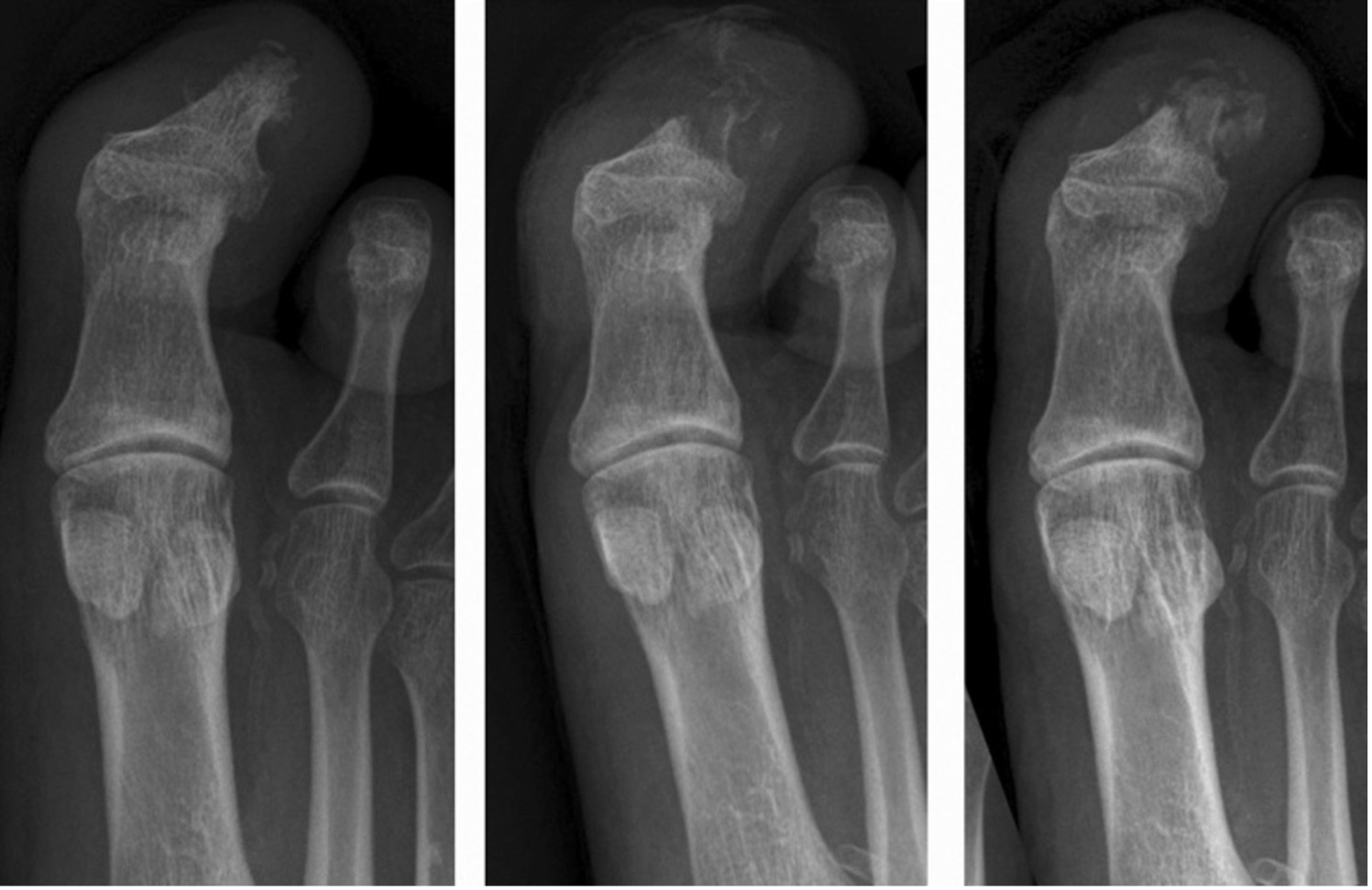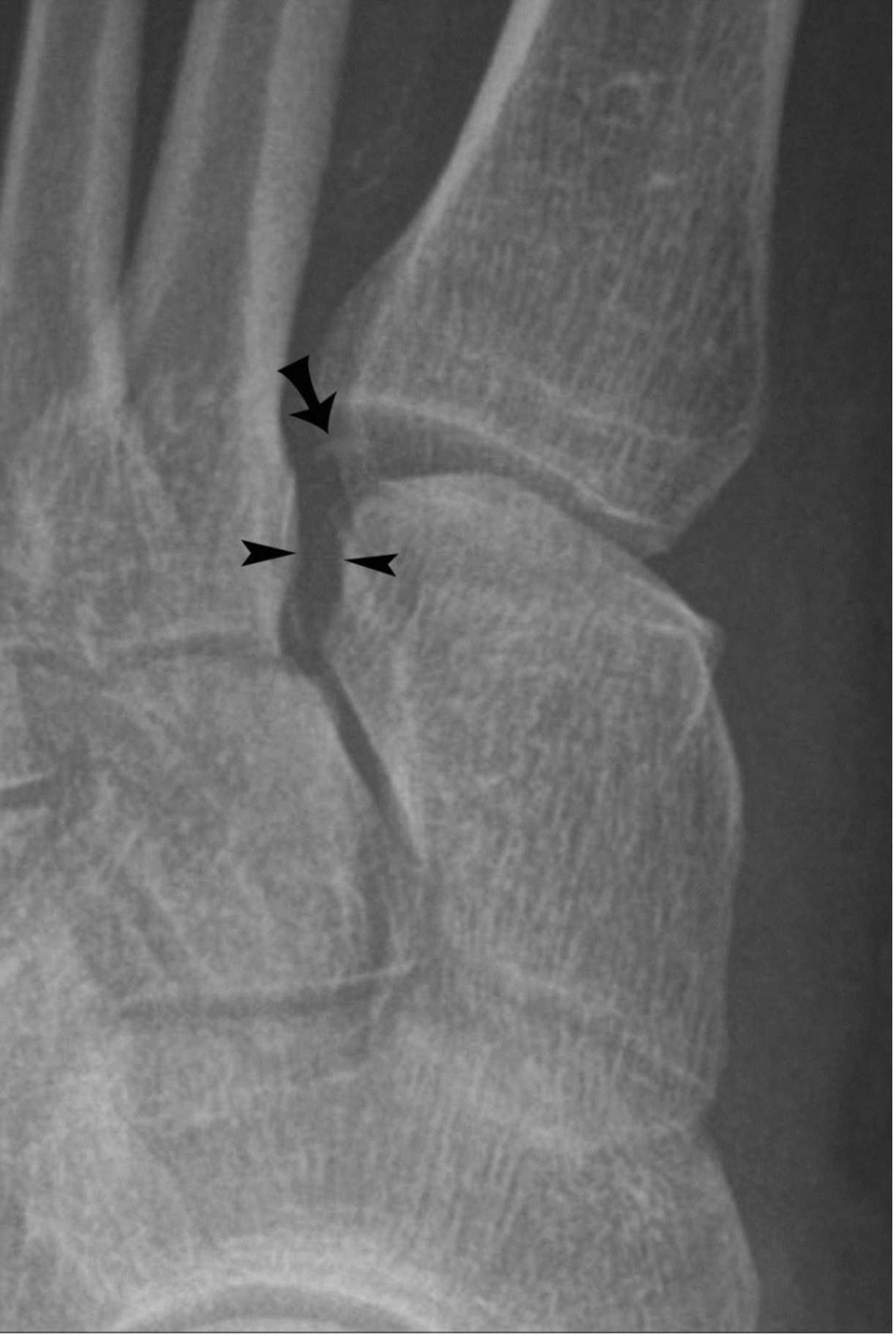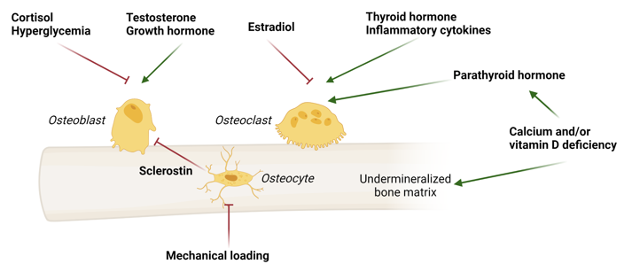ABSTRACT
Hypoglycemia in neonates, infants and children should be considered a medical emergency that can cause seizures, permanent neurological injury, and in rare cases, death, if inadequately treated. Under normal conditions, glucose is the primary fuel for brain metabolism. Due to the metabolic demands of the developing brain, infants and children have increased rates of glucose utilization as compared to adults. Normal regulation of glucose during fasting requires integration of glycogenolysis, gluconeogenesis, and fatty acid oxidation coordinated by various hormones. In the first days of life, the time course of the physiologic transitional changes to autonomous glucose regulation may overlap with presentation of inherited and acquired pathologic forms of hypoglycemia, introducing inherent challenges and controversy in addressing neonatal hypoglycemia. Therefore, a careful approach to the neonate with hypoglycemia is critical to determine the precise etiology so that rapid and appropriate interventions can be implemented to avoid permanent neurological injury. After infancy, hypoglycemia is uncommon, but, up to 10% of children older than one year of age presenting to emergency rooms with previously undiagnosed hypoglycemia have a serious underlying condition requiring long-term treatment. An important caveat in the pediatric population is that the classical definition of hypoglycemia, Whipple’s triad, is of limited use as young children are unable to reliably communicate symptoms. At all ages, determining the cause of the hypoglycemia is paramount for establishing specific and effective treatment to prevent further episodes of hypoglycemia and long-term neurological sequelae. The majority of hypoglycemic events in infants and children with hypoglycemic disorders occur during periods of fasting. Evaluation of key metabolic fuels and hormones (the critical sample) during a supervised fast, or at the time of spontaneous hypoglycemia, thus permits classification and relevant treatment of hypoglycemia disorders.
INTRODUCTION
Hypoglycemia is the biochemical finding of a plasma glucose lower than normal for age. Hypoglycemia itself is not a diagnosis but rather reflects an underlying perturbation in metabolic adaptation, which may be as simple as prolonged fasting in a child with an intercurrent illness, or a complex genetic disorder. It is critical for the physician at all times to determine the etiology of hypoglycemia while at the same time treating critical low blood glucose and stabilizing the person with hypoglycemia.
In this chapter, we outline the basic physiology of glucose regulation, the change in glucose homeostasis in the immediate newborn period and describe the common diseases that cause hypoglycemia in childhood. We discuss the definitions of hypoglycemia, pitfalls in the measurement of blood glucose concentration, the critical importance of glucose as a fuel for energy in the brain, and the implications of hypoglycemia on brain damage. For information on hypoglycemia related to diabetes and its treatment see the chapter entitled “Hypoglycemia During Therapy of Diabetes” in the Diabetes Mellitus and Carbohydrate Metabolism---Diabetes Manager section of Endotext (1).
PHYSIOLOGY OF GLUCOSE REGULATION
An understanding of the physiology of glucose regulation is critical in order to understand the etiology of the different hypoglycemic disorders. By utilizing a fasting systems approach to diagnosis, one can rapidly pinpoint the general physiological system disrupted and with appropriate examination of blood and urine at the time of hypoglycemia (the critical sample) one can identify the diagnosis relatively quickly. This approach is particularly useful because apart from the newborn period (2), the vast majority of causes of hypoglycemia in children are caused by abnormalities of fasting adaptation. Rare exceptions to this rule include postprandial hypoglycemia typically related to gastrointestinal surgery such as Nissen fundoplication (3), or esophageal atresia repair (4), protein induced hypoglycemia of certain genetic forms of hyperinsulinism (5,6), and the hypoglycemia triggered by the ingestion of fructose in hereditary fructose intolerance (7).
The recognition and identification of the etiology of hypoglycemic disorders in the immediate newborn period may be more complicated due to the changes in glucose homeostasis that occur during the transition from intra uterine to extra uterine life, typically defined as the first 12-72 hours of life, and will be discussed separately (2).
The Physiology of Fasting
The key to diagnosing the etiology of hypoglycemia is a good understanding of the three key metabolic systems that regulate the physiological response to fasting and the hormonal control over these systems. The first, glycogenolysis, involves the breakdown of glycogen and conversion to glucose 6 phosphate (G-6-phos). G-6-phos may either undergo glycolysis and be converted to lactate (8), or converted to glucose by glucose-6-phosphatase (G-6-Pase), and then released from the liver and transported to the brain for fuel. The second, gluconeogenesis, is the pathway by which fuels such as lactate, alanine, fructose and glycerol are converted into glucose. The third, fatty acid oxidation and ketogenesis, are the processes by which ingested fat and fat stores are converted either to acetyl-CoA for entry into the citric acid cycle (Krebs cycle) and generation of energy, or to beta-hydroxybutyrate which is then transported to tissue such as the brain for energy production. An essential role of fatty acid oxidation is the production of an alternate fuel to glucose for energy production. This process conserves glucose for those tissues that can only metabolize glucose (such as red blood cells). Each of these mechanisms of fasting adaptation are finely regulated to maintain the plasma glucose between 70 and 110 mg/dL (3.9 to 6.1 mmol/L) by a combination of insulin to utilize or store glucose, and the counter regulatory hormones to mobilize and release glucose (Table 1). Insulin, the main hormone secreted in the fed state, suppresses glycogenolysis, gluconeogenesis, lipolysis, and ketogenesis. The counter regulatory hormones glucagon, cortisol, growth hormone, and epinephrine are the predominant hormones secreted in the fasting state and have overlapping effects on these processes. Because of the critical importance of these 3 processes (glycogenolysis, gluconeogenesis and fatty acid oxidation) in preventing hypoglycemia, there is overlap in hormonal control of the systems with both glucagon and epinephrine stimulating glycogenolysis, cortisol and glucagon stimulating gluconeogenesis, growth hormone and epinephrine stimulating lipolysis and finally glucagon and epinephrine stimulating ketogenesis.
|
Table 1. Hormonal Control of Fasting Adaptation
|
|
Hormones
|
Glycogenolysis
|
Gluconeogenesis
|
Lipolysis
|
Ketogenesis
|
|
Cortisol
|
|
stimulates
|
|
|
|
Growth Hormone
|
|
|
stimulates
|
|
|
Glucagon
|
stimulates
|
stimulates
|
|
stimulate
|
|
Epinephrine
|
stimulates
|
|
stimulates
|
stimulates
|
Hormonal Control of Fasting
Following a meal, insulin is the predominant secreted hormone as glucose, and other fuels, are absorbed, facilitating glucose entry into cells and its utilization for energy. Under the influence of insulin, excess glucose is stored as glycogen in the liver for use later in fasting. As the plasma glucose starts to fall below 85 mg/dL insulin secretion is reduced and then suppressed (Figure 1). As the blood sugar continues to fall to around 70 mg/dL, the rapidly acting counter regulatory hormones glucagon and epinephrine are secreted. This initially drives glycogenolysis which supplies glucose from the liver for up to 4-8 hours in infants and 8-12 hours in children and young adults. Cortisol and growth hormone secretion stimulate gluconeogenesis and lipolysis providing amino acids, glycerol, and free fatty acids for metabolism to ketones.
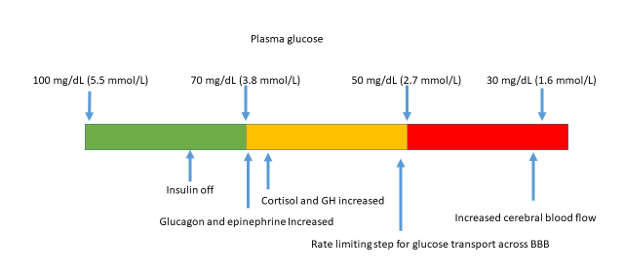
Figure 1. Relationship of hormone secretion to plasma glucose levels.
As the plasma glucose levels approach 50 mg/dL the ability of the blood brain barrier to transport glucose into the brain for maximal usage, begins to become limited (9). The brain responds by utilizing alternative fuels for energy (lactate, beta-hydroxybutyrate) or in the absence of alternate fuels (as occurs in hyperinsulinism) cuts down nonessential functions in order to conserve energy. When the glucose levels drop below 30 mg/dl cerebral blood flow increases in an attempt to increase glucose delivery (10). In conditions of prolonged fasting, as beta-hydroxybutyrate levels rise, monocarboxylate transporter 1 (MCT1) transports the beta-hydroxybutyrate across the blood brain barrier, which presents the brain with an alternative fuel for energy production. With very prolonged fasting, the brain is able to switch from utilizing almost 100% glucose for energy production to utilizing almost all ketones (11). In disease conditions such as glycogen storage disease (GSD) type 1, glycogenolysis results in elevated lactate levels because of the inability to de-phosphorylate G-6-phos and generate glucose that can be transported out of the liver. As a result, the plasma glucose falls rapidly, and the plasma lactate levels rise to 5-10 mmol/L (4-5 times normal levels). Carriers such as MCT1 transport this lactate across the blood brain barrier where the brain can efficiently metabolize it in the presence of oxygen through the citric acid cycle and produce the energy needed for brain function. Indeed, animal studies have demonstrated that the cerebral metabolic rate of oxygen consumption does not fall significantly during the initial phase of hypoglycemia when either ketones or lactate are available as an alternate substrate. In patients with diabetes, lactate infusions can prevent insulin induced neuroglycopenia (12). In addition, humans undergoing a ketogenic diet were able to transition from utilizing primarily glucose as brain fuel to ketones providing 17% of whole brain energy requirements with no overall change in the cerebral metabolic rate (13). It is for this reason that that hypoglycemia itself does not cause brain damage, it is a lack of fuel (glucose, beta-hydroxybutyrate or lactate combined) that causes brain damage. In addition to a lack of fuels for energy production a lack of oxygen supply to the brain prevents the utilization of lactate which can dramatically worsen energy failure in the brain.
In non-physiological conditions when the plasma glucose continues to drop down to 30 mg/dL or lower, cerebral spinal fluid glucose levels become almost zero and in the absence of either ketones or lactate essential functions of the brain stop and cell death begins to occur (14). Breakdown of the phospholipids in the brain provides free fatty acids and breakdown of protein provides gluconeogenic substrates but also increases brain ammonia levels 10-15 fold (15). Whilst breakdown of tissues provides fuel for energy production, this process also damages vital cells and organelles causing permanent cellular destruction. Once the production of energy is insufficient to maintain adequate high energy phosphate compounds, the infant or child will become comatose and have an isoelectric electroencephalogram. It is not known exactly how long glucose and the alternate fuel levels need to be low to cause harm nor how low the total fuels need to be prior to the onset of permanent brain damage; however, it is likely to differ based on availability of alternative fuels, rates of brain metabolism (increased in seizures), and degree of plasma oxygenation. In conditions such as hyperinsulinism, where there are no alternate fuels available and when patients may have seizures which both increase brain energy needs and decreases the availability of oxygen in the blood stream, all these factors combine and may cause profound brain damage (16).
It is clear that not all hypoglycemia is equal, and the responsible physician must assess the etiology of the hypoglycemia, the likelihood of the presence of alternate fuels, and the presence of good blood flow and oxygenation in order to understand the danger of any given episode of hypoglycemia. The importance of correctly identifying the etiology of the hypoglycemia thus affects not just the long-term approach to management but also the immediate approach to the infant or child. This also explains why efforts to define a single blood glucose value that predicts brain damage is impossible and why efforts to define neurological outcome relative to glucose levels alone are not valid.
DEFINITION OF HYPOGLYCEMIA
For the reasons stated above, a single measurement of glucose does not reflect the total energy availability to the brain. Therefore, when one tries to define hypoglycemia, one should consider why a definition is required. We suggest that the definition of hypoglycemia needs to include three critical aspects.
- Diagnostic hypoglycemia is the level of glucose required to make a diagnosis of the etiology of the hypoglycemia.
- Therapeutic hypoglycemia is the level of glucose one should aim to stay above during treatment of hypoglycemic disorders.
- The concentration of glucose at which hypoglycemia causes brain damage is unknown and practically there is no such value.
Diagnostic Hypoglycemia
Evaluation of a blood and urine sample when the plasma glucose is less than 50 mg/dL is essential in determining the etiology of hypoglycemia. This allows a determination of the metabolic profile at the time of hypoglycemia. This sample is often referred to as a “critical sample” and typically includes both blood (plasma) and urine samples, which are analyzed for the analytes in Table 2.
|
Table 2. The Critical Sample: Blood and urine samples to be drawn at a time of hypoglycemia (plasma glucose <50mg/dL) to guide the diagnosis of the etiology of hypoglycemia with additional testing for certain conditions.
|
|
Plasma
|
|
Glucose
|
|
Insulin
|
|
Cortisol
|
|
Growth hormone
|
|
Beta-hydroxybutyrate
|
|
Free fatty acids
|
|
Acylcarnitine profile
|
|
Ammonia
|
|
Liver function tests
|
|
Urine
|
|
Urine organic acids
|
|
In suspected insulin administration
|
|
C-peptide
|
|
Specific insulin assays to measure biological insulin only
|
|
Sulfonylurea screen
|
|
In suspected insulinoma
|
|
Proinsulin
|
|
C-peptide
|
|
Sulfonylurea screen
|
|
In suspected fatty acid oxidation defects
|
|
Free and total carnitine
|
The critical sample can be drawn either at a time of spontaneous hypoglycemia or at the end of a fasting study in which plasma glucose less than 50 mg/dL is deliberately induced. Once the plasma glucose is <50 mg/dL, the counter regulatory hormones should be elevated, and insulin suppressed. The metabolic systems of glycogenolysis, gluconeogenesis, fatty acid oxidation, and ketone utilization should be underway and with glucagon administration, there should be no glycemic response as the liver should have utilized all the glycogen stores. Interpretation of the critical sample is the key to making the correct diagnosis (Table 3). Figure 2 is a simple diagnostic algorithm to aid the provider.
|
Table 3. The Differential Diagnosis of Hypoglycemia in Neonates, Infants, and Children Based on the Results of the Critical Sample.
|
|
Disorder
|
Plasma Fuels when glucose <2.8 mmol/L
|
Plasma Hormones at End of Fast
|
Clinical Features
|
|
Lactate
mmol/L
|
FFA
mmol/L
|
BOHB
mmol/L
|
Insulin (µu/mL)
|
Cortisol (µg/dL)
|
GH (ng/mL)
|
ΔPG following glucagon (mg/dL)
|
|
Normal infants
|
0.7-1.5
|
>1.7
|
2-4
|
<2
|
>18
|
>10
|
<30
|
Normal
|
|
Hyperinsulinism
|
N
|
<1.7
|
<1.8
|
>1
|
N
|
N
|
>30
|
LGA
|
|
Cortisol deficiency
|
N
|
N
|
N
|
N
|
<14*†
|
N
|
N
|
Hyperpigmentation if primary
|
|
GH deficiency
|
N
|
N
|
N
|
N
|
N
|
<8†
|
N
|
Short stature
|
|
Panhypopituitarism
|
N
|
Low-N
|
Low-N
|
N
|
Low
|
Low
|
N
|
Short stature, midline facial malformation, optic hypoplasia, micro/small penis
|
|
Epinephrine deficiency (beta-blocker)
|
N
|
<1.5
|
<2
|
N
|
N
|
N
|
N
|
|
|
Debrancher deficiency (GSD III)
|
N
|
N
|
N
|
N
|
N
|
N
|
N
|
Hepatomegaly 4+
|
|
Phosphorylase deficiency (GSD VI)
|
N
|
N
|
N
|
N
|
N
|
N
|
N
|
Hepatomegaly 2+
|
|
Phosphorylase kinase deficiency (GSD IX)
|
N
|
N
|
N
|
N
|
N
|
N
|
N
|
Hepatomegaly 2+
|
|
Glycogen synthase deficiency (GSD 0)
|
N
|
N
|
N
|
N
|
N
|
N
|
N
|
|
|
Glucose 6-phosphatase deficiency (GSD la and lb)
|
4-8 +
|
N
|
<2
|
N
|
N
|
N
|
Normal glucose elevated lactate
|
Hepatomegaly 4+
|
|
Fructose 1, 6-diphosphatase deficiency
|
4-8 +
|
N
|
N
|
N
|
N
|
N
|
N
|
Hepatomegaly 1+
|
|
Pyruvate carboxylase deficiency
|
4-8 +
|
N
|
N
|
N
|
N
|
N
|
N
|
|
*Depending on sensitivity of the assay used (17). †Note that findings of a single low growth hormone or cortisol level at the time of hypoglycemia has poor specificity for deficiency of either hormone (18,19). Stimulation testing may be needed to confirm the diagnosis. FFA, free fatty acids; GH, growth hormone; GSD, glycogen storage disease; LGA, large for gestational age; N, normal; PG, plasma glucose. Adapted from De Leon DD, Thornton P, Stanley CA, Sperling MA. Hypoglycemia in the Newborn and Infant. In: Sperling MA, Majzoub JA, Menon RK, Stratakis CA, eds. Sperling Pediatric Endocrinology. Fifth ed: Elsevier; 2021 (20).
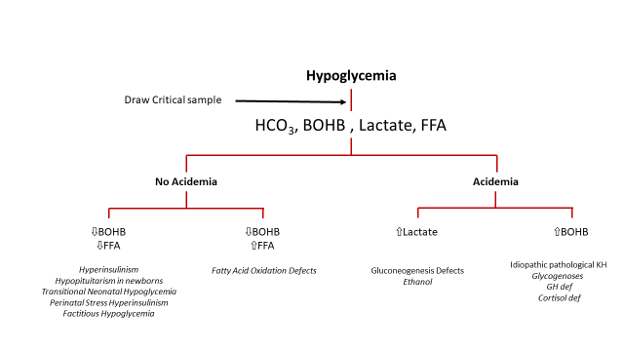
Figure 2. Hypoglycemia diagnosis based on plasma metabolic fuel responses. Measurement of lactate as a gluconeogenic substrate, FFA from adipose tissue lipolysis, and BOHB at the time of hypoglycemia segregates major groups of hypoglycemia disorders. FFA, free fatty acids; GH, growth hormone; HCO3, bicarbonate; BOHB, beta-hydroxybutyrate. Adapted from Thornton PS, Stanley CA, De Leon DD, Harris D, Haymond MW, Hussain K, Levitsky LL, Murad MH, Rozance PJ, Simmons RA, Sperling MA, Weinstein DA, White NH, Wolfsdorf JI, Pediatric Endocrine S. Recommendations from the Pediatric Endocrine Society for Evaluation and Management of Persistent Hypoglycemia in Neonates, Infants, and Children. J Pediatr. 2015;167(2):238-245 (21).
Therapeutic Hypoglycemia
Generally, the target to treat infants and children with known hypoglycemic disorders is to keep the blood glucose above 70 mg/dL. There are certain conditions when the target maybe higher such as patients in acute decompensation with fatty acid oxidation defects where the goal is to stimulate insulin secretion which will prevent lipolysis and then fatty acid oxidation. In these circumstances it may require that the glucose levels are elevated to greater than 85 mg/dL. Thus, in this case, getting the blood sugar up to 70 mg/dL will prevent the consequences of hypoglycemia but will not rapidly reverse the breakdown of lipids to free fatty acids and glycerol and thus will not stop the accumulation the abnormal metabolites of fatty acid oxidation. In children with GSD 1 the provision of adequate glucose to get the blood sugar greater than 70 mg/dL will provide the brain with adequate glucose for energy, however raising the blood sugar too high will drive glucose to lactate and thus worsen lactate levels. So, for individuals with GSD 1 the goal is to maintain the glucose at a level that will maximally suppress lactate levels (70-85 mg/dL) without triggering insulin release.
A second reason to maintain the plasma glucose greater than 70 mg/dL is to prevent hypoglycemic unawareness. Recurrent episodes of glucose levels less than 70 mg/dL over time will blunt the release of epinephrine by the autonomic nervous system. The secretion of epinephrine triggers awareness by the child and young adult of impending neuroglycopenia and allows them to react by food seeking behavior to prevent further hypoglycemia. After every episode of hypoglycemia, this counter regulatory response is blunted for up to 5 days and if the hypoglycemia recurs inside this period, the response is blunted even more. This failure to secrete epinephrine in response to hypoglycemia is hypoglycemia associated autonomic failure (HAAF) (22).
NEONATAL TRANSITIONAL GLUCOSE REGULATION
The transition from intrauterine to extra uterine life is a critical time for the neonate. In utero, the fetus is exposed to seemingly limitless supplies of glucose, amino acids, and other fuels necessary for growth and development, through the maternal placenta unit. Because of the insulin resistance of pregnancy, maternal plasma glucose levels are higher than in the non-pregnant state. Glucose is transported across the placenta by facilitated diffusion and fetal plasma glucose levels are approximately 8-15 mg/dL lower than maternal levels. Fetal plasma glucose levels are determined by maternal plasma glucose levels, however fetal insulin secretion is regulated by fetal plasma glucose levels. Recent data have shown that the threshold for insulin secretion in the fetus is lower than the adult and that this is controlled at the level of the KATP channel by decreased trafficking of the channel to the beta cell plasma membrane (23). The function of insulin in the fetus is to act as the main anabolic hormone and drive fetal growth. At the time of birth and clamping of the umbilical cord this constant supply of glucose is interrupted. The now newborn has to suddenly adjust initially to no glucose and soon thereafter to limited glucose input via, intermittent feeding and a nutrition source that is primarily protein (colostrum). The recent glucose in well babies study (GLOW) has shown that this transition can last up to 72-96 hours in normal breast-fed babies and consists of two phases (24): initially a hypoketotic hypoglycemic phase, and then a ketotic euglycemic/hypoglycemic stage until the mother’s milk comes in (Figure 3).
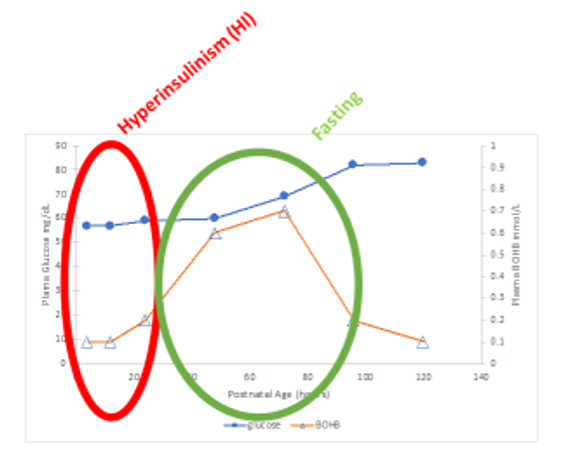
Figure 3. Glucose and beta-hydroxybutyrate levels in healthy term newborns over the first 96 hours of life demonstrating the period of transitional hyperinsulinism during adaptation to extrauterine life followed by the period of hyperketotic euglycemic/hypoglycemic phase of starvation until breast milk has come in and the neonate has adequate caloric intake. Stanley CA, et al. Figure 1. From Stanley CA, Thornton PS, De Leon DD. New approaches to screening and management of neonatal hypoglycemia based on improved understanding of the molecular mechanism of hypoglycemia. Front Pediatr. 2023;11:1071206 (25) CC BY 4.0. Adapted from Harris DL, Weston PJ, Harding JE. Alternative Cerebral Fuels in the First Five Days in Healthy Term Infants: The Glucose in Well Babies (GLOW) Study. J Pediatr. 2021;231:81-86 e82 (26).
In healthy newborns with normal birth weight, the glycogen stores from the liver built up during pregnancy, provide the initial glucose support. In the healthy newborn, liver glycogen concentration is the highest of all times in life and can supply the newborn with glucose for up to 12 hours. In preterm infants and infants born small for gestational age (SGA) or with intra-uterine growth retardation (IUGR), this supply is dramatically diminished thus increasing the risk of hypoglycemia in these babies. In addition, in the immediate newborn period, lactate levels are elevated (24), and gluconeogenesis from lactate rapidly increases over the first few hours of life, as the rate limiting enzyme of gluconeogenesis, phosphoenolpyruvate carboxy-kinase (PEPCK) increases to adult level by 24 hours of life. In the immediate post-natal hours, ketone levels are inappropriately low for the plasma glucose due to the lower threshold for insulin secretion but over the first 48 hours as the threshold for glucose stimulated insulin release rises, plasma ketone concentration begins to increase. In addition, medium chain fatty acids from colostrum are directly absorbed and transported to the liver through the portal circulation and undergo beta oxidation to generate ketones. In starved breastfed infants, ketones can reach 2 mmol/L by 48-72 hours of life (26).
The newborn rapidly adjusts from living in a steady anabolic state to an intermittent catabolic state until nutrition becomes adequate to supply sufficient energy to grow. In the relatively hypoxemic environment of in-utero life, insulin has a lower threshold for secretion to ensure the fetus remains in an anabolic state. After birth the newborn must adjust rapidly from the steady secretion of insulin associated with consistent fetal glucose availability to rapidly changing plasma glucose levels with feeding and to be able to deal with intermittent fasting. Over the first 12-24 hours of life the threshold for insulin secretion rises to the more typical 80-85 mg/dL seen in older infants, children and adults. All of this occurs while awaiting maturation of all the enzymes needed for gluconeogenesis and fatty acid oxidation. The consequences of these changes are that in the first 1-2 hours of life the blood glucose concentration falls to a mean of approximately 55 mg/dL (Figure 3). Gradually over the next 12-48 hours the plasma glucose concentration starts to rise to levels (60 mg/dL) approaching normal adult levels and by 72-84 hours of life, transition is complete and plasma glucose levels are in essence similar to adults (70 to 110 mg/dL) (2,24). During the first 24-48 hours of life upwards of 35-45% of normal healthy term babies may have occasional plasma glucose levels less than 50 mg/dL, however by 72-84 hours of life persistent plasma glucose levels less than 60 mg/dL reflect an underlying pathological problem (21).
Approach to Neonatal Glucose Screening and Treatment
The dilemma for physicians caring for newborns is how to differentiate babies having normal transitional glucose regulation with transient hypoglycemia from those with pathological hypoglycemia due to conditions such as perinatal stress-induced hyperinsulinism (PSHI). The 2015 Pediatric Endocrine Society (PES) recommendations (21) guide the physician on how to differentiate physiological plasma glucose levels less than 50 mg/dL from pathological causes of hypoglycemia in the first days of life. They recommend that normal healthy term babies with no symptoms of hypoglycemia do not require glucose monitoring. Babies at risk for hypoglycemia such as those with IUGR, those born large for gestational age (LGA) or SGA, those born late pre-term, and those in whom maternal factors increase the risk of hypoglycemia such as maternal hypertension, preeclampsia, and eclampsia should be monitored. In addition, babies who have symptoms consistent with hypoglycemia (Table 4) should also be screened for hypoglycemia.
|
Table 4. Symptoms and Signs of Hypoglycemia
|
|
Neurogenic symptoms appear when glucose <70 mg/dL (<2.8mmol/L)
|
|
Jitteriness (neonates), shakiness
|
|
Tachycardia
|
|
Pallor
|
|
Hypothermia
|
|
Hunger
|
|
Sweating
|
|
Weakness
|
|
Neuroglycopenic symptoms appear when glucose <45-50 mg/dL (2.5-2.8 mmol/L)
|
|
Poor feeding (neonates)
|
|
Apnea (neonates)
|
|
Floppiness (neonates)
|
|
Weak/high-pitched cry (neonates)
|
|
Lip smacking and eye twitching (neonates)
|
|
Headache
|
|
Confusion
|
|
Irritability, outbursts of temper
|
|
Bizarre neurological signs
|
|
Motor and sensory disturbances
|
|
Lethargy
|
|
Decreased muscle tone
|
|
Unconsciousness
|
|
Seizure
|
The PES guidelines recommend that the target to treat these infants be 50 mg/dL but if intravenous glucose is required indicating a more serious problem, the target should be 60-70 mg/dL. After 48 hours of life the target for treatment is 60 mg/dL. The recommendations also state that if a known hypoglycemic disorder is identified then the target for treatment is to maintain the blood glucose greater than 70 mg/dL. These goals should be achieved initially by appropriate resuscitation in the newborn period with the avoidance of cold stress to the baby, early skin to skin contact, early breast feeding or if chosen by mothers, bottle feeding (27). Supplemental glucose can be given with dextrose gel (28). In neonates with symptomatic hypoglycemia or those in whom the above measures fail to maintain the plasma glucose above 50 mg/dL intravenous glucose therapy should be initiated at a glucose infusion rate (GIR) of 4-6 mg/kg/min with or without a 200 mg/kg bolus of IV dextrose. As shown. in Figure 4, within 10 minutes following an IV dextrose bolus of 200 mg/kg followed by a GIR of 8 mg/kg/min, plasma glucose levels reach close to 90% of the glucose concentration measured at 60 minutes. Thus, in patients with dangerously low glucose levels (<30 mg/dL) plasma glucose levels should be rechecked in 10-15 minutes to demonstrate correction of the hypoglycemia and if the glucose has not achieved the target level, then a repeat bolus and increase in the IV infusion rate of glucose should be implemented. In this manner, severe hypoglycemia can be rapidly corrected without significant overcorrection. At all times during treatment of hypoglycemia, the newborn infant should be encouraged to continue to feed orally, unless the patient is seizing or has significant respiratory distress in which case feeding should be withheld temporarily.
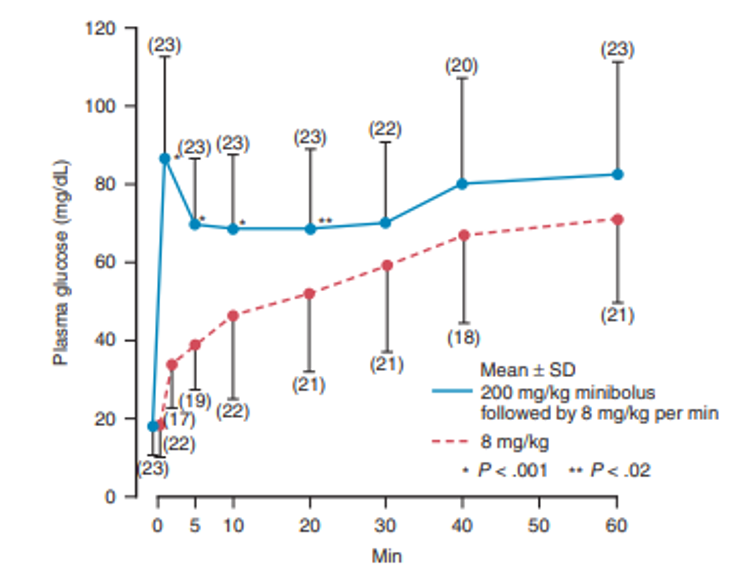
Figure 4. The effect of a 200 mg/kg IV mini-bolus in addition to starting a glucose infusion rate of 8 mg/kg/minute compared to just starting 8 mg/kg/minute infusion rate alone. Reprinted from J. Pediatr, 97(2), Lilien LD, Pildes RS, Srinivasan G, Voora S, Yeh TF., Treatment of neonatal hypoglycemia with minibolus and intravenous glucose infusion, 295-298, 1980, with permission from Elsevier (29).
The single most important clinical differentiators of pathological hypoglycemia from transitional hypoglycemia in the newborn period are the presence of neuroglycopenic signs of hypoglycemia (apnea, lethargy, seizures) and the need for intravenous glucose treatment to correct low glucose levels. In both these circumstances the newborn should undergo a fasting study of 6-9 hours to demonstrate that normal glucose regulation has returned (ability to keep glucose >60-70 mg/dL for 6-9 hours) prior to discharge from the hospital. In babies who have hypoglycemia within 6-9 hours of commencing fasting an underlying pathological cause should be sought prior to discharge and appropriate therapy implemented. For babies with persistent glucose <60 mg/dL after 48 hours of life the use of point of care ketone screening may assist in detecting those babies with failed breast feeding from those with the more serious hypoketotic forms of hypoglycemia such as hyperinsulinism, hypopituitarism, or the fatty acid oxidation defects. In the case of persistent hypoglycemia with hypoketosis, further investigations need to be done to determine the etiology.
CLINICAL SYMPTOMS AND SIGNS OF HYPOGLYCEMIA
Classical symptoms and signs of hypoglycemia are outlined in Table 4. It is important to note that children <5 years of age will generally have hypoglycemic unawareness and not be able to recognize the neurogenic symptoms of hypoglycemia. Neonatal hypoglycemia, by virtue of neonates being unable to communicate in a complex way, may be difficult to detect as many of the signs of hypoglycemia occur in normal neonates (30). Subtle signs such as poor feeding, sleepiness, and jitteriness occur in many non-hypoglycemic babies and clinical judgement as to when to check glucose is required. However, if in doubt it is better to check blood glucose (21). For more serious symptoms, such as lethargy, seizures, apnea and coma, screening point of care glucose should be performed and hypoglycemia simultaneously confirmed by laboratory measured plasma glucose. Older children with acquired hypoglycemia such as that caused by insulinoma, often have hypoglycemic unawareness due to the frequency of hypoglycemia and only demonstrate neuroglycopenic signs. All neonates, infants, and children with neuroglycopenic symptoms or signs must have a plasma glucose concentration checked and if <60-70 mg/dL serious consideration of hypoglycemia as a cause should be entertained.
HORMONAL CAUSES OF HYPOGLYCEMIA
Hyperinsulinism
Hyperinsulinism refers to the group of hypoglycemic disorders caused by dysregulated, excessive insulin secretion or action via signaling. Insulin secretion from pancreatic beta-cells is tightly regulated and predominantly controlled by the plasma glucose concentration (Figure 5). In normal circumstances glucose enters the beta-cell via insulin-independent glucose transporters and is phosphorylated by glucokinase to G-6-phos. Glucokinase acts as the “glucose sensor” setting the threshold for insulin secretion; normally, insulin secretion is triggered when plasma glucose levels are above 85 mg/dL. Metabolism of G-6-phos leads to an increase in the intracellular adenosine triphosphate (ATP) to adenosine diphosphate (ADP) ratio which regulates subsequent closure of the ATP-sensitive plasma membrane KATP channels, membrane depolarization, activation of voltage-gated calcium channels, calcium influx, and release of insulin from stored granules. Amino acid metabolism also influences insulin secretion. Leucine allosterically activates glutamate dehydrogenase, increasing oxidation of glutamate to alpha-ketoglutarate, thereby increasing the ATP-to-ADP ratio, triggering the insulin secretion cascade. Glutamine mediates glucagon-like peptide 1 (GLP-1) receptor signaling, which acts as an “amplification pathway” for insulin secretion.
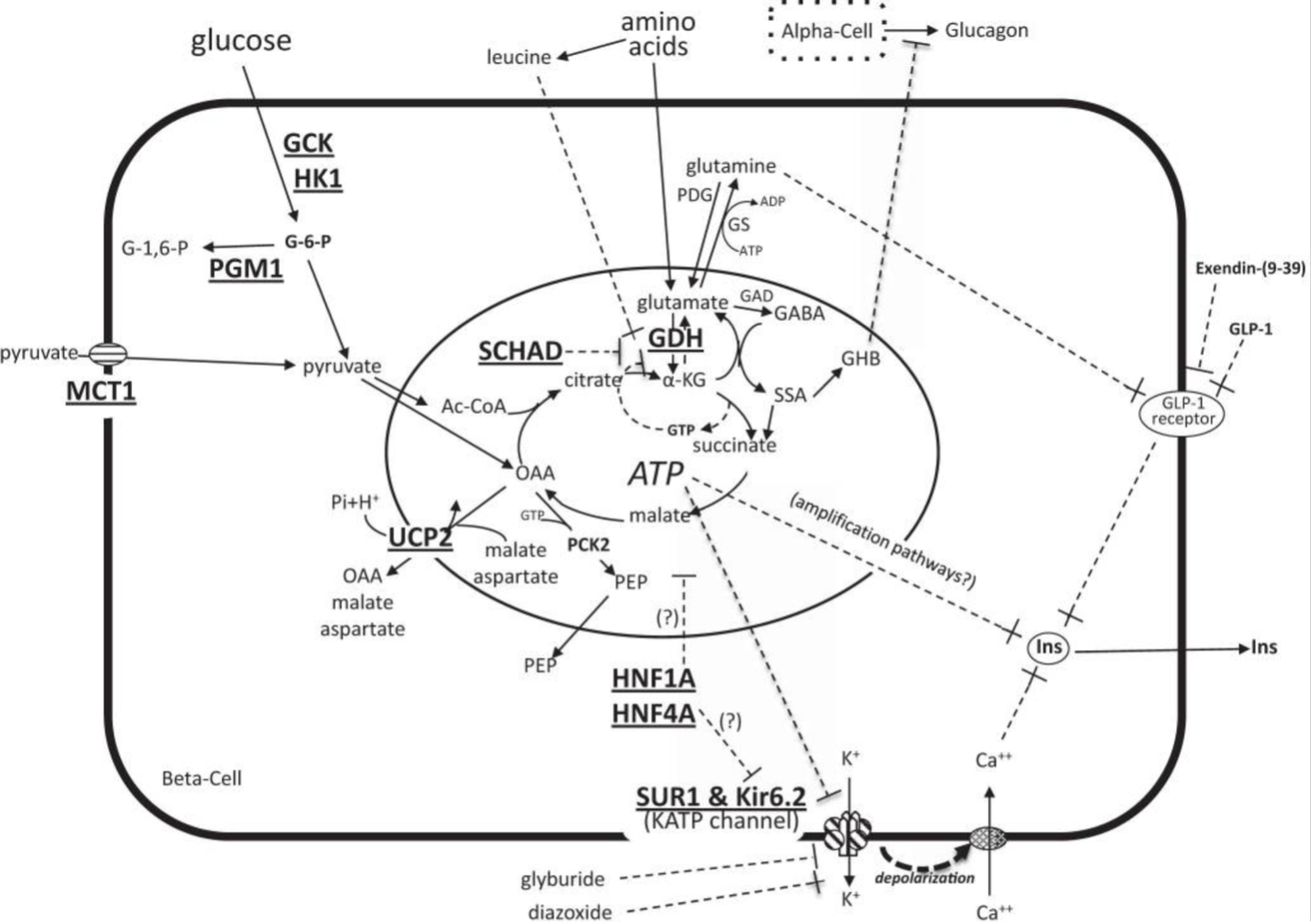
Figure 5. Diagram of the pathways stimulating beta-cell insulin secretion. Glucose enters the beta-cell via glucose transporters and is phosphorylated by GCK to G-6-phos. Oxidation of G-6-phos in mitochondria increases the ATP-to-ADP ratio, leading to closure of plasma membrane ATP-sensitive KATP channels (comprised of SUR1 and Kir6.2 subunits), inhibition of K+ efflux, membrane depolarization, opening of voltage-dependent Ca++ channels, Ca++ influx, and release of insulin from storage granules. Amino acids stimulate insulin secretion through glutamine-mediated amplification of GLP-1 receptor signaling. Leucine stimulates insulin secretion by increasing the oxidation of glutamate via activation of GDH, thereby increasing the ATP-to-ADP ratio and triggering the insulin secretion cascade. HK1 and MCT1 are not normally present in the beta-cell. Diazoxide suppresses insulin secretion by activating the KATP channel to remain open. Somatostatin suppresses insulin secretion downstream of Ca++ signaling. Known sites of defects associated with congenital hyperinsulinism are indicated by bold and underlined font and include GCK (glucokinase), HK1 (hexokinase 1), PGM1 (phosphoglucomutase 1), MCT1 (monocarboxylate transporter 1), UCP2 (uncoupling protein 2), SCHAD (short-chain 3-hydroxyacyl-coenzyme A dehydrogenase), GDH (glutamate dehydrogenase), HNF1A (hepatocyte nuclear factor 1A), HNFA (hepatocyte nuclear factor 4A), SUR1 (sulfonylurea receptor 1), Kir6.2 (inwardly rectifying potassium channel 6.2). Other abbreviations: OAA, oxaloacetate; PEP, phosphoenolpyruvate; α-KG, α-ketoglutarate; GAD, glutamic acid decarboxylase; GABA, γ-aminobutyrate, GHB, γ-hydroxybutyrate; SSA, succinic semialdehyde; Ins, insulin. Reprinted from Stanley CA, Perspective on the Genetics and Diagnosis of Congenital Hyperinsulinism Disorders, J Clin Endocrinol Metab, 2016, 101(3):815-826 by permission of Oxford University Press and Endocrine Society (31).
In neonates, hyperinsulinism may occur as a transient issue due to intrauterine factors, in association with recognized clinical syndromes, or may reflect genetic mutations in the pathway of insulin secretion (Figure 5). In older children, acquired forms of hyperinsulinism, including insulinoma, autoimmune causes, and medications are more common. However, late presentation of monogenic forms of hyperinsulinism remain possible (Table 5).
|
Table 5. Classification of Hyperinsulinism Disorders in Infants and Children.
|
|
Acquired neonatal HI
|
Risk Factors
|
Clinical features
|
|
|
Maternal diabetes, including gestational diabetes
|
Large for gestational age (LGA)
Cardiac Hypertrophy
|
|
|
Perinatal stress-induced HI
|
Small for gestational age (SGA)
Maternal hypertension, pre-eclampsia, eclampsia
|
|
|
Maternal drugs
|
Ritodrine, sulfonylurea, high GIR during labor etc.
|
|
Acquired non-neonatal HI
|
Categories
|
Clinical features
|
|
|
Neoplastic HI
|
Insulinoma (sporadic or MEN1)
|
|
|
Surgically induced HI
|
Post-gastric bypass, post-fundoplication for gastro-esophageal reflux (NIPHS: non-insulinoma pancreatogenous hypoglycemia syndrome)
|
|
|
Drug-induced HI
|
Antidiabetic medications (Insulin, sulfonylureas)
|
|
|
Autoimmune HI (anti-insulin or insulin receptor-activating antibodies)
|
Spontaneous or associated with drugs or viral infections
Hirata's disease (Insulin Autoimmune Syndrome: anti-insulin antibodies post sulfhydryl medications: methimazole, carbimazole, alpha-lipoic acid and post
measles virus, mumps virus, rubella virus, varicella zoster virus, coxsackie B virus and hepatitis C virus)
|
|
Genetic HI: Isolated HI
|
Histology
|
Genes
|
|
|
Diffuse form
|
ABCC8, KCNJ11, GLUD1, GCK, HK1, HNF4A, HNF1A, HADH, SLC16A1, UCP2
|
|
|
Focal form
|
Paternally inherited AR variants of ABCC8 or KCNJ11
|
|
|
LINE- HI (Mosaic HI, Atypical HI)
|
Sporadic mosaic AD variants of ABCC8, GCK, and inappropriate expression of HK1
|
|
Genetic HI: Syndromic HI, select forms
|
Syndrome
|
Gene
|
|
|
Beckwith-Wiedemann syndrome
|
Genetic or epigenetic changes of imprinted region 11p15.5 (especially paternal UPD11p), mutations of imprinting control genes
Paternal UPD11p combined with paternal recessive ABCC8 or KCNJ11 mutation
|
|
|
Kabuki syndrome
|
KMT2D, KDM6A (usually mosaic)
|
|
|
Turner syndrome
|
Mosaic partial or complete X chromosome monosomy
|
|
HI mimickers: Hypoinsulinemic hypoketotic hypoglycemia
|
|
|
|
Autoimmune mimicker
|
Insulin resistance syndrome type B (anti-insulin receptor antibodies post viral infection (HIV, HTLV1, hepatitis C) or lymphoproliferative disease, or autoimmune disease)
|
|
|
Paraneoplastic secretion of pro-IGF2
|
Non-islets cells tumor hypoglycemia (NICTH, Doege-Potter syndrome)
|
|
|
Genetic disorders of insulin signaling
|
Mutations in AKT2, AKT3, PIK3CA, PIK3R2, CCND2, INSR
|
|
|
Fatty acid oxidation disorders
|
Abnormalities in the carnitine cycle, beta-oxidation, electron transfer and ketone synthesis.
|
|
Adapted from De Leon DD, Arnoux JB, Banerjee I, Bergada I, Bhatti T, Conwell LS, Fu JF, Flanagan SE, Gillis D, Meissner T, Mohnike K, Pasquini TLS, Shah P, Stanley CA, Vella A, Yorifuji T, Thornton PS. International Guidelines for the Diagnosis and Management of Hyperinsulinism. Horm Res Paediatr. 2023 (32).
Clinically, hyperinsulinism should be suspected when a higher than typical glucose infusion rate (GIR >8 mg/kg/minute) is required to maintain plasma glucose >70 mg/dL. Neonates with hyperinsulinism are often (but not always) born large for gestational age because insulin promotes fetal growth in utero.
Diagnosis is established by biochemical findings of inappropriate insulin action at the time of hypoglycemia (Table 6). These include inappropriately suppressed beta-hydroxybutyrate and free fatty acids, and a glycemic response to 1 mg intramuscular or intravenous glucagon administration (rise in plasma glucose >30 mg/dL within 40 minutes following glucagon administration) (33). Importantly, the diagnosis does not rest entirely on the presence or absence of detectable insulin and c-peptide levels at the time of hypoglycemia. Elevated insulin levels may not be observed in cases of HI if the laboratory specimen is hemolyzed (33), or when the plasma insulin concentration is below the detection threshold of the insulin assay utilized. Conversely, with improvements in assay sensitivity, plasma insulin may be reported as detectable in the absence of HI. Thus, accurate diagnosis of HI requires a comprehensive interpretation of biochemical markers of insulin action and does not rely solely upon an insulin level.
|
Table 6. Diagnostic Features of HI at the Time of Hypoglycemia (plasma glucose <50 mg/dL [2.8 mmol/L]).
|
|
Evidence of excessive insulin action at the time of hypoglycemia
|
|
Suppressed plasma β-hydroxybutyrate (< 1.8 mmol/L)
|
|
Suppressed plasma free fatty acids (< 1.7 mmol/L)
|
|
Inappropriately large glycemic response to glucagon (≥ 30 mg/dL [≥1.7 mmol/L])
|
|
Increased glucose infusion rate required to maintain euglycemia (above normal for age):
>8 mg/kg/min for neonates
>3 mg/kg/min for adults
|
|
Evidence of excessive insulin secretion/inadequate suppression of insulin secretion at the time of hypoglycemia (these are less definitive than evidence of excessive insulin action)
|
|
Plasma Insulin >1.25 μU/mL (8.7 pmol/L)*
|
|
C-peptide >0.5 ng/mL (> 0.17 nmol/L)*
|
*Note that these thresholds depend upon the assay utilized. Adapted from De Leon DD, Arnoux JB, Banerjee I, Bergada I, Bhatti T, Conwell LS, Fu JF, Flanagan SE, Gillis D, Meissner T, Mohnike K, Pasquini TLS, Shah P, Stanley CA, Vella A, Yorifuji T, Thornton PS. International Guidelines for the Diagnosis and Management of Hyperinsulinism. Horm Res Paediatr. 2023 (32).
Regardless of the etiology, prompt identification and treatment of hyperinsulinism is critical. Since insulin inhibits gluconeogenesis and ketogenesis, ketones and lactate are not sufficiently available as alternative fuels for the brain during hyperinsulinemic hypoglycemia. Consequently, the risk of brain injury is high. Initial management is thus to rapidly correct hypoglycemia via administration of IV dextrose bolus (200 mg/kg or 2 ml/kg D10%). Following this, continuous IV dextrose infusion should be started at a GIR of 4-8 mg/kg/min and quickly titrated (by 4 mg/kg/min if hypoglycemia persists on a GIR of 8 mg/kg/min) as needed to maintain plasma glucose >70 mg/dL. Some infants with hyperinsulinism may require GIRs as high as 20-30 mg/kg/min to maintain euglycemia. Higher concentrations of dextrose (D20%-D50%) may be utilized via a central line to minimize fluid overload in these settings. Glucagon can be administered intramuscularly if IV access is lost, or unable to be obtained, as a temporizing measure to raise plasma glucose. Glucagon can also be administered as a continuous IV infusion (doses of 2-3 mcg/kg/day up to 10 mcg/kg/day, or alternatively, infusion of 1 mg/day) to permit lowering of GIR (and thus fluid load) in cases where fluid overload is a concern. In general, use of glucagon may be associated with up to 50% reduction in the GIR (34).
The incidence of congenital hyperinsulinism caused by genetic defects in the insulin secretion pathway is estimated at 1 in 40,000 live births (35). A higher incidence, of up to 1 in 2,500 births, has been described in Saudi Arabia, in a region of Finland, and in some of the Ashkenazi-Jewish population. Congenital hyperinsulinism can be classified by genetic etiology, histology, and response to treatment with diazoxide. At least 11 different monogenic causes have been identified. A high likelihood that yet undiscovered genetic etiologies exist is suggested by the low rate (approximately 50%) of mutation detection in patients with diazoxide-responsive forms of hyperinsulinism (36).
First-line treatment for congenital hyperinsulinism is diazoxide, a KATP channel opener that inhibits insulin secretion. Diazoxide therapeutic dose range is 5-15 mg/kg/day. Response to diazoxide should be assessed after 5 days of treatment with a carefully monitored fast (safety fast, Table 7). Responsiveness to diazoxide is both of clinical and diagnostic value (Figure 6). It is defined by maintenance of plasma glucose >70 mg/dL over the fasting period (Table 7) or a rise in beta-hydroxybutyrate >2 mmol/L prior to decline in plasma glucose below 50 mg/dL (37). Side effects of diazoxide include hypertrichosis (prevalence 30%), fluid overload — which may be complicated by pulmonary hypertension (prevalence 2-3%) — neutropenia and thrombocytopenia (prevalence 15%), and hyperuricemia (prevalence 5%) (38,39). To mitigate risks of fluid overload, empiric co-administration of a diuretic is recommended (40). Recommended surveillance on diazoxide includes echocardiogram, complete blood count with differential, electrolytes, and uric acid level at baseline and 5-7 days after diazoxide initiation. Following this, it is recommended to measure complete blood count with differential, electrolytes, and uric acid levels every 6 months (38-40).
|
Table 7. Safety/Cure Fasting Test Procedure
|
|
Have blood drawing IV line in place
|
|
Check glucose (POC meter) and beta-hydroxybutyrate every 2-3 hours until glucose <70 mg/dL; then every 2 hours until <60 mg/dL; then hourly until < 50mg/dL
|
|
When glucose <60mg/dL by POC meter, send specimen for laboratory confirmation of plasma glucose
|
|
Terminate fast when:
Plasma BOHB >2 mmol/L on two separate samples 1 hour apart, or
Plasma glucose <50 mg/dL, or
Duration of fasting
Safety fast: >9-12 hours in <1 month old, or >12 hours in 1 month-1 year old, or >18
hours in >1 year old
Cure fast: >18 hours in <1 year old, or >36 hours in 1-10 years old, or 72 hours in >10
years old
|
Adapted from De Leon DD, Arnoux JB, Banerjee I, Bergada I, Bhatti T, Conwell LS, Fu JF, Flanagan SE, Gillis D, Meissner T, Mohnike K, Pasquini TLS, Shah P, Stanley CA, Vella A, Yorifuji T, Thornton PS. International Guidelines for the Diagnosis and Management of Hyperinsulinism. Horm Res Paediatr. 2023 (32).
Notably, most children with hyperinsulinism due to mutations in genes encoding the KATP channel will not respond to diazoxide. Histologically, there are several forms of KATP channel hyperinsulinism including focal, diffuse and atypical. Many of these children will have a focal form of hyperinsulinism that can be cured by surgery (see below). In children with diazoxide-unresponsive hyperinsulinism, genetic testing that includes sequencing of KATP channel genes should be sent on DNA from the affected child and their parents simultaneously. This approach permits timely identification of children likely to have focal hyperinsulinism, and who can be cured by surgery. Sending the parental DNA with the child saves 1-2 weeks of time and many of the laboratories perform the testing free of charge if a mutation is found in the child in which diagnosing the parent of origin will change the management. In addition, rapid genetic testing with a turnaround time of 4-7 days is critical in the management of diazoxide-unresponsive hyperinsulinism because this quickly allows the physician to determine who should be referred to a multidisciplinary hyperinsulinism center for imaging with 18F-DOPA PET scan which can currently be used only under an investigational new drug license (IND) and is only available in several places in the country. Obtaining results of the patient and both parents within 7 days compared to 28-40 days if sent to a conventional genetic laboratory could save upwards of $100,000 to $200,000 and 21 days of hospital stay during which time the patient is at risk of severe hypoglycemia, development of feeding intolerance, line infections, and other iatrogenic complications of prolonged hospitalization.
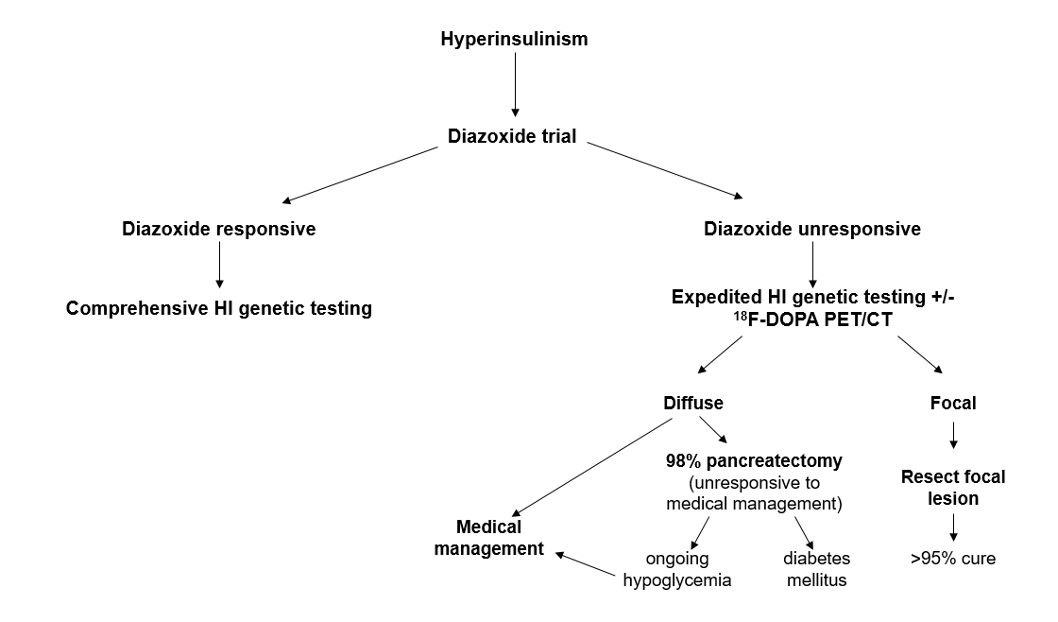
Figure 6. HI Diagnostic and Treatment Algorithm. Once HI is diagnosed, effectiveness of diazoxide treatment needs to be assessed. Responsiveness to diazoxide is shown by demonstrating the ability to fast an age-appropriate interval (minimum 9 hours for neonate) with plasma glucose >70 mg/dL and/or generate beta-hydroxybutyrate >2 mmol/L prior to plasma glucose <50 mg/dL. For patients unresponsive to diazoxide, expedited genetic testing is obtained to differentiate diffuse and focal forms of HI. 18F-DOPA PET/CT is performed when genetic testing is suggestive of possible focal disease. For patients with diffuse, diazoxide-unresponsive disease, intensive medical therapy is initiated, with near-total pancreatectomy reserved for medically unresponsive cases. 18F-DOPA PET/CT 18-fluoro-L-3,4-dihydroxyphenylalanine positron emission tomography.
Second-line medical management options include somatostatin analogues – octreotide and the long-acting analog lanreotide - and enteral dextrose. Enteral dextrose is administered as a continuous infusion of 20% dextrose solution via nasogastric or gastrostomy tube (maximum enteral GIR 10 mg/kg/min). Octreotide is a short-acting somatostatin analogue administered multiple times per day subcutaneously (dose range: 2-20 mcg/kg/day, divided every 6-8 hours). Octreotide should not be used in children <2 months of age due to an association with fatal necrotizing enterocolitis. Lanreotide is used in children >1 year of age (administered as 60 mg injection monthly) (41). Several new therapies, including glucagon analogues, oral somatostatin analogues, insulin receptor modulators, and GLP-1 receptor antagonists, are under development (42).
In diffuse congenital hyperinsulinism cases that do not respond to medical treatment, near-total pancreatectomy is performed. Near-total pancreatectomy is palliative, not curative; significant hypoglycemia persists in up to 50% of children. Additionally, this procedure is complicated by development of exocrine pancreatic insufficiency and late-onset post-pancreatectomy diabetes.
KATP Hyperinsulinism (KATP HI)
The most common and severe form of congenital hyperinsulinism, KATP HI, is caused by inactivating mutations in ABCC8 or KCNJ11. Both located on chromosome 11p15.1, these genes each encode a subunit of the pancreatic beta-cell KATP channel. Inactivation of the KATP channel results in beta-cell depolarization (Figure 5), and inappropriate secretion of insulin. In addition to severe fasting hypoglycemia, KATP HI is characterized by protein-induced hypoglycemia mediated by GLP-1 receptor signaling (6).
KATP HI is histologically classified as diffuse, in which all beta-cells are affected, focal, in which a localized subset beta-cells are affected, or less commonly, atypical (also termed Localized Islet Nuclear Enlargement [LINE-HI]). Focal KATP HI results from a “two hit” mechanism involving paternal transmission of a recessive KATP HI mutation and a somatic loss of heterozygosity for the maternal 11p15 region yielding imbalanced expression of imprinted tumor suppressor genes (43). Dominant or recessive mutations in KATP HI genes cause diffuse KATP HI. Often, children with atypical histology (LINE-HI) do not have an identifiable mutation in standard sequencing of peripheral blood; however, low-level mosaic mutations are increasingly recognized as causative (44).
Infants with diffuse forms of KATP HI are often born large for gestational age and present with symptomatic hypoglycemia in the first few days of life. While infants with the focal form of KATP HI are more likely to have normal birth weight and present at an older age than those with diffuse disease, the two histologic forms are often indistinguishable in clinical practice (45). The recessive, focal, and atypical (LINE-HI) forms of KATP HI are usually not responsive to diazoxide. In contrast, dominant KATP HI may be diazoxide responsive due to retained partial function of KATP channels.
For infants with diazoxide-unresponsive hyperinsulinism, the goal is to identify those children with focal KATP HI since these children can be cured by surgery. Findings of a single recessive KATP mutation in the father, but not the mother, will have a 94% positive predictive value for focal hyperinsulinism (36) in the symptomatic infant. When suspected, 18-fluoro-L-3,4-dihydroxyphenylalanine positron emission tomography (18F-DOPA PET) is used to localize the focal lesion and guide surgical excision (46,47). Surgical cure rates for focal hyperinsulinism exceed 95%, when performed by experienced surgeons at a multidisciplinary hyperinsulinism center (48).
For patients with diffuse KATP HI, intensive medical management is attempted, initially with continuous enteral dextrose (maximum enteral GIR 10 mg/kg/min). Octreotide can be added after 2 months of age (as above). Surgical management (near-total pancreatectomy with gastrostomy tube placement) is reserved for patients who fail to achieve adequate glycemic control with intensive medical therapy because this procedure is not curative and carries long-term risks of exocrine pancreatic insufficiency and insulin-dependent diabetes mellitus (45,49). Notably, regardless of initial treatment, the severity of hypoglycemia tends to improve with age in children with diffuse KATP HI. Determination of optimal management strategy thus depends on balancing short/intermediate-term risks of suboptimal hypoglycemia control and labor-intensive home management with potential further increased risk of long-term risk of adverse neurodevelopmental outcomes in the case of medical management versus inevitable post-pancreatectomy complications in the case of surgery. Management decisions are thus informed by the initial severity of hypoglycemia, responsiveness to intensive medical therapy, and the preferences and values of the child’s family. These children thus require specialized care and should be referred to a multidisciplinary hyperinsulinism center.
Glycemic status should be assessed in all children following pancreatectomy. Those children who do not require dextrose to maintain euglycemia postoperatively should undergo fasting study to demonstrate whether they are cured or need further medical management (Table 7) (32). Cure of HI can be demonstrated by the development of hyperketonemia (beta-hydroxybutyrate >1.8 mmol/L) prior to development of hypoglycemia (glucose <50 mg/dL).
Later in life, dysregulated insulin secretion in diffuse KATP HI may additionally manifest as gestational, and in some cases insulin-dependent, diabetes mellitus even in the absence of prior pancreatectomy. This finding has been observed both in dominant and recessive forms of diffuse KATP HI (50,51). Mechanisms underlying the switch from hypoglycemia in early life to hyperglycemia later on remain incompletely understood. Impaired glucose-stimulated insulin secretion has been implicated based upon findings of reduced first-phase and maximal glucose-stimulated insulin secretion during oral glucose tolerance testing in adults with dominant KATP (51), and reduced acute insulin response to graded IV glucose infusion in children with recessive KATP HI (50). Impaired insulin secretory response to glucose (beta-cell “glucose blindness”) has also been proposed to underlie progression from hyperinsulinemic hypoglycemia to hyperglycemia in maturity-onset diabetes of the young (MODY) type 1 and type 3 (discussed below) (52-54). In mouse models of KATP HI, increased beta-cell apoptosis has been observed prior to the development of hyperglycemia, suggesting that a progressive decline in beta-cell mass may also play a role (55).
GCK Hyperinsulinism (GCK HI)
Dominant activating mutations in the GCK gene (chromosome 7p13), encoding glucokinase, cause hyperinsulinism by increasing the affinity of glucokinase for glucose, thereby lowering the threshold for pancreatic beta-cell insulin secretion (Figure 5). Clinical phenotype is highly variable, even within the same family. Presentation ranges from severe hypoglycemia at birth with large for gestational age birth weight, to milder hypoglycemia detected in adulthood. Response to diazoxide is also variable. In severe cases, near-total pancreatectomy may be required.
HK1 Hyperinsulinism (HK1 HI)
The HK1 gene (chromosome 10q22.1) encodes hexokinase, which has a much higher affinity for glucose than glucokinase. Normally, expression of HK1 is suppressed in pancreatic beta-cells postnatally. Dominantly inherited variations in non-coding regions of the HK1 gene result in aberrant beta-cell expression of hexokinase. As a consequence, appropriate suppression of insulin secretion at low plasma glucose levels is impaired, resulting in hypoglycemia (56). The clinical phenotype is variable. Most affected individuals present in the first weeks of life, but delayed presentation is not infrequently reported. Severity ranges from severe symptoms at birth to mild symptoms detected only following identification of an affected relative. Response to diazoxide is similarly heterogeneous and some affected individuals have required pancreatectomy (56,57).
GDH Hyperinsulinism (GDH HI)
Dominant activating mutations in the GLUD1 gene (chromosome 10q23.2), encoding glutamate dehydrogenase (GDH), cause the hyperinsulinism hyperammonemia syndrome. Constitutively hyperactive GDH results in increased oxidation of glutamate to ammonia and alpha-ketoglutarate, the latter of which enters the citric acid cycle, thereby increasing the ATP-to-ADP ratio, triggering insulin secretion (58). Profound protein-induced hypoglycemia occurs because the amino acid leucine is potent allosteric activator of GDH (Figure 5).
Individuals with GDH HI typically have normal birth weight and later age of presentation (median age 4-5 months). In addition to fasting and protein-induced hypoglycemia, GDH HI is associated with an increased risk of epilepsy as well as higher rates of intellectual impairment, both of which appear to be independent of hypoglycemic neurological injury (59). Rates of learning and intellectual impairments have ranged from 37-77% in studies of children with GDH HI in which these outcomes were measured (59-61). The characteristic seizure type observed is generalized, atypical absence (62). These seizures occur in the setting of euglycemia and notably are distinct from the focal-onset seizures that may occur following hypoglycemic brain injury (62). Aberrant GDH activity in the central nervous system, and resultant altered glutamate balance, have been hypothesized to underlie these neurological differences. However, the mechanism by which these deficits occur has not yet been definitively established.
Persistent hyperammonemia (ammonia elevation 2-5 the normal range) due to GDH overactivity in the kidney is a cardinal feature but appears to be clinically asymptomatic (63). Importantly, affected individuals do not manifest symptoms of acute hyperammonemia encephalopathy (lethargy, headache, vomiting) as do children with urea cycle disorders. Plasma ammonia levels are not influenced by dietary protein load, nor are they lowered by typical therapies for hyperammonemia (sodium benzoate, N-carbamyl-glutamate) (64). The finding of hyperammonemia is thus useful in establishing a clinical diagnosis of GDH HI. However, once identified, plasma ammonia levels do not require serial monitoring or targeted intervention.
Hypoglycemia in GDH HI is usually well-managed with diazoxide and dietary modification. While dietary protein should not be restricted, it is imperative that affected individuals consume carbohydrate prior and concomitant to protein intake. Most individuals with GDH HI will respond to a 2:1 gram ratio of carbohydrates to protein to prevent protein induced hypoglycemia but some will need ratios of 3:1. Typically breast milk or formula milk will not trigger hypoglycemia, but once solid foods are introduced, especially meats, care must be taken to prevent protein induced hypoglycemia. The cardinal warning sign of this is patients in whom glucose control was adequate including fasting overnight but who suddenly develop post prandial hypoglycemia.
A formalized protein challenge test (Table 8) may be performed to evaluate adequacy of treatment in individuals with GDH HI. This test is also helpful to evaluate protein sensitivity in KATP HI, HADH HI (below), and congenital HI with negative genetic testing. A drop in the plasma glucose of more than 10 mg/dL or below 70 mg/dl is considered an abnormal result (evidence of protein sensitivity). Because this test must be done following a 3-4 hour fast to ensure the glucose levels are stable prior to starting the test it can only be done in patients whose fasting glucose is controlled. Patients who are very protein sensitive may drop the plasma glucose in the first 15-60 minutes.
|
Table 8. Oral Protein Challenge Test Procedure
|
|
Make patient NPO for food and carbohydrate containing fluids for 3-4 hours pre procedure
|
|
Insert peripheral intravenous line and have dextrose 10% available for emergency use
|
|
Measure baseline glucose and insulin
|
|
Administer 1g/kg of food protein PO over 10-15 minutes. Alternatively, protein powder may be used (administered via nasogastric or gastrostomy tube).
|
|
Measure glucose and insulin every 30 minutes for 3 hours
|
|
If the plasma glucose drops to <60 mg/dL terminate test with carbohydrate drink of 15 g or intravenous push of 200 mg/kg (2ml/kg D10%)
|
HADH Hyperinsulinism (HADH HI)
Inactivating mutations in HADH (chromosome 4q25) cause a rare, autosomal recessive form of diazoxide-responsive hyperinsulinism. The HADH gene encodes short chain 3-hydroxyacyl-coenzyme A dehydrogenase (HADH, also referred to as SCHAD) which inhibits GDH and also plays a role in mitochondrial fatty acid beta-oxidation. Loss of normal GDH inhibition results in a similar phenotype as GDH HI with fasting and protein-induced hyperinsulinemic hypoglycemia, but without hyperammonemia. Elevated levels of 3-hydroxybutyryl-carnitine in plasma and 3-hydroxyglutaric acid in urine may serve as clues to the diagnosis in some but are not universally observed (65). Treatment is with diazoxide and dietary modification as in GDH HI.
HNF1A and HNF4A Hyperinsulinism (HNF1A and HNF4A HI)
Dominant inactivating mutations in the genes encoding transcription factors hepatocyte nuclear factor 1 alpha and hepatocyte nuclear factor 4 alpha, cause both hyperinsulinism and maturity-onset diabetes of the young (MODY3 and MODY1, respectively). Affected infants are often born large for gestational age. Severity of hyperinsulinism varies from transient neonatal hypoglycemia to persistent hyperinsulinism requiring treatment into school age (66). The p.Arg63Trp HNF4A mutation is associated with an additional extra-pancreatic phenotype of renal Fanconi syndrome and hepatic dysfunction (66,67). Response to diazoxide is often robust. Establishing the diagnosis has important implications both for the affected child, who requires ongoing surveillance after hyperinsulinism resolution due to the risk of developing diabetes later in life, and for family members carrying the mutation who could benefit from early diagnosis of diabetes or targeted therapy (i.e., sulfonylureas).
MCT1 Hyperinsulinism (MCT1 HI)
Dominant mutations in the non-coding regions of SLC16A1 (chromosome 1p13.2), encoding monocarboxylate transporter 1 (MCT1), result in exercise-induced hyperinsulinism (68). MCT1
catalyzes transport of monocarboxylates, such as lactate, pyruvate and beta-hydroxybutyrate, across the plasma membrane. Normally, MCT1 expression is disallowed in pancreatic beta cells. Promoter-activating mutations induce inappropriate MCT1 expression in beta cells, permitting uptake of pyruvate during exercise when plasma pyruvate is elevated. Pyruvate metabolism leads to increased ATP production, and resultant pyruvate-stimulated (exercise-induced) insulin release despite hypoglycemia (69). Response to diazoxide is variable, and carbohydrate loading prior to exercise is recommended to control hypoglycemia. Nonfunctional variants in the coding regions of SLC16A1 cause ketotic hypoglycemia (see section on Pathologic Ketotic Hypoglycemia and Ketone Utilization and Transport Defects). This is a very uncommon clinical entity.
UCP2 Hyperinsulinism
Dominant inactivating mutations in the UCP2 gene (chromosome 11q13.4) encoding uncoupling protein 2 (UCP2) have been associated with a diazoxide-responsive form of hyperinsulinism (70). Following initial reports, the prevalence of UCP2 variants in the general population has been found to be high, raising the role of UCP2 variants as a monogenic cause of hyperinsulinism into question (71).
SYNDROMIC HYPERINSULINISM
Hyperinsulinism is a feature of several recognized syndromes. These include the overgrowth syndromes: Beckwith-Wiedemann, Sotos, Simpson-Golabi-Behmel, and Perlman syndromes, as well as Kabuki syndrome, Turner syndrome, Tyrosinemia type 1, Usher syndrome type 1C (in which there is contiguous gene deletion at 11p15.2 including ABCC8), Rubinstein-Taybi syndrome, and several congenital disorders of glycosylation, among others (72). Beckwith-Wiedemann, Kabuki, and Turner syndromes are most frequently observed (72), and are discussed in the sections below along with the congenital disorders of glycosylation associated with hyperinsulinism.
Beckwith-Wiedemann Syndrome
Beckwith-Wiedemann syndrome, caused by genetic or epigenetic changes on chromosome 11p15.5, is an overgrowth disorder with classical features of macrosomia, macroglossia, hemihypertrophy, abdominal wall defects, and embryonal tumors. Due to the varying molecular etiologies, and the postzygotic nature of the epigenetic changes in most cases, affected children can present with a variety of clinical features along a spectrum of “classic” to “atypical” to isolated lateralized overgrowth (73). Hyperinsulinism occurs in approximately 50% of all cases and is the presenting symptom of Beckwith-Wiedemann syndrome in 16% of cases (73). While the hyperinsulinism is typically mild in severity and resolves within the first days to years of life, in roughly 5% of cases (particularly cases due to paternal uniparental isodisomy for chromosome 11p), it can be severe and persistent, requiring pancreatectomy (74). Hyperinsulinism persisting beyond the first week of life is considered a cardinal feature of Beckwith-Wiedemann syndrome (75). Thus, all patients presenting with hyperinsulinism should be evaluated for subtle limb asymmetry and other suggestive features (Table 9) (75). Molecular testing for investigation of Beckwith-Wiedemann syndrome should be considered in these patients. Additional suggestive features in the context of a hyperinsulinism evaluation include marked pancreatic enlargement and diffuse 18-F-DOPA uptake, or alternatively, very large areas of focal 18-F-DOPA uptake, on PET/CT imaging (76). In the latter setting, areas of increased involvement on PET imaging may be used to tailor the extent of pancreatectomy. Histologically, resected pancreatic tissue in cases of Beckwith-Wiedemann syndrome are characterized by a dramatic increase in endocrine tissue relative to the amount of exocrine tissue, often with a loss of the normal lobular architecture, and prominent trabecular arrangement of endocrine cells (76,77). Since the genetic or epigenetic changes causing Beckwith-Wiedemann syndrome usually occur during embryonal development, yielding a mosaic pattern, failure to detect these changes in blood (leukocytes) is thus not conclusive, and additional testing (e.g., from skin or pancreas) may be required.
|
Table 9. Clinical Features of Beckwith-Wiedemann Syndrome (BWS)
|
|
Cardinal features (2 points per feature)
|
|
Macroglossia
|
|
Exomphalos
|
|
Lateralized overgrowth
|
|
Multifocal and/or bilateral Wilms tumor or nephroblastomatosis
|
|
Hyperinsulinism (lasting >1 week and requiring escalated treatment)
|
|
Pathology findings: adrenal cortex cytomegaly, placental mesenchymal dysplasia or pancreatic adenomatosis
|
|
Suggestive features (1 point per feature)
|
|
Birthweight >2SDS above the mean
|
|
Facial nevus simplex
|
|
Polyhydramnios and/or placentomegaly
|
|
Ear creases and/or pits
|
|
Transient hypoglycemia (lasting <1 week)
|
|
Typical BWS tumors (neuroblastoma, rhabdomyosarcoma, unilateral Wilms tumor, hepatoblastoma, adrenocortical carcinoma or phaeochromocytoma)
|
|
Nephromegaly and/or hepatomegaly
|
|
Umbilical hernia and/or diastasis recti
|
|
Score interpretation
|
|
≥4: Clinical diagnosis of classical BWS. Genetic testing for investigation and diagnosis of BWS recommended. Note that clinical diagnosis does not require the molecular confirmation of an 11p15 anomaly.
|
|
≥2: Merit genetic testing for investigation and diagnosis of BWS
|
|
Patients with a score of ≥2 with negative genetic testing should be considered for an alternative diagnosis and/or referral to a BWS expert for further evaluation
|
Adapted from Brioude F. et al, Expert consensus document: Clinical and molecular diagnosis, screening and management of Beckwith-Wiedemann syndrome: an international consensus statement. Nat Rev Endocrinol. 2018;14(4):229-249 (75).
Kabuki Syndrome
Kabuki syndrome is caused by dominant mutations in KMT2D (~75% of cases) or X-linked mutations in KDM6A. While the true incidence of hyperinsulinism in Kabuki syndrome is unknown, it is increasingly recognized as a feature of this disorder, often as the presenting feature (78). Clinically, affected children have distinctive facial features – long palpebral fissures with eversion of the lateral lower eyelid, arched eyebrows, and prominent ears – skeletal anomalies, intellectual disability, and post-natal growth deficiency. Congenital heart defects, genitourinary and gastrointestinal anomalies, and immune dysfunction may also be observed. Haploinsufficiency of KDM6A has been proposed as the pathophysiologic mechanism of hyperinsulinism, and human islets treated with KDM6A inhibitor demonstrate abnormal insulin secretion (79). Most cases are diazoxide-responsive. Somatostatin analogues have been used with success in cases where diazoxide was contraindicated due to cardiac comorbidity.
Turner Syndrome
The incidence of hyperinsulinism in infants with Turner syndrome is roughly 50 times that expected in the general population (79). As in Kabuki syndrome, haploinsufficiency of KDM6A (located on X chromosome) has been proposed as the underlying mechanism. Many, but not all, children with Turner syndrome and associated hyperinsulinism are diazoxide-responsive.
FOXA2 Hyperinsulinism
Inactivating mutations in FOXA2, encoding the transcription factor forkhead box A2 (Foxa2), have been associated with a clinical phenotype of congenital hyperinsulinism, hypopituitarism, and endodermal-derived organ anomalies (80,81). Treatment with both pituitary hormone replacement and diazoxide has been reported to be effective.
Congenital Disorders of Glycosylation
Monogenic defects in the synthesis of oligosaccharides are responsible for congenital disorders of glycosylation (CDG), over 100 of which have been identified to date. Endocrine dysfunction (including growth failure, hypothyroidism, hypogonadotropic hypogonadism) is common to many congenital disorders of glycosylation because both endocrine peptides and their receptor targets are glycosylated. These disorders have a wide phenotypic spectrum, and three have been associated with hyperinsulinism: phosphomannomutase 2 deficiency (PMM2-CDG, formerly CDG-1a), mannose phosphate isomerase deficiency (MPI-CDG, formerly CDG-1b), and phosphoglucomutase 1 deficiency (PGM1-CDG, formerly CDG-1t, also formerly referred to as GSD XIV). PMM2-CDG is the most common congenital disorder of glycosylation. Hyperinsulinism in PMM2-CDG has been proposed to result from impaired function of beta-cell KATP channels and most cases have been diazoxide-responsive (82). MPI-CDG predominantly manifests with gastrointestinal and hepatic involvement (protein losing enteropathy, liver dysfunction and fibrosis), and hyperinsulinemic hypoglycemia. MPI-CDG is treated with mannose, however hyperinsulinism-specific therapies (e.g., diazoxide) may also be required to adequately manage hypoglycemia (83). PGM1 catalyzes the interconversion of G-1-phos and G-6-phos and is thus involved in glycogenesis, glycogenolysis, and gluconeogenesis. Both fasting ketotic hypoglycemia, due to the role of PGM1 in these metabolic pathways, and post-prandial hyperinsulinemic hypoglycemia, due to a lowered threshold for glucose-stimulated insulin secretion, are observed in PGM1-CDG. Thus, this condition mimics GSD 0 and should be considered in that differential diagnosis. Diagnosis can be established by biochemical or molecular testing. Biochemical methods include analysis of serum transferrin glycoforms (also termed carbohydrate-deficient transferrin analysis) by isoelectric focusing or by mass spectroscopy to determine the number and presence of incomplete sialylated N-linked oligosaccharide residues linked to serum transferrin (84). If biochemical testing is not suggestive of a particular CDG, molecular testing approaches include multigene panels or more comprehensive genomic (whole exome, whole genome) testing.
TRANSIENT AND PERINATAL STRESS-INDUCED HYPERINSULINISM
Transient hyperinsulinism occurs secondary to maternal factors, most commonly gestational diabetes mellitus. In uncontrolled gestational diabetes, hyperglycemia induces fetal hyperinsulinism resulting in macrosomia and hypoglycemia following delivery. Transient hyperinsulinism can also result from maternal use of medications affecting glucose homeostasis, including hypoglycemic agents (e.g., oral sulfonylureas), terbutaline, or propranolol. Hyperinsulinism due to these factors resolves within the first days of life. Resolution can be confirmed by performing a 6-9 hour fast and demonstrating the baby can maintain plasma glucose >60-70 mg/dL throughout. If hyperinsulinism persists beyond 5-7 days of life alternate causes should be sought, particularly perinatal stress-induced hyperinsulinism (see below).
Perinatal factors are also associated with development of perinatal stress-induced hyperinsulinism (PSHI), which has a more prolonged course than transient hyperinsulinism. Neonates with perinatal complications such as birth asphyxia, maternal preeclampsia, prematurity, intrauterine growth retardation, or other peripartum stress may develop PSHI. As previously noted, fetal hypoxia results in decreased trafficking of KATP channels to the beta-cell membrane, decreasing the threshold for insulin secretion (23,85). Hyperinsulinism spontaneously resolves within weeks to months as beta-cell insulin regulation normalizes. Median age of resolution is six months. By definition, PSHI resolves by one year of age. PSHI typically responds to treatment with diazoxide, typically at doses on the lower end of the therapeutic range (5-7.5 mg/kg/day). Rates of adverse effects of diazoxide may be higher in children with PSHI, and empiric initiation of diuretic and close monitoring are paramount (39). Given these factors, it is recommended to start with a diazoxide dose of 5 mg/kg/day, initially, and to increase the dose after 3-5 days of treatment if adequate response is not achieved. Timing of initiating diazoxide in cases of suspected PSHI should be tailored to the infant’s overall clinical course. For infants with ongoing intensive care nursery needs (e.g., intubation, warming bed, parenteral feeds), plasma glucose support with IV or enteral dextrose-containing fluids offers optimal initial management, especially as some infants will demonstrate resolution of hyperinsulinism before they are otherwise prepared for hospital discharge. In these cases, repeat fasting evaluation should be performed prior to discharge to assess for resolution versus need for initiation of targeted treatment. As above, in these at-risk infants in whom hypoglycemia is considered likely to resolve within a short time, resolution can be confirmed by performing a 6-9 hour fast and demonstrating the baby can maintain plasma glucose >60-70 mg/dL throughout. Diazoxide should be initiated for infants approaching discharge in whom hyperinsulinemic hypoglycemia has not yet resolved, and safety fast (Table 7) should be performed to confirm adequate diazoxide efficacy. While the diagnosis of PSHI may be suspected by the clinical history, it is established only when hyperinsulinism resolution is confirmed by a repeat fasting test after treatment has been discontinued, cure fast (Table 7).
ACTIVATING MUTATIONS IN THE INSULIN SIGNALING PATHWAY
Activating mutations in insulin signaling pathway genes, including AKT2, AKT3, and PIK3CA, cause hypoglycemia with biochemical findings of inappropriate insulin action, but with low or absent plasma insulin levels (86). Asymmetric somatic overgrowth may serve as a clinical clue to the diagnosis. Frequent feedings or continuous enteral dextrose are effective treatments.
Insulinoma
Insulinomas are pancreatic neuroendocrine tumors. The incidence of pediatric insulinoma is unknown, however, these lesions are less common in children than in adults (1-3 cases per million per year) and are thus exceedingly rare. While most pediatric cases present in adolescence, presentation as young as 2 years of age has been described.
Insulinomas are typically benign, solitary lesions. They can occur sporadically, or in association with multiple endocrine neoplasia, type 1 (MEN1). The frequency of MEN1 mutations in children with insulinoma has been reported to range 26-42% (87,88), which is higher than that in adults (5-10% in adults) (89). Clinically, insulinomas typically manifest with recurrent episodes of fasting hypoglycemia associated with neuroglycopenic symptoms. Weight gain is commonly noted at presentation, and occurs due to increased carbohydrate intake to treat symptoms of hypoglycemia (88). Notably, however, hypoglycemia unawareness is common. This is because repeated and prolonged hypoglycemia episodes can both decrease the counter regulatory hormonal response to hypoglycemia and induce unawareness of the autonomic and neuroglycopenic symptoms of hypoglycemia (90). Consequently, delays in establishing the diagnosis and initial misdiagnosis with neurologic and psychiatric disorders are not uncommon (91).
Suppressed beta-hydroxybutyrate, free fatty acids, and IGF-BP1, with inappropriately elevated proinsulin, insulin, and c-peptide levels at the time of hypoglycemia are consistent with the diagnosis. However, these biochemical findings do not differentiate insulinoma from sulfonylurea ingestion or congenital hyperinsulinism. Consequently, surreptitious use of insulin secretagogues (discussed in the section Exogenous hypoglycemia below) must be excluded in all suspected cases of insulinoma. Once the diagnosis is made, localization of the insulinoma is critical to direct the definitive treatment, surgery. Various imaging modalities have been used, including endoscopic ultrasound, computerized tomography (CT), magnetic resonance imaging (MRI), single-photon emission CT (SPECT), positron emission tomography (PET) and intraoperative ultrasound, each with variable sensitivity. The addition of GLP-1 receptor agonists (exendin-4) has increased the sensitivity of nuclear imaging modalities for detecting insulinomas, and exendin-4 PET/CT appears to be more sensitive than exendin-4 SPECT/CT (92). Historically, arterial calcium stimulation with venous insulin sampling was used, however, these invasive procedures have become less common with improvements in the imaging modalities available. Insulinomas are typically small lesions measuring <1 cm, and multiple lesions may be present. Preoperative localization can be challenging, and use of multiple imaging modalities may be required.
Diazoxide may be effective treatment in patients awaiting surgery or for whom the lesion cannot be localized. Surgical excision is curative, and prognosis is generally excellent. Genetic testing for MEN1 should be conducted in all patients, and appropriate screening should be initiated if a mutation is found. Insulinomas may be recurrent, with higher risk of recurrence in those with MEN1. For more information on histopathology, risks of malignancy, and suggested follow up protocols see the chapter entitled “Insulinoma” in the Diffuse Hormonal Systems and Endocrine Tumor Syndromes section of Endotext (93).
Autoimmune Hypoglycemia
Autoimmune hypoglycemia may result from the development of antibodies to insulin, referred to as Hirata disease, or to the insulin receptor. Onset may be triggered by viral infection or medication in a susceptible individual, and association with specific HLA haplotypes has been reported. Biochemically, plasma beta-hydroxybutyrate and free fatty acids are inappropriately low at the time of hypoglycemia, and c-peptide is suppressed. When autoimmune hypoglycemia occurs due to antibodies to insulin, plasma insulin levels may be very high (>1000 pmol/L), due to interference of insulin antibodies with the assay. Detection of insulin antibodies can confirm the diagnosis in patients naïve to exogenous insulin, which must be excluded. Autoimmune hypoglycemia is a spontaneously remitting condition. Various immune modulating treatments, including glucocorticoids, plasmapheresis, intravenous immunoglobulin, and rituximab have been utilized. A comparison of the different therapeutic approaches has not been conducted, owing to the rarity of this condition and its self-resolving course.
Post-prandial Hypoglycemia (Late Dumping Syndrome)
Post-prandial hypoglycemia (late dumping syndrome) occurs due to disrupted gastric motility, most commonly as a consequence of gastrointestinal surgery. In children, fundoplication surgery is implicated most frequently, whereas in adults, bariatric surgery is the most common cause. Hypoglycemia usually develops 1-3 hours after a meal, and results from imbalance between glucose absorption and insulin secretion. Rapid gastric emptying and intestinal absorption of carbohydrate, result in early hyperglycemia and exaggerated GLP-1 secretion, both of which trigger an exaggerated insulin response (94). The diagnosis can be confirmed by serial monitoring of insulin and glucose following feeding or with formal mixed meal tolerance testing. Fasting studies may be required to fully distinguish fasting hypoglycemia from post-prandial hypoglycemia (which may be comorbid in some patients). When conducting fasting studies in children with risk factors for (gastrostomy tube placement, Nissen fundoplication, esophageal or ileal surgery), or suspected, post-prandial hypoglycemia, it is important to slowly taper off feeds to avoid confounding of the fasting tolerance assessment by “dumping.” Treatment is often dietary manipulation. Decreasing the volume or rate of feeding, tapering the rate of feeding prior to stopping, increasing dietary fat, and decreasing simple carbohydrates may all be helpful. In older children, acarbose, which acts to slow carbohydrate digestion, has been used successfully. The efficacy of these approaches should be confirmed by repeat serial monitoring of glucose following at least two feeds to ensure plasma glucose is maintained within target range. In some cases, continuous enteral feeds, or enteral dextrose may be required. Typical treatments for genetic forms of HI such as diazoxide or octreotide generally have been unsuccessful. However, some of the novel therapies for HI under development (42,95), are also being studied in post bariatric surgery hypoglycemia.
Exogenous
Exogenous, factitious, and drug-induced hypoglycemia all refer to hypoglycemia that results from the use (intentional or accidental) of insulin or insulin secretagogues. Clinical clues to the diagnosis may include unusual or inconsistent histories, such as severe, recurrent hypoglycemia without typical precipitating factors (e.g., fasting, illness), or access to antidiabetic agents. Biochemical findings of elevated plasma insulin with suppressed c-peptide (or an insulin to c-peptide molar ratio >1) confirm exogenous insulin administration. Various insulin assays differ in their sensitivity to detect insulin analogs, so it is important to understand the detection abilities – and limitations – of the assay used. Failure to do so may result in incorrectly excluding the diagnosis of exogenous insulin administration. Information on the cross-reactivity of commercially available insulin formulations with the ordered insulin assay is available on the test information page of most laboratories and can also be requested. For example, currently, cross-reactivity of most insulin assays with glulisine is very low (96). When clinical suspicion is high, sending specimens for testing using different immunoassays with different insulin formulation cross-reactivity profiles may be helpful. In contrast, insulin secretagogues (e.g., sulfonylureas, meglitinides, GLP-1 receptor agonists) stimulate both insulin and c-peptide secretion. Consequently, the biochemical evaluation of hypoglycemia due to insulin secretagogue use may be indistinguishable from that of insulinoma. Specialized toxicology panels, including measurement of plasma or urine sulfonylureas, may be required to confirm the diagnosis. A high index of suspicion, and knowledge of hypoglycemia agents available in the home can help guide the evaluation. As with exogenous insulin administration, the laboratory evaluation is subject to pitfalls in sensitivity and interpretation, and consultation with the laboratory is recommended (97).
Hypoglycemia Due to Growth Hormone and Cortisol Deficiencies
Deficiencies in the counter regulatory hormones, growth hormone and cortisol – either in isolation, or more commonly, in combination – cause hypoglycemia. Growth hormone acts to stimulate lipolysis and decrease peripheral glucose uptake. Cortisol stimulates gluconeogenesis and release of gluconeogenic substrates, including alanine, from muscle. Although secretion of both growth hormone and cortisol is triggered by falling plasma glucose, findings of a single low growth hormone or cortisol level at the time of hypoglycemia has poor specificity for deficiency of either hormone (18,19). Stimulation testing may be needed to confirm the diagnosis.
In the older child, hypoglycemia due to growth hormone and/or cortisol deficiency is ketotic. However, in neonates, the biochemical picture may mirror that of hyperinsulinism due to both inappropriate conservation of glycogen reserves during hypoglycemia and immature ketogenesis at this age.
HYPOPITUITARISM
Hypopituitarism may be congenital or acquired. Congenital hypopituitarism may result from malformation of the hypothalamus and pituitary (e.g., holoprosencephaly, septo-optic dysplasia) or from mutations in transcription factors vital for normal hypothalamic-pituitary development (see the chapter entitled “Genetic Etiology of Congenital Hypopituitarism” in the Pediatric Endocrinology section of Endotext (98)). As discussed above, mutations in FOXA2cause both hypopituitarism and hyperinsulinism. Acquired hypopituitarism may develop following trauma, infection, tumor, intracranial surgery, or radiation. In neonates, hypoglycemia is often a presenting feature of panhypopituitarism. Other clinical clues in neonates include unconjugated hyperbilirubinemia, nystagmus, midline developmental defects (e.g., cleft lip and palate), and in males, micropenis or smaller than average penis. An MRI of the hypothalamic-pituitary region is essential and often reveals an ectopic “bright spot” indicating disruption of the normal descent of the neurohypophysis with interruption of hypothalamic releasing factors that regulate hormone secretion. In such cases, prolactin concentration may be elevated, whereas GH, TSH and ACTH are suppressed. In older children, the diagnosis may be suspected based upon clinical history, growth failure, or neuroimaging findings. Hypoglycemia is found more commonly in neonates with multiple pituitary hormone deficiencies compared to isolated growth hormone deficiency and therefore careful consideration of multiple hormonal deficiencies must be given when growth hormone deficiency is found to be the cause of hypoglycemia in neonates (99). Hypoglycemia is treated by replacement of the deficient hormones. From a practical aspect some neonates and infants will need a higher-than-expected dose of cortisol replacement and may even need growth hormone treatment divided twice daily. A safety fast (Table 7) should be performed prior to discharge to ensure the therapy is effective.
ISOLATED GROWTH HORMONE DEFICIENCY
Growth hormone deficiency has an estimated prevalence of between 1:4,000-1:10,000. Growth failure is the most common presenting feature, but this typically does not manifest until after the first year of life. Other clinical clues include midface hypoplasia and altered body composition with truncal adiposity. Most cases of isolated growth hormone deficiency are idiopathic. Genetic, anatomic, and acquired causes are detailed in the chapters entitled “Disorders of Growth Hormone in Childhood” and “Genetic Etiology of Congenital Hypopituitarism” in the Pediatric Endocrinology section of Endotext (98,100). Growth factors (IGF-1 and IGFBP-3) are low for age and bone age is delayed. The diagnosis is confirmed via stimulation testing. Treatment is with recombinant growth hormone. Importantly, depending on the underlying etiology, there is the potential for other pituitary hormone deficiencies to develop over time. Periodic screening of pituitary function is thus recommended.
ISOLATED CORTISOL DEFICIENCY
Cortisol deficiency may result either from defects in the ACTH signaling pathway or from congenital (e.g., congenital adrenal hyperplasia or hypoplasia) or acquired (e.g., bilateral adrenal hemorrhage) defects in adrenal steroidogenesis. Isolated ACTH deficiency is extremely rare. Several genetic etiologies have been described to date, including mutations in TBX19, POMC, PCSK1, and NFKB2 (see the chapter entitled “Genetic Etiology of Congenital Hypopituitarism” the Pediatric Endocrinology section of Endotext (98)). Of these, mutations in TBX19 are most frequently detected. Affected neonates universally present with severe hypoglycemia, often with hypoglycemic seizures. The mortality rate is up to 25%. In contrast to isolated ACTH deficiency, children with adrenal insufficiency due to ACTH resistance or primary adrenal disorders will have elevated plasma ACTH levels and associated skin hyperpigmentation. Primary disorders of the adrenal gland may also manifest with hyponatremia, hyperkalemia, and/or ambiguous genitalia. Congenital adrenal hyperplasia, and other disorders of the adrenal gland are detailed in the chapter entitled “Congenital Adrenal Hyperplasia” in the Adrenal Disease and Function section of Endotext (101). Treatment is with cortisol replacement. Initially, stress dose concentrations of hydrocortisone should be used.
GLYCOGEN STORAGE DISORDERS
The glycogen storage disorders (GSD) are a group of conditions in which there is either abnormal storage or release of glycogen resulting in hypoglycemia and acidosis. The acidosis may be lactic or ketoacidosis depending on the type of GSD. For the purpose of this discussion, we will include GSD 1 caused by glucose-6-phosphatase (G-6-Pase)deficiency as a glycogen storage disorder although the enzyme also represents the terminal step in gluconeogenesis. The GSDs may affect both liver and muscle glycogen storage and for this chapter we will focus on those with primarily liver expression, which are responsible for the hypoglycemic GSDs.
Under fed circumstances, excess glucose is converted into glycogen and stored in liver and muscle. Liver glycogen (but not muscle glycogen as muscle does not have G-6-Pase) later becomes available during fasting to provide glucose for metabolism in the brain and the glucose dependent tissues (red blood cells and proximal convoluted tubule of the kidney). Glucose is phosphorylated to G-6-Phos by glucokinase and then to Glucose-1-phosphate (G-1-Phos) by phosphoglucomutase. G-1-Phos is the starting point for glycogen synthesis by glycogen synthase (GSD 0, gene GYS2, inheritance autosomal recessive [AR]) to form chains with alpha 1-4 linkages. Branch points in these chains are formed by alpha 1-6 linkages approximately every 10 glucose units. During the early stages of fasting, glycogen is broken down by glycogen phosphorylase and then by glycogen debrancher enzymes. First the alpha 1-4 links are cleaved into G-1-Phos by glycogen phosphorylase (GSD VI, gene PGYL, inheritance AR) until 4 glucose units remain and then the debrancher transferase (GSD III, gene AGL, inheritance AR) moves the last 3 alpha 1-4 linked glucose over to another chain and then cleaves the alpha 1-6 branch point releasing a single glucose molecule. At this stage, the G-1-phos molecules are then converted to G-6-phos which then either undergoes glycolysis for energy or dephosphorylation by G-6-Pase (GSD 1, gene GCPC inheritance AR) and released into the blood stream as glucose.
Glycogen Storage Disease Type 0
GSD 0 is caused by deficiency of glycogen synthetase, which is encoded by the GYS2 gene on chromosome 12p12.2 and inherited in an autosomal recessive manner. The main biochemical manifestations are both fasting ketotic hypoglycemia and postprandial hyperglycemia and hyperlactatemia (102). This is due to the inability of the liver to store excess postprandial glucose resulting in hyperglycemia and glycosuria. The G-6-phos undergoes glycolysis to pyruvate and then lactate. Later as fasting progresses, there are no liver glycogen stores available, and when the glucose drops below 85 mg/dL, insulin secretion is switched off and early ketosis occurs resulting in ketotic hypoglycemia. This typically happens after 6-12 hours of fasting. Dependence on gluconeogenesis also results in over-utilization of protein, and protein deficiency is common.
Clinical features of GSD 0 may range from asymptomatic to recurrent episodes of ketotic hypoglycemia. Typically, as infants transition off nighttime feeding, episodes of fasting hypoglycemia with hyperketonemia occur. Patients may also present during mild gastrointestinal disorders with ketotic hypoglycemia. They have no hepatomegaly and a normal critical sample with elevated counter regulatory hormones, elevated free fatty acids and ketones. They may have short stature, a history of failure to thrive and hyperlipidemia. In the most severe end of the spectrum, they may present with seizures and developmental delay in addition to hypoglycemia after a very short duration fasting. The condition should be suspected in children with a history of recurrent ketotic hypoglycemia or post prandial hyperglycemia and fasting ketonemia.
Diagnosis is made by demonstrating shortened fasting tolerance with ketotic hypoglycemia (103) (typically <12 hours in children under 7 years of age and <18 hours in adolescents). In addition, an oral glucose tolerance test (OGTT) performed after an overnight fast using 1.75 g/kg up to 75 g (one of the few appropriate uses of the OGTT for diagnosis of etiology of hypoglycemia) will demonstrate postprandial hyperglycemia with elevated lactic acid. Finally, a fed (2 hours post meal) glucagon stimulation test will fail to show elevated glucose response to glucagon in the most severe cases but may cause an increase in milder cases. Once the clinical diagnosis is suspected, genetic testing for confirmation of diagnosis is strongly recommended rather than liver biopsy.
Treatment is avoidance of fasting (>3-4 hours), utilizing low glycemic index carbohydrate, and a high protein diet (2-3g/kg/day) during the day with meals and snacks to provide adequate amino acids for gluconeogenesis and overnight dextrose via gastrostomy tube or uncooked cornstarch (UCS) after age 1 year (1.5g/kg every 6 hours overnight). Glycosadeâ a soluble extended-release form of amylopectin cornstarch is available in the US for children over the age of 5 years and may be used in place of uncooked cornstarch. Early diagnosis and treatment may prevent the long-term complications of short stature and osteopenia from the recurrent keto- and lactic acidosis.
Glycogen Storage Disease Type I
This is the most severe of the GSDs and causes profound hypoglycemia because of impaired glycogenolysis and gluconeogenesis with lactic acidosis, hyperuricemia, and hyperlipidemia. Glycogen and triglycerides are stored in the liver resulting in massive hepatomegaly. Long-term consequences of GSD I include hepatic adenoma, renal Fanconi syndrome, renal failure, short stature, and osteoporosis. It occurs in approximately 1:100,000 births (104), and is caused by mutations in the gene for G-6-Pase, G6PC (GSD Ia), or G-6-P translocase 1, G6PT1 (GSD Ib). Under normal circumstances G-6-P translocase 1 transports G-6-Phos into the endoplasmic reticulum, G-6-Pase then converts G-6-P to glucose which is then transported out of the endoplasmic reticulum by GLUT-2 (hence the similarity of Fanconi Bickel syndrome caused by GLUT2 deficiency to GSD 1).
In the postprandial phase, glycogen stored in the liver is broken down to G-6-Phos and from here can enter 3 metabolic pathways: 1) G-6-Phos enters the pentose phosphate shunt resulting in formation of uric acid. 2) G-6-Phos undergoes glycolysis to form pyruvate and then to lactic acid (which is transported to brain and used as fuel for energy production). 3) G-6-Phos undergoes glycolysis and forms acetyl CoA which in turn is converted into malonyl CoA which inhibits carnitine palmitoyl-transferase I leading to decreased oxidation of fatty acids (impaired ketone body production) and increased formation of lipids causing hyperlipidemia. Thus, the cardinal biochemical features of GSD 1 occur (hypoglycemia, hyperuricemia, hyperlactatemia, and hypertriglyceridemia).
Clinical features in the newborn may include hypoglycemia with a good response to feeding, however because many newborns breast feed every 2 hours GSD 1 is rarely identified in the new-born period. Despite the occurrence of hypoglycemia, newborns are rarely diagnosed because many physicians erroneously believe that if the glucose responds to feeding then ongoing glucose testing is not needed. However, if the PES recommendations (21) are followed and persistent glucose levels <50 mg/dL are noted in the first 48 hours of life and <60 mg/dL beyond that, then investigations should be done to determine the etiology. A six-hour fasting study will identify these patients and indeed great care must be taken if suspected because glucose levels typically fall very quickly (2.5-3.5 hours after a feed) and fall deeply to the 20-30 mg/dl range. As infants get older and feeding intervals start to stretch out to >6 hours over night, significant hypoglycemia and lactic acidosis occurs and often the children present because of the tachypnea caused by the acid base disturbance, rather than the hypoglycemia. Neuroglycopenic symptoms are unlikely to occur due to the protective effect of lactate metabolism in the brain, but in circumstances of eating high carbohydrates and a rapid decline in glucose due to insulin release, the lactate levels may be low and the neuroprotective effects of lactate may not occur. In these circumstances seizures, coma, and sudden death may occur. Clinical features of undiagnosed GSD 1a include massive hepatomegaly, short stature, and failure to thrive. Biochemically, patients have high lactate levels (typically >5mmol/L) with hypoglycemia, low ketones, abnormal transaminases, high uric acid, and hypertriglyceridemia.
GSD Ib is caused by defects in the G6PT1 (also known as SLC37A4) gene and has all the same clinical findings as above but in addition has significant neutrophil dysfunction resulting in recurrent skin infections and later in life severe inflammatory bowel disease similar to Crohn disease. This form of GSD 1 represents about 10% of cases of GSD 1 and is an AR inherited condition with the gene found on chromosome 11q23. It is estimated to occur in 1:1,000,000 births.
It is important to note that untreated GSD 1a/b patients rarely present with neuroglycopenic symptoms of hypoglycemia because lactate may be used a fuel for the brain, and they also rarely present with neurogenic symptoms as they develop hypoglycemic unawareness. Thus, the hepatomegaly, short stature, intermittent tachypnea, and the finding of lipemic serum rather than symptoms of hypoglycemia raise the clinical suspicion.
Diagnosis of GSD Ia or Ib is made by finding the clinical features above and performing genetic testing for mutations in G6PC or G6PT1 to confirm the diagnosis.
Treatment is to prevent hypoglycemia by providing glucose every 2.5-3 hours in neonates using fructose/galactose free formula. In GSD 1, fructose and galactose cannot be converted to glucose due to deficiency of G-6-Pase and so if given will worsen lactic acidosis, hyperlipidemia, and hyperuricemia. The goal of treatment is to maintain the plasma glucose >75mg/dl which is the threshold for the secretion of counter-regulatory hormones that drive glycogenolysis and glycolysis to lactic acid. This can be achieved by frequent oral feeding in newborns, with continuous gastrostomy tube feeds overnight, and in older infants (>1 year), toddlers and children giving uncooked starch (UCS) 1- 1.5 g/kg every 3-6 hours including overnight. Glycosadeâ, an extended-release waxy maize cornstarch, can be used in older children to avoid overnight dosing with a duration of action of 6-8 hours, but is not recommended under 5 years of age. Placement of a gastrostomy tube to provide intra gastric glucose overnight often improves the family’s quality of life and the patient’s metabolic control. One caveat to feeding fast acting carbohydrates is that the insulin production suppresses glycogenolysis and production of lactic acid so treated patients have a higher risk of neuroglycopenic symptoms and brain damage from profound hypoglycemia without lactic acidosis if regular therapy is interrupted or delayed. Typical dietary treatments include 65% carbohydrates, 10-15% protein and low fat of approximately 20-25%. A simple rule of thumb when providing IV glucose or continuous enteral glucose is to start at around 8 mg/kg/min and titrate until lactate is <2 mmol/L and glucose >75mg/dl. Chronic provision of excess glucose is not beneficial so care must be taken to find the ideal amount of glucose (to paraphrase Goldilocks, not too much, not too little, just right!). Because hepatic production of glucose generally is equal to brain utilization of glucose, neonates have a higher glucose requirement than children and children than adults due to the relative sizes of the brain to body. Overall, 30-40% of the daily carbohydrate should be long-acting carbohydrates.
Glycogen Storage Disease Type III
GSD III is caused by glycogen debrancher enzyme deficiency. This is encoded by the AGL gene on chromosome 1p21 and is inherited in an autosomal recessive manner (105). It occurs in about 1:100,000 similar to GSD I. GSD IIIa occurs in both liver and muscle and represents the majority of cases in the US while GSD IIIb occurs in liver alone.
Clinical features of GSD III include fasting ketotic hypoglycemia and massive and firm hepatomegaly. Unlike GSD I, GSD III is characterized by normal lactic and uric acid levels and more severe elevations in liver function enzymes. In those with GSD IIIa marked elevations of creatine kinase (CK) appear before the clinical signs of proximal muscle wasting.
Clinical diagnosis is made by the finding of short fasting induced hypoglycemia without lactic acidosis, hepatomegaly, marked elevation of transaminases often with high CK. At the time of hypoglycemia, glucagon will not cause a rise in the plasma glucose but 2 hours after a meal in the fed state it will trigger a rise in glucose unlike GSD I. Genetic testing will identify mutations in the AGL gene.
Treatment is the avoidance of prolonged fasting using UCS in doses of 1-1.5g every 4-6 hours but unlike GSD I, patients with GSD III can utilize amino acids and efficiently carry out gluconeogenesis. Thus a high protein diet in addition to UCS can be very effective in preventing hypoglycemia, minimizing hepatomegaly, improving transaminases, improving growth and even proximal muscle wasting (106). Avoidance of too much carbohydrate is also important to avoid filling the liver, heart, and muscles with glycogen, which can cause long term harm. A hypertrophic cardiomyopathy is a complication of excessive glycogen storage, but the muscle disease appears to be secondary to lack of an energy substrate during activity. A ketotic diet may help improve muscle disease in adults, but it has been associated with worsening of the hepatic transaminases and suboptimal growth in the pediatric population.
Glycogen Storage Disease VI and IX
GSD VI is caused by glycogen phosphorylase and GSD IX by glycogen phosphorylase kinase. Both conditions are remarkably similar and the most common of all the hepatic GSDs. In fact there has been a suggestion that GSD VI and IX together may account for a significant number of children with recurrent ketotic hypoglycemia (107). GSD VI is caused by mutations in PYGL and is inherited in an autosomal recessive form. On the other hand, there are 4 subunits of the phosphorylase kinase enzyme, and each is encoded by different genes including the X-linked gene PHKA2. PHKB mutations lead to an autosomal recessive form of GSD IX as do mutations in PHKG. The most severe form tends to occur in patients with genetic mutations in PHKG.
Clinical manifestations of GSD VI and IX are short stature and recurrent episodes of ketotic hypoglycemia. Unlike the hepatomegaly of GSDI and III in which the examiner will need to start palpating the liver from the anterior superior iliac spine in order not to miss a giant liver, the hepatomegaly of VI and IX may be very subtle or absent. Sometimes in younger children morning ketosis is found with euglycemia because after glycogen stores are depleted, gluconeogenesis and ketogenesis are activated and glucose levels remain normal. Thus, if suspecting GSD VI or IX, check morning beta-hydroxybutyrate and if >0.6 mmol/L after a normal overnight fast this would be suggestive of this disease. Also because of the reliance on gluconeogenesis, prealbumin and total protein levels may be low, and patients may complain of intermittent muscle aches without overt weakness.
Diagnosis is suspected by finding shortened fasting tolerance with accelerated development of ketosis in a patient with mild short stature and hepatomegaly. Mild elevations of liver transaminases and hyperlipidemia may occur. Absence of hepatomegaly does not rule out GSD VI or IX. Genetic testing is the diagnostic test of choice for those with either recurrent episodes of ketotic hypoglycemia or persistent finding of elevated beta-hydroxybutyrate after a simple overnight fast.
Treatment is avoidance of prolonged fasting and administration of UCS 1-2 g/kg at bedtime to prevent early morning ketosis. A high protein diet with complex carbohydrates is effective as gluconeogenesis is unaffected. A program of daytime carbohydrates for intercurrent illness and a plan for IV dextrose with vomiting is encouraged. By the time the child reaches adulthood fasting tolerance is of 12-18 hours overnight without ketones become possible and treatment is rarely required as an adult.
FATTY ACID OXIDATION AND KETONE BODY DISORDERS
Fatty Acid Oxidation Disorders
Fatty acid oxidation (FAO) occurs in the mitochondria and is the major source of energy production in the fasted state i.e., when glucose metabolism is insufficient to provide for energy needs. Typically, FAO starts when glycogen reserves are depleted in conjunction with an increase in gluconeogenesis. As insulin levels fall, hormone-sensitive lipase acts in the adipocytes to release 3 free fatty acids and 1 glycerol from the triacyl-glycerol (triglyceride) stored in the adipose tissue (108). The metabolism of the free fatty acids occurs in 3 major steps: 1) transport into the mitochondria via the carnitine shuttle, 2) long chain fatty acids undergo beta oxidation at the inner mitochondrial membrane, and then 3) medium and short chain fatty acid oxidation (FAO) occurs in the mitochondrial matrix. The result of FAO is the production of acetyl-CoA, which in the heart and skeletal muscle enters into the citric acid cycle and by oxidative phosphorylation generates energy for these tissues. The liver however converts acetyl-CoA into ketone bodies known as beta-hydroxybutyrate (BOHB, the main ketone body in the blood) and acetoacetate via hydroxyl methyl glutaryl-coenzyme A (HMG-CoA) synthetase and HMG-CoA lyase. The ketone bodies are exported to the brain for energy use. The liver also metabolizes the amino acids leucine and isoleucine into acetyl-CoA. Because fatty acids cannot cross the blood brain barrier, fatty acid oxidation is limited in the brain due to a lack of substrate. MCT1, a member of the monocarboxylate transporter family, transports the ketone bodies across the blood brain barrier. BOHB is then converted back to acetoacetate and then to acetyl-CoA which enters the citric acid cycle and generates energy in the form of adenosine triphosphate (ATP). Studies have shown that as the plasma glucose falls the cerebral metabolic rate of glucose falls and as the plasma acetoacetate levels rise the cerebral metabolic rate acetoacetate rises replacing the lost metabolism of glucose (13). Thus, BOHB can add to glucose as a primary source of energy production by the brain. This protects the brain from hypoglycemic brain damage in circumstances of low glucose and high ketones (with the exception of patients with ketone utilization defects). This also highlights why untreated disorders of fatty acid oxidation plus ketone synthesis and utilization are dangerous as they result in accelerated development of hypoglycemia because of the loss of the glucose sparing ketones, resulting in energy failure in the brain.
Abnormalities of FAO tend to present either in periods of prolonged fasting often precipitated by intercurrent illness when the need for energy at a cellular level, increases, or during severe strenuous exercise. Common clinical features of these defects include fasting hypoglycemia with liver failure, hepatic encephalopathy, and muscular hypotonia. Rhabdomyolysis following exercise is also common. Rare clinical effects might include cardiac arrhythmias and retinitis pigmentosa. The biochemical hallmark of FAO defects is hypoglycemia associated with elevated free fatty acids and inappropriately low ketone bodies (Table 3 and Figure 2). Coagulation defects, elevated liver function tests, and hyperammonemia may occur with massive elevation of serum CK levels.
FAO disorders are inherited as autosomal recessive conditions. The overall incidence has been reported to be approximately 1:9000 (109). Since the development of newborn screening for FAO disorders, the clinical presentation has changed with almost no patients presenting with hypoglycemia. Indeed, the incidence of hypoglycemia caused by previously unknown FAO disorder presenting in emergency room situations is dramatically reduced. In a study of approximately 220,000 children presenting at an emergency room between the ages of 0 and 18 years, 160 patients had previously undiagnosed hypoglycemia and none of them had a FAO defect (110). This compares to a study by Weinstein et al prior to universal newborn screen of FAO disorders in which FAO disorders represented 19% of previously undiagnosed hypoglycemia (111). Although most FAO defects are detected on newborn screening, rarely errors in the process may account for a missed case and it is always important to demonstrate in cases of hypoketotic hypoglycemia the absence of a FAO disorder.
This chapter will focus primarily on those disorders that primarily cause hypoglycemia and the acute treatment of the hypoglycemia.
DISORDERS OF FATTY ACID UPTAKE INTO MITOCHONDRIA AND THE CARNITINE CYCLE
Free fatty acids (FFA) are released from adipose tissue and travel to target cells where they are transported across the cell membrane by fatty acid transporter proteins. Once inside the cell they are esterified by acyl-CoA synthases and enter the carnitine cycle to enter the mitochondria. Carnitine palmitoyl transferase I (CPT I) catalyzes transfer of the acyl group from acyl-CoA to form acyl-carnitine and is the rate limiting step in FAO. The acyl-carnitine is transported across the mitochondrial membrane by carnitine acylcarnitine transferase (CACT) and once on the inside the acylcarnitine is converted back to acyl-CoA by CPT II. The acyl-CoA is now ready to undergo beta oxidation. The carnitine for these reactions is transported into the cell by the carnitine transporter.
Disorders of the carnitine transporter, CPT I and CACT all cause hypoketotic hypoglycemia. Both CPT 1 and CACT cause fasting-induced Reye syndrome with acute liver failure and can be suspected when hyperammonemia is found with hypoketotic hypoglycemia, elevated free fatty acids, and abnormal acylcarnitine profile. Carnitine transporter deficiency cause severe carnitine deficiency and dilated cardiomyopathy that is progressive and generally presents before hypoglycemic episodes. Diagnosis of carnitine transporter deficiency is suspected when total carnitine levels are very low (<10% normal) in conjunction with hypoketotic hypoglycemia and elevated CK levels in a patient with cardiomyopathy. Reye syndrome and acute liver failure also occur in CPT I and CACT and acute myoglobinuria with rhabdomyolysis occur in CPT II.
DISORDERS OF BETA OXIDATION
Beta-oxidation is the process whereby sequential molecules of acetyl-CoAs are cleaved off the long acyl-CoA inside the mitochondria, until the entire acyl-CoA has been broken down to acetyl-CoA (thus an 18-carbon acyl-CoA will generate 9 acetyl-CoAs). The first step in this reaction is carried out by four individual acyl-CoA dehydrogenase enzymes each acting on a different chain length acyl-CoA. These are the short, medium, long and very long chain acyl CoA dehydrogenase (SCAD, MCAD, LCAD and VLCAD) enzymes. The next three steps of FAO are carried out in conjunction with the tri-functional protein and involve the hydratase enzymes and both long chain and short chain 3-hydroxyacyl-CoA dehydrogenases (LCHAD and SCHAD). Finally electron transport flavoproteins transfer electrons from reducing equivalents produced by multiple pathways to the electron transport chain. Defects in the electron transport chain cause multiple acyl-CoA dehydrogenase deficiency (MADD) also known as Glutaric Aciduria II.
Clinical features of defects in beta-oxidation include hypoketotic hypoglycemia, associated with lethargy, vomiting, hypotonia seizures. Acute liver failure or Reye syndrome can occur, and cardiomyopathy is particularly severe in the longer chain disorders. It should be noted that ketones can be produced in variable amounts, but they are not sufficient to prevent hypoglycemia and the ratio of FFA to ketones is increased over normal. Individual FAO disorders have diagnostic acylcarnitine profiles and urine organic acid profiles and diagnosis may be made during an acute decompensation using these tools. However, one should never subject a patient suspected of having a FAO disorder to a fasting study for the purpose of diagnosis as it can precipitate an acute decompensation and death. If a FAO disorder is suspected, perform an acylcarnitine profile, total and free carnitine and test for urine organic acids in the well state, which may diagnose the condition without triggering a decompensation.
EMERGENCY TREATMENT OF FATTY ACID OXIDATION DISORDERS
Emergency treatment of hypoketotic hypoglycemia caused by FAO disorders involves correcting the hypoglycemia with a 200 mg/kg bolus of dextrose (best provided as 2 ml/kg Dextrose 10%) followed by administration of 5-10 mg/kg/min dextrose infusion with the goal of getting the plasma glucose above 85 mg/dl to turn on insulin secretion and suppress lipolysis. Treatment of elevated ammonia may be required if levels do not promptly fall with glucose administration. Cardiopulmonary shock if present needs to be aggressively managed and liver failure and rhabdomyolysis need to be suspected and diagnosed early to implement treatment. Cerebral edema may occur particularly associated with elevated ammonia in undiagnosed cases of MCAD deficiency. Diuresis with possible alkalization of the urine can prevent acute renal failure in cases of extreme elevation of CK. Consultation with a metabolic expert is strongly recommended for endocrinologists not familiar with the ongoing management of children with FAO disorders.
Ketogenesis and Ketone Utilization Defects
Ketone synthesis involves two primary enzymes involved in converting acetyl-CoA to acetoacetate, hydroxyl methyl glutaryl-coenzyme A (HMG-CoA) synthase and HMG-CoA lyase. The ketone utilization defects are rare conditions in which ketogenesis is effective but there is an inability to either convert acetoacetate to aceto-acetyl-CoA by succinyl-CoA:acetoacetate transferase (SCOT) or acetoacetyl-CoA to acetyl-CoA by mitochondrial acetoacetic thiolase (MAT). These genetic defects are all autosomal recessive conditions. Finally, ketone transport into the brain can be diminished in patients with loss of function variations in SLC16A1 the gene encoding the monocarboxylate transporter 1 protein (MCT1) (112,113).
KETOGENESIS
There are significant similarities between the FAO defects and the ketogenesis disorders with hypoketotic hypoglycemia with or without hyperammonemia and hepatic encephalopathy. Patients present in the newborn period or during intercurrent illness with relatively short episodes of fasting (12-18 hours). The biochemical hallmarks of HMG-CoA synthase deficiency are hypoglycemia with decreased ketones, elevated FFA, normal lactate and ammonia and normal urine organic acids and plasma amino acids whereas HMG-CoA lyase deficiency presents with hypoketotic hypoglycemia with elevated lactate and ammonia and very abnormal urine organic acid profile and elevated 3-methylglutaryl carnitine in the acylcarnitine profile.
Treatment is similar to the FAO defects and includes rapid correction of hypoglycemia with 200 mg/kg intravenous bolus of dextrose (2 ml/kg Dextrose 10%) followed by an infusion of 5-8 mg/kg/min of glucose (3-5 ml/kg/h of Dextrose 10%). Treatment of the lactic acidosis with bicarbonate is not indicated unless life threatening acidosis is occurring as provision of glucose generally corrects the acidosis. Supportive care for hyperammonemia and hepatic encephalopathy should be provided.
KETONE UTILIZATION AND TRANSPORT DEFECTS
Ketone utilization defects generally present in the newborn period however some patients will survive the neonatal period and present later with intermittent severe metabolic acidosis due to ketoacidosis associated with fasting or intercurrent illness. Outside of an acute episode they may have elevated plasma BOHB >0.4 -0.6 mmol/L even when well fed indicating an inability to suppress ketones. Hypoglycemia is not the most common finding but can occur after prolonged fasting with or without hyperammonemia, hepatomegaly and encephalopathy. During fasting studies plasma BOHB continues to rise until progressive ketoacidosis occurs which is different to the rising and then stable ketosis of physiological fasting that stabilizes out as ketone utilization and ketogenesis balance out.
Treatment is to provide glucose to increase insulin levels and suppress fatty acid oxidation. This is typically achieved by providing a GIR of 8 mg/kg/min. Treatment of acidosis with bicarbonate therapy is controversial and should be used with caution in the severest cases.
CLINICAL APPROACH TO THE DIAGNOSIS OF THE ETIOLOGY OF HYPOGLYCEMIA
In order to diagnose the etiology of hypoglycemia one must first confirm the presence of hypoglycemia. Normal glucose levels are typically between 70 and 120 mg/dL and glucose levels less than 70 mg/dL in the face neurogenic or neuroglycopenic symptoms are suggestive of hypoglycemic disorders. In children (>5 to 7 years old) and young adults who are reliably able to report the symptoms of hypoglycemia, the finding of Whipple's triad (symptoms consistent with hypoglycemia, a measured plasma glucose confirming hypoglycemia, and improvement of symptoms with administration of glucose and correction of the hypoglycemia) is sufficient to warrant further investigation. For infants and younger children who are unable to reliably communicate symptoms, the Pediatric Endocrine Society (PES) guidelines suggests evaluation and management only of those whose plasma glucose concentrations are documented by laboratory quality assays to be below the normal threshold for neurogenic responses (60 mg/dL) (21). For any patient with a low glucose value measured either by point of care meter using a finger stick blood sample or using a continuous glucose monitoring system, a plasma glucose needs to be obtained to confirm hypoglycemia prior to commencing a complete evaluation. This recommendation has been made because of the known inaccuracy of point of care glucose testing and of continuous glucose monitor testing for detecting blood glucose less than 70 mg/dL. Rather than providing children and their families with a glucometer for screening for low blood sugars at home, whenever safely possible, a standing order for a plasma glucose to be analyzed immediately, should be offered to the family. When they experience symptoms consistent with hypoglycemia, they can have a plasma glucose drawn in the lab to either confirm the presence of hypoglycemia or to demonstrate that these symptoms are not related to hypoglycemia. Thus, the presence or absence of Whipple's triad may be confirmed and only those with a high likelihood of hypoglycemia undergo further investigations. Studies have shown that the frequency of pathological hypoglycemia in patients in high-risk situations (for example the emergency room or attending a hypoglycemia clinic) who have had a documented low blood sugar associated with intercurrent illness will have a risk of a serious form of hypoglycemia of approximately 10% (110,114).
History
The first step in the evaluation is to undertake a careful history specifically questioning for symptoms of hypoglycemia (Table 4), and timing of the symptoms, or measured hypoglycemia, relative to the last meal consumed. In pediatric patients, the vast majority of causes of hypoglycemia are precipitated by fasting. Documenting post prandial hypoglycemia in the absence of fasting hypoglycemic may suggest some very specific conditions, such as late dumping syndrome (Nissen fundoplication induced hypoglycemia, post bariatric surgery induced hypoglycemia), protein induced hypoglycemia found in GDH HI, HADH HI, and KATP HI, hereditary fructose intolerance, or a very rare presentation of insulinoma. Careful review of the history for the presence of neurogenic or neuroglycopenic symptoms should be performed. Neuroglycopenic symptoms are strongly suggestive of a serious underlying form of hypoglycemia and need rapid evaluation. A history of poor growth might suggest growth hormone deficiency, adrenal insufficiency (either primary or secondary), or GSD. Recurrent abdominal pain with nausea and vomiting is a classical symptom of severe adrenal insufficiency. A history of salt craving or darkening skin also are clues to primary adrenal insufficiency.
The most common time of presentation of hypoglycemia in childhood is in the neonatal period when the stress of transition from intrauterine to extra uterine life is greatest and genetic or metabolic forms of hypoglycemia most commonly present. It is important to always inquire about the neonatal period because of the possibility of missed diagnosis. Presentation to emergency rooms in association with intercurrent illness is the next most common time of presentation of hypoglycemia in childhood; it is recommended that emergency rooms should have protocols to draw the critical samples (Table 2) in patients who present with hypoglycemia, but with no previous etiology determined. If an emergency room does not have such protocols in place, we recommend their implementation, as up to 10% of all patients presenting to emergency rooms with previously undiagnosed hypoglycemia have a serious underlying condition requiring long-term treatment (110,114).
Physical Exam
The second step in the evaluation of the etiology of hypoglycemia is the physical exam. There are very few clues that can be obtained; however, it is critical not to miss those that are available. Short stature, with impaired growth velocity, or inappropriate height for the family, should suggest evaluation for growth hormone deficiency. Hyperpigmentation of the skin and or gums could indicate primary adrenal insufficiency with ACTH excess. Failure to thrive and weight loss could indicate chronic adrenal insufficiency. Central malformations such as cleft lip or palate could indicate an underlying pituitary problem. Scars on the abdominal wall or a gastrostomy tube could suggest a postsurgical form of hypoglycemia. Enlargement of the liver at a time when the patient is well would point to glycogen storage disorders, or if the patient is acutely unwell at the time of presentation a fatty acid oxidation defect might be more likely. Abnormal development of the genitalia might indicate adrenal hormonal production problems; a micropenis/small normal penis might indicate a growth hormone problem with or without hypogonadotropic hypogonadism. Asymmetry of the body, either hemiatrophy or hemihypertrophy, could suggest an underlying syndrome such is Russell Silver Syndrome or Beckwith-Wiedemann Syndrome. Certain syndromes such as Down syndrome are associated with an increased incidence of ketotic hypoglycemia. Overgrowth syndromes, Turner syndrome, and Kabuki syndrome may be associated with hyperinsulinism (72,78,79).
Critical Sample at Time of Hypoglycemia
As noted above, a critical sample including blood and urine (Table 2) should be collected at the time of glucose less than 50 mg/dL. In this sample, the levels of intermediary metabolites and hormones in blood, ketones and organic acids in urine, and in certain circumstances the presence or absence of drugs such as insulin or sulfonylureas, will aid the physician to diagnose the etiology of the hypoglycemia. Interpretation of the critical sample commences with the determination of the presence or absence of ketosis and lactic acidosis as in Figure 2 and Table 3.
When a critical sample has not be obtained during a spontaneous episode of hypoglycemia, a fasting study should be performed to induce hypoglycemia (Table 10). Caution prior to admitting the patient for a fasting study, includes the need to rule out fatty acid oxidation defects by performing an acylcarnitine profile in the well state. Fasting studies should be performed in the inpatient setting in a unit of highly specialized nurses trained in the performance of fasting studies. Safety precautions such as having intravenous lines inserted for both blood drawing and infusing glucose in an emergency situation are very important. It is critical to have the ability to do accurate point of care glucose and ketone testing on venous samples or warmed capillary samples and to have a rapid turnaround on plasma glucose and plasma beta-hydroxybutyrate. Intravenous glucose should be available for rescue and glucagon should also be available both for stimulation testing and for rescue when hyperinsulinism is suspected.
|
Table 10. Diagnostic Fasting Test
|
|
Perform test only on a unit with trained medical and nursing staff who are experienced in the performance of fasting studies.
|
|
1. Have IV access and D10% (2-5 ml/kg) for emergency resuscitation.
|
|
2. Measure glucose by POC meter every 2-3 hours until glucose <70 mg/dL (<3.9 mmol/L); then every 2 hours until <60 mg/dL (<3.3 mmol/L); then hourly until <50mg/dL (<2.8 mmol/L)
|
|
a. When glucose <60 mg/dL (<3.3 mmol/L) send specimen for laboratory confirmation of plasma glucose
|
|
3. Measure beta-hydroxybutyrate every 2-3 hours and when glucose <50mg/dL (<2.8 mmol/L)
|
|
a. When plasma glucose ≤50 mg/dL (<2.8mmol/L) draw blood for the CRITICAL sample:
|
|
glucose, insulin, beta-hydroxybutyrate, free fatty acids, ammonia, cortisol, growth hormone, lactate, acylcarnitine profile, urine organic acids
|
|
i. Special circumstances: C-peptide, proinsulin, sulfonylurea screen, toxicology screen, serum amino-acids,
|
|
4. Perform Glucagon Stimulation Test once CRITICAL samples are obtained
|
|
1. Measure glucose using POC meter and then give glucagon 30 mcg/kg or 0.5-1 mg by IM or IV push as long as glucose is <50 mg/dL (<2.8 mmol/L)
|
|
2. Monitor glucose using POC meter every 10 minute for 40 minutes
|
|
3. Terminate test if glucose is still below 50 mg/dL (<2.8 mmol/L) after 30 minutes
|
|
4. After 40 minutes, may feed and resume treatment to maintain plasma glucose >70 mg/dL (3.9 mmol/L)
|
Adapted from De Leon DD, Arnoux JB, Banerjee I, Bergada I, Bhatti T, Conwell LS, Fu JF, Flanagan SE, Gillis D, Meissner T, Mohnike K, Pasquini TLS, Shah P, Stanley CA, Vella A, Yorifuji T, Thornton PS. International Guidelines for the Diagnosis and Management of Hyperinsulinism. Horm Res Paediatr. 2023 (32).
When the results of the critical sample point to the likely area of metabolic perturbation (Figure 2), further testing may be indicated at times not necessarily at the time of hypoglycemia. For conditions such as hyperinsulinism, specific testing can further subclassify the etiology (such as protein sensitivity in GDH HI or HADH HI, or ammonia levels indicating GDH HI). In the case of low counter regulatory hormones found at the time of the critical sample, stimulation testing for growth hormone, cortisol, or ACTH deficiency can confirm if deficiencies in these hormones are the cause of hypoglycemia. One should never diagnose a hormonal deficiency as the cause of hypoglycemia on a single critical sample but rather only when dynamic testing has demonstrated deficiency (18,19). In cases suspected to be due to glycogen storage disease, liver biopsy is no longer indicated due to the morbidity of the procedure and genetic testing is now the preferred diagnostic method. This is also true for the disorders of fatty acid oxidation in which an acylcarnitine profile is not sufficient to make a diagnosis and genetic panels are preferable to skin biopsies the majority of the time. With current genetic testing technology, panels including many hypoglycemia disorder associated genes may be conducted for little more cost than a single gene test.
Approach to the Patient with Ketotic Hypoglycemia
There is a common misconception that children presenting with ketotic hypoglycemic, who do not possess an already identified underlying cause, have benign physiological idiopathic ketotic hypoglycemia. In recent years it has become clear that this is not correct (110,114). We outline an approach to patients with ketotic hypoglycemia that should allow differentiation between benign physiological ketotic hypoglycemia, pathological ketotic hypoglycemia associated with known underlying conditions and idiopathic pathological ketotic hypoglycemia (IPKH) in which there is clearly an abnormality of glucose regulation, but no genetic cause can be found (Figure 7).
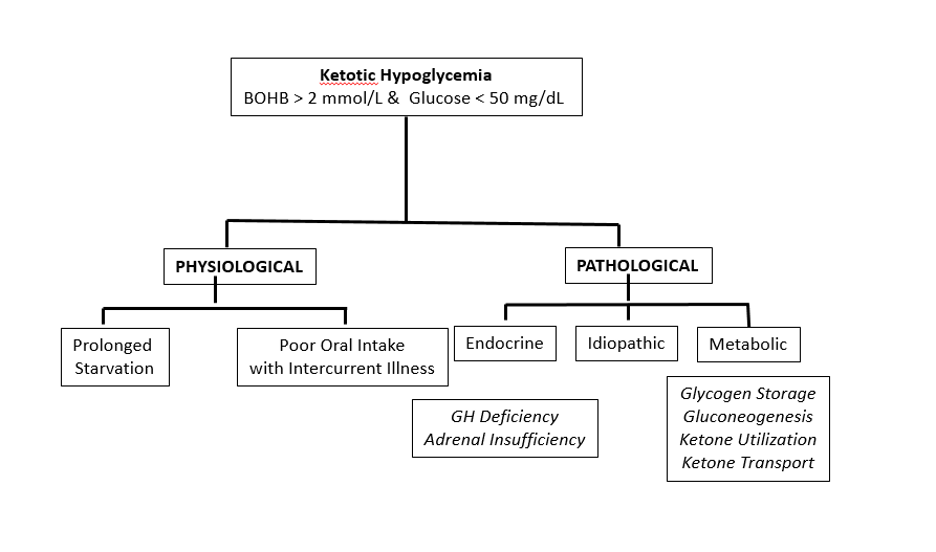
Figure 7. Physiological vs. Pathological Ketotic Hypoglycemia.
BENIGN PHYSIOLOGICAL KETOTIC HYPOGLYCEMIA
Based on the normal physiology of fasting, if a person is fasted for long enough, they will develop a glucose <50 mg/dL and plasma beta-hydroxybutyrate >2 mmol/L. Studies have looked at the normal duration of fasting and found that time to glucose <50 mg/dL increases with age. Children 0-2 years can generally fast about 15-18 hours, children >2 years to 5 years can fast >24 hours, children >5 years to 10 years can fast about 36 hours, and teenagers to adults can fast 48-72 hours (115). Recently Pamar et al. investigated children admitted for day surgery and found that only a small percentage developed beta-hydroxybutyrate levels >1 mmol/L by 12 hours of fasting (116). Thus, the finding of ketones in blood of >1 mmol/L after 12 hours of fasting in previously healthy and well-nourished children is unusual. However, the finding of ketosis after 24 -30 hours of no, or very poor, oral intake would be considered normal for most children over the age of 2 years. Thus, history is very important in differentiating benign physiological ketotic hypoglycemia due to prolonged starvation or intercurrent illness. It is our recommendation that previously healthy children who present with their first episode of ketotic hypoglycemia, who have a history consistent with prolonged starvation with or without intercurrent illness, who have elevated ketones >2 mmol/L and a normal physical exam, should not require further investigations. Children with recurrent episodes of ketosis despite precautions to avoid prolonged fasting need further investigation which may include admission for a fasting study. In addition to evaluating for an underlying etiology, this permits determination of the time to development of ketosis (by monitoring serial ketone levels, not just at the time of the critical sample) and hypoglycemia, which informs intervention. This is best achieved by a formal fasting study (Table 10) following three days of good feeding.
PATHOLOGICAL KETOTIC HYPOGLYCEMIA
The term pathological ketotic hypoglycemia is used to indicate that some underlying abnormality is causing disordered fasting tolerance. The key manifestation of this is ketotic hypoglycemia that occurs after an abnormally short fasting period, morning ketosis without hypoglycemia, or symptomatic ketosis causing vomiting and a vicious cycle of worsening ketosis, vomiting and dehydration. This can be secondary to hormonal deficiencies such as isolated growth hormone deficiency or cortisol deficiency (primary, secondary or tertiary). It can be caused by enzyme deficiencies in the glycogen storage pathway, disorders of gluconeogenesis, or disorders of ketone utilization or transport. In a small number of children, no cause can be found despite extensive clinical and genetic investigations. These children have idiopathic pathological ketotic hypoglycemia (IPKH). The approach to management of these children requires knowledge of the duration of fasting required to keep the beta-hydroxybutyrate <0.6 mmol/L and knowledge of how low the glucose will fall despite rising ketone levels. Thus, the therapeutic plan needs to be individually tailored to each child. Typical components will include high protein diet of 3 g/kg/day protein to promote gluconeogenesis and prevent catabolism of muscle and slow-release carbohydrates such as uncooked corn starch (UCS) or Glycosade®. Many infants and children can be successfully treated with nighttime UCS and frequent high protein snacks during the day, but some will require intensive diets with monitoring of glucose and ketones, similar to individuals with GSD III, VI or IX. Because so little is known of the natural history of the severe forms of IPKH, careful review of metabolic control should be undertaken every few years to prevent under treatment as the patient grows but also to prevent over treatment since the natural ability to fast increases with advancing age.
CONCLUSIONS
Hypoglycemia in pediatric patients occurs predominately in the newborn period and during times of intercurrent illness, because it is most commonly caused by inherited hormonal or metabolic diseases. Rarer acquired forms of hypoglycemia must be suspected when initial presentation occurs in older children and adolescents. Because of the overlap of the normal transitional changes of glucose regulation in the newborn period with the most common time for the presentation of inherited hypoglycemic conditions, it is critical to screen for hypoglycemia and to determine the precise etiology so that rapid and appropriate interventions can be implemented. Newborn infants cannot be simply labeled as having hypoglycemia and discharged casually on frequent feeds. At the minimum a safety fast should be performed to ensure that the transient forms of hypoglycemia have truly resolved before discharge. Up to 10% of patients presenting with unexplained hypoglycemia in a pediatric emergency room setting will have a serious underlying metabolic or hormonal condition requiring long term care. It is critical that emergency rooms caring for children have protocols in place to identify these 10% of children, because these children are at risk of hypoglycemic brain damage. At all ages rapid intervention can prevent permanent neurological injury caused by the majority of conditions we discuss.
REFERENCES
- Davis HA, Spanakis EK, Cryer PE, Davis SN. Hypoglycemia During Therapy of Diabetes. In: Feingold KR, Anawalt B, Blackman MR, Boyce A, Chrousos G, Corpas E, de Herder WW, Dhatariya K, Dungan K, Hofland J, Kalra S, Kaltsas G, Kapoor N, Koch C, Kopp P, Korbonits M, Kovacs CS, Kuohung W, Laferrere B, Levy M, McGee EA, McLachlan R, New M, Purnell J, Sahay R, Shah AS, Singer F, Sperling MA, Stratakis CA, Trence DL, Wilson DP, eds. Endotext. South Dartmouth (MA)2000.
- Stanley CA, Rozance PJ, Thornton PS, De Leon DD, Harris D, Haymond MW, Hussain K, Levitsky LL, Murad MH, Simmons RA, Sperling MA, Weinstein DA, White NH, Wolfsdorf JI. Re-evaluating "transitional neonatal hypoglycemia": mechanism and implications for management. J Pediatr. 2015;166(6):1520-1525 e1521.
- Calabria AC, Gallagher PR, Simmons R, Blinman T, De Leon DD. Postoperative surveillance and detection of postprandial hypoglycemia after fundoplasty in children. J Pediatr. 2011;159(4):597-601 e591.
- Vukovic R, Milenkovic T, Djordjevic M, Mitrovic K, Todorovic S, Sarajlija A, Hussain K. Postprandial hyperinsulinemic hypoglycemia in a child as a late complication of esophageal reconstruction. J Pediatr Endocrinol Metab. 2017;30(7):791-795.
- Kelly A, Ng D, Ferry RJ, Jr., Grimberg A, Koo-McCoy S, Thornton PS, Stanley CA. Acute insulin responses to leucine in children with the hyperinsulinism/hyperammonemia syndrome. J Clin Endocrinol Metab. 2001;86(8):3724-3728.
- De Leon DD, Li C, Delson MI, Matschinsky FM, Stanley CA, Stoffers DA. Exendin-(9-39) corrects fasting hypoglycemia in SUR-1-/- mice by lowering cAMP in pancreatic beta-cells and inhibiting insulin secretion. J Biol Chem. 2008;283(38):25786-25793.
- Pagliara AS, Karl IE, Keating JP, Brown BI, Kipnis DM. Hepatic fructose-1,6-diphosphatase deficiency. A cause of lactic acidosis and hypoglycemia in infancy. J Clin Invest. 1972;51(8):2115-2123.
- Schurr A. Lactate: the ultimate cerebral oxidative energy substrate? J Cereb Blood Flow Metab. 2006;26(1):142-152.
- Powers WJ, Rosenbaum JL, Dence CS, Markham J, Videen TO. Cerebral glucose transport and metabolism in preterm human infants. J Cereb Blood Flow Metab. 1998;18(6):632-638.
- Pryds O, Christensen NJ, Friis-Hansen B. Increased cerebral blood flow and plasma epinephrine in hypoglycemic, preterm neonates. Pediatrics. 1990;85(2):172-176.
- Owen OE, Morgan AP, Kemp HG, Sullivan JM, Herrera MG, Cahill GF, Jr. Brain metabolism during fasting. J Clin Invest. 1967;46(10):1589-1595.
- King P, Kong MF, Parkin H, MacDonald IA, Barber C, Tattersall RB. Intravenous lactate prevents cerebral dysfunction during hypoglycaemia in insulin-dependent diabetes mellitus. Clin Sci (Lond). 1998;94(2):157-163.
- Courchesne-Loyer A, Croteau E, Castellano CA, St-Pierre V, Hennebelle M, Cunnane SC. Inverse relationship between brain glucose and ketone metabolism in adults during short-term moderate dietary ketosis: A dual tracer quantitative positron emission tomography study. J Cereb Blood Flow Metab. 2017;37(7):2485-2493.
- Yager JY. Hypoglycemic injury to the immature brain. Clin Perinatol. 2002;29(4):651-674, vi.
- Ghajar JB, Plum F, Duffy TE. Cerebral oxidative metabolism and blood flow during acute hypoglycemia and recovery in unanesthetized rats. J Neurochem. 1982;38(2):397-409.
- Menni F, de Lonlay P, Sevin C, Touati G, Peigne C, Barbier V, Nihoul-Fekete C, Saudubray JM, Robert JJ. Neurologic outcomes of 90 neonates and infants with persistent hyperinsulinemic hypoglycemia. Pediatrics. 2001;107(3):476-479.
- Javorsky BR, Raff H, Carroll TB, Algeciras-Schimnich A, Singh RJ, Colon-Franco JM, Findling JW. New Cutoffs for the Biochemical Diagnosis of Adrenal Insufficiency after ACTH Stimulation using Specific Cortisol Assays. J Endocr Soc. 2021;5(4):bvab022.
- Kelly A, Tang R, Becker S, Stanley CA. Poor specificity of low growth hormone and cortisol levels during fasting hypoglycemia for the diagnoses of growth hormone deficiency and adrenal insufficiency. Pediatrics. 2008;122(3):e522-528.
- Hussain K, Hindmarsh P, Aynsley-Green A. Neonates with symptomatic hyperinsulinemic hypoglycemia generate inappropriately low serum cortisol counterregulatory hormonal responses. J Clin Endocrinol Metab. 2003;88(9):4342-4347.
- De Leon DD, Thornton P, Stanley CA, Sperling MA. Hypoglycemia in the Newborn and Infant. In: Majzoub JA, Menon RK, Stratakis CA, eds. Sperling Pediatric Endocrinology. Fifth ed: Elsevier; 2021.
- Thornton PS, Stanley CA, De Leon DD, Harris D, Haymond MW, Hussain K, Levitsky LL, Murad MH, Rozance PJ, Simmons RA, Sperling MA, Weinstein DA, White NH, Wolfsdorf JI, Pediatric Endocrine S. Recommendations from the Pediatric Endocrine Society for Evaluation and Management of Persistent Hypoglycemia in Neonates, Infants, and Children. J Pediatr. 2015;167(2):238-245.
- Cryer PE. Diverse causes of hypoglycemia-associated autonomic failure in diabetes. N Engl J Med. 2004;350(22):2272-2279.
- Yang J, Hammoud B, Li C, Ridler A, Yau D, Kim J, Won KJ, Stanley CA, Hoshi T, Stanescu DE. Decreased KATP Channel Activity Contributes to the Low Glucose Threshold for Insulin Secretion of Rat Neonatal Islets. Endocrinology. 2021;162(9).
- Harris DL, Weston PJ, Gamble GD, Harding JE. Glucose Profiles in Healthy Term Infants in the First 5 Days: The Glucose in Well Babies (GLOW) Study. J Pediatr. 2020;223:34-41 e34.
- Stanley CA, Thornton PS, De Leon DD. New approaches to screening and management of neonatal hypoglycemia based on improved understanding of the molecular mechanism of hypoglycemia. Front Pediatr. 2023;11:1071206.
- Harris DL, Weston PJ, Harding JE. Alternative Cerebral Fuels in the First Five Days in Healthy Term Infants: The Glucose in Well Babies (GLOW) Study. J Pediatr. 2021;231:81-86 e82.
- LeBlanc S, Haushalter J, Seashore C, Wood KS, Steiner MJ, Sutton AG. A Quality-Improvement Initiative to Reduce NICU Transfers for Neonates at Risk for Hypoglycemia. Pediatrics. 2018;141(3).
- Weston PJ, Harris DL, Battin M, Brown J, Hegarty JE, Harding JE. Oral dextrose gel for the treatment of hypoglycaemia in newborn infants. Cochrane Database Syst Rev. 2016(5):CD011027.
- Lilien LD, Pildes RS, Srinivasan G, Voora S, Yeh TF. Treatment of neonatal hypoglycemia with minibolus and intraveous glucose infusion. J Pediatr. 1980;97(2):295-298.
- Hoermann H, Mokwa A, Roeper M, Salimi Dafsari R, Koestner F, Hagenbeck C, Mayatepek E, Kummer S, Meissner T. Reliability and Observer Dependence of Signs of Neonatal Hypoglycemia. J Pediatr. 2022;245:22-29 e22.
- Stanley CA. Perspective on the Genetics and Diagnosis of Congenital Hyperinsulinism Disorders. J Clin Endocrinol Metab. 2016;101(3):815-826.
- De Leon DD, Arnoux JB, Banerjee I, Bergada I, Bhatti T, Conwell LS, Fu JF, Flanagan SE, Gillis D, Meissner T, Mohnike K, Pasquini TLS, Shah P, Stanley CA, Vella A, Yorifuji T, Thornton PS. International Guidelines for the Diagnosis and Management of Hyperinsulinism. Horm Res Paediatr. 2023.
- Ferrara C, Patel P, Becker S, Stanley CA, Kelly A. Biomarkers of Insulin for the Diagnosis of Hyperinsulinemic Hypoglycemia in Infants and Children. J Pediatr. 2016;168:212-219.
- Hawkes CP, Lado JJ, Givler S, De Leon DD. The Effect of Continuous Intravenous Glucagon on Glucose Requirements in Infants with Congenital Hyperinsulinism. JIMD Rep. 2019;45:45-50.
- Otonkoski T, Ammala C, Huopio H, Cote GJ, Chapman J, Cosgrove K, Ashfield R, Huang E, Komulainen J, Ashcroft FM, Dunne MJ, Kere J, Thomas PM. A point mutation inactivating the sulfonylurea receptor causes the severe form of persistent hyperinsulinemic hypoglycemia of infancy in Finland. Diabetes. 1999;48(2):408-415.
- Snider KE, Becker S, Boyajian L, Shyng SL, MacMullen C, Hughes N, Ganapathy K, Bhatti T, Stanley CA, Ganguly A. Genotype and phenotype correlations in 417 children with congenital hyperinsulinism. J Clin Endocrinol Metab. 2013;98(2):E355-363.
- Yau D, Stanley CA. Diazoxide-responsive forms of congenital hyperinsulinism. In: De Leon-Crutchlow DD, Stanley CA, eds. Congenital Hyperinsulinism: A Practical Guide to Diagnosis and Management. Switzerland: Humana Press; 2019.
- Herrera A, Vajravelu ME, Givler S, Mitteer L, Avitabile CM, Lord K, De Leon DD. Prevalence of Adverse Events in Children With Congenital Hyperinsulinism Treated With Diazoxide. J Clin Endocrinol Metab. 2018;103(12):4365-4372.
- Thornton P, Truong L, Reynolds C, Hamby T, Nedrelow J. Rate of Serious Adverse Events Associated with Diazoxide Treatment of Patients with Hyperinsulinism. Horm Res Paediatr. 2019;91(1):25-32.
- Brar PC, Heksch R, Cossen K, De Leon DD, Kamboj MK, Marks SD, Marshall BA, Miller R, Page L, Stanley T, Mitchell D, Thornton P. Management and Appropriate Use of Diazoxide in Infants and Children with Hyperinsulinism. J Clin Endocrinol Metab. 2020;105(12).
- Cuff H, Lord K, Ballester L, Scully T, Stewart N, De Leon DD. The Use of Lanreotide in the Treatment of Congenital Hyperinsulinism. J Clin Endocrinol Metab. 2022;107(8):e3115-e3120.
- De Cosio AP, Thornton P. Current and Emerging Agents for the Treatment of Hypoglycemia in Patients with Congenital Hyperinsulinism. Paediatr Drugs. 2019;21(3):123-136.
- Ryan F, Devaney D, Joyce C, Nestorowicz A, Permutt MA, Glaser B, Barton DE, Thornton PS. Hyperinsulinism: molecular aetiology of focal disease. Arch Dis Child. 1998;79(5):445-447.
- Boodhansingh KE, Yang Z, Li C, Chen P, Lord K, Becker SA, States LJ, Adzick NS, Bhatti T, Shyng SL, Ganguly A, Stanley CA, De Leon DD. Localized islet nuclear enlargement hyperinsulinism (LINE-HI) due to ABCC8 and GCK mosaic mutations. Eur J Endocrinol. 2022;187(2):301-313.
- Lord K, Dzata E, Snider KE, Gallagher PR, De Leon DD. Clinical presentation and management of children with diffuse and focal hyperinsulinism: a review of 223 cases. J Clin Endocrinol Metab. 2013;98(11):E1786-1789.
- States LJ, Saade-Lemus S, De Leon DD. 18-F-L 3,4-Dihydroxyphenylalanine PET/Computed Tomography in the Management of Congenital Hyperinsulinism. PET Clin. 2020;15(3):349-359.
- Garg PK, Lokitz SJ, Truong L, Putegnat B, Reynolds C, Rodriguez L, Nazih R, Nedrelow J, Guardia M, Uffman JK, Garg S, Thornton PS. Pancreatic uptake and radiation dosimetry of 6-[18F]fluoro-L-DOPA from PET imaging studies in infants with congenital hyperinsulinism. PLoS One. 2017;12(11):e0186340.
- Adzick NS, De Leon DD, States LJ, Lord K, Bhatti TR, Becker SA, Stanley CA. Surgical treatment of congenital hyperinsulinism: Results from 500 pancreatectomies in neonates and children. J Pediatr Surg. 2018.
- Beltrand J, Caquard M, Arnoux JB, Laborde K, Velho G, Verkarre V, Rahier J, Brunelle F, Nihoul-Fekete C, Saudubray JM, Robert JJ, de Lonlay P. Glucose metabolism in 105 children and adolescents after pancreatectomy for congenital hyperinsulinism. Diabetes Care. 2012;35(2):198-203.
- Grimberg A, Ferry RJ, Jr., Kelly A, Koo-McCoy S, Polonsky K, Glaser B, Permutt MA, Aguilar-Bryan L, Stafford D, Thornton PS, Baker L, Stanley CA. Dysregulation of insulin secretion in children with congenital hyperinsulinism due to sulfonylurea receptor mutations. Diabetes. 2001;50(2):322-328.
- Huopio H, Reimann F, Ashfield R, Komulainen J, Lenko HL, Rahier J, Vauhkonen I, Kere J, Laakso M, Ashcroft F, Otonkoski T. Dominantly inherited hyperinsulinism caused by a mutation in the sulfonylurea receptor type 1. J Clin Invest. 2000;106(7):897-906.
- Byrne MM, Sturis J, Fajans SS, Ortiz FJ, Stoltz A, Stoffel M, Smith MJ, Bell GI, Halter JB, Polonsky KS. Altered insulin secretory responses to glucose in subjects with a mutation in the MODY1 gene on chromosome 20. Diabetes. 1995;44(6):699-704.
- Byrne MM, Sturis J, Menzel S, Yamagata K, Fajans SS, Dronsfield MJ, Bain SC, Hattersley AT, Velho G, Froguel P, Bell GI, Polonsky KS. Altered insulin secretory responses to glucose in diabetic and nondiabetic subjects with mutations in the diabetes susceptibility gene MODY3 on chromosome 12. Diabetes. 1996;45(11):1503-1510.
- Cardenas-Diaz FL, Osorio-Quintero C, Diaz-Miranda MA, Kishore S, Leavens K, Jobaliya C, Stanescu D, Ortiz-Gonzalez X, Yoon C, Chen CS, Haliyur R, Brissova M, Powers AC, French DL, Gadue P. Modeling Monogenic Diabetes using Human ESCs Reveals Developmental and Metabolic Deficiencies Caused by Mutations in HNF1A. Cell Stem Cell. 2019;25(2):273-289 e275.
- Miki T, Tashiro F, Iwanaga T, Nagashima K, Yoshitomi H, Aihara H, Nitta Y, Gonoi T, Inagaki N, Miyazaki J, Seino S. Abnormalities of pancreatic islets by targeted expression of a dominant-negative KATP channel. Proc Natl Acad Sci U S A. 1997;94(22):11969-11973.
- Wakeling MN, Owens NDL, Hopkinson JR, Johnson MB, Houghton JAL, Dastamani A, Flaxman CS, Wyatt RC, Hewat TI, Hopkins JJ, Laver TW, van Heugten R, Weedon MN, De Franco E, Patel KA, Ellard S, Morgan NG, Cheesman E, Banerjee I, Hattersley AT, Dunne MJ, International Congenital Hyperinsulinism C, Richardson SJ, Flanagan SE. Non-coding variants disrupting a tissue-specific regulatory element in HK1 cause congenital hyperinsulinism. Nat Genet. 2022;54(11):1615-1620.
- Pinney SE, Ganapathy K, Bradfield J, Stokes D, Sasson A, Mackiewicz K, Boodhansingh K, Hughes N, Becker S, Givler S, Macmullen C, Monos D, Ganguly A, Hakonarson H, Stanley CA. Dominant form of congenital hyperinsulinism maps to HK1 region on 10q. Horm Res Paediatr. 2013;80(1):18-27.
- Stanley CA, Lieu YK, Hsu BY, Burlina AB, Greenberg CR, Hopwood NJ, Perlman K, Rich BH, Zammarchi E, Poncz M. Hyperinsulinism and hyperammonemia in infants with regulatory mutations of the glutamate dehydrogenase gene. N Engl J Med. 1998;338(19):1352-1357.
- Bahi-Buisson N, Roze E, Dionisi C, Escande F, Valayannopoulos V, Feillet F, Heinrichs C, Chadefaux-Vekemans B, Dan B, de Lonlay P. Neurological aspects of hyperinsulinism-hyperammonaemia syndrome. Dev Med Child Neurol. 2008;50(12):945-949.
- Su C, Liang XJ, Li WJ, Wu D, Liu M, Cao BY, Chen JJ, Qin M, Meng X, Gong CX. Clinical and Molecular Spectrum of Glutamate Dehydrogenase Gene Defects in 26 Chinese Congenital Hyperinsulinemia Patients. J Diabetes Res. 2018;2018:2802540.
- MacMullen C, Fang J, Hsu BY, Kelly A, de Lonlay-Debeney P, Saudubray JM, Ganguly A, Smith TJ, Stanley CA, Hyperinsulinism/hyperammonemia Contributing I. Hyperinsulinism/hyperammonemia syndrome in children with regulatory mutations in the inhibitory guanosine triphosphate-binding domain of glutamate dehydrogenase. J Clin Endocrinol Metab. 2001;86(4):1782-1787.
- Raizen DM, Brooks-Kayal A, Steinkrauss L, Tennekoon GI, Stanley CA, Kelly A. Central nervous system hyperexcitability associated with glutamate dehydrogenase gain of function mutations. J Pediatr. 2005;146(3):388-394.
- Treberg JR, Clow KA, Greene KA, Brosnan ME, Brosnan JT. Systemic activation of glutamate dehydrogenase increases renal ammoniagenesis: implications for the hyperinsulinism/hyperammonemia syndrome. Am J Physiol Endocrinol Metab. 2010;298(6):E1219-1225.
- De Lonlay P, Benelli C, Fouque F, Ganguly A, Aral B, Dionisi-Vici C, Touati G, Heinrichs C, Rabier D, Kamoun P, Robert JJ, Stanley C, Saudubray JM. Hyperinsulinism and hyperammonemia syndrome: report of twelve unrelated patients. Pediatr Res. 2001;50(3):353-357.
- Clayton PT, Eaton S, Aynsley-Green A, Edginton M, Hussain K, Krywawych S, Datta V, Malingre HE, Berger R, van den Berg IE. Hyperinsulinism in short-chain L-3-hydroxyacyl-CoA dehydrogenase deficiency reveals the importance of beta-oxidation in insulin secretion. J Clin Invest. 2001;108(3):457-465.
- Stanescu DE, Hughes N, Kaplan B, Stanley CA, De Leon DD. Novel presentations of congenital hyperinsulinism due to mutations in the MODY genes: HNF1A and HNF4A. J Clin Endocrinol Metab. 2012;97(10):E2026-2030.
- McGlacken-Byrne SM, Mohammad JK, Conlon N, Gubaeva D, Siersbaek J, Schou AJ, Demirbilek H, Dastamani A, Houghton JAL, Brusgaard K, Melikyan M, Christesen H, Flanagan SE, Murphy NP, Shah P. Clinical and genetic heterogeneity of HNF4A/HNF1A mutations in a multicentre paediatric cohort with hyperinsulinaemic hypoglycaemia. Eur J Endocrinol. 2022;186(4):417-427.
- Meissner T, Otonkoski T, Feneberg R, Beinbrech B, Apostolidou S, Sipila I, Schaefer F, Mayatepek E. Exercise induced hypoglycaemic hyperinsulinism. Arch Dis Child. 2001;84(3):254-257.
- Otonkoski T, Jiao H, Kaminen-Ahola N, Tapia-Paez I, Ullah MS, Parton LE, Schuit F, Quintens R, Sipila I, Mayatepek E, Meissner T, Halestrap AP, Rutter GA, Kere J. Physical exercise-induced hypoglycemia caused by failed silencing of monocarboxylate transporter 1 in pancreatic beta cells. Am J Hum Genet. 2007;81(3):467-474.
- Gonzalez-Barroso MM, Giurgea I, Bouillaud F, Anedda A, Bellanne-Chantelot C, Hubert L, de Keyzer Y, de Lonlay P, Ricquier D. Mutations in UCP2 in congenital hyperinsulinism reveal a role for regulation of insulin secretion. PLoS One. 2008;3(12):e3850.
- Flanagan SE, Vairo F, Johnson MB, Caswell R, Laver TW, Lango Allen H, Hussain K, Ellard S. A CACNA1D mutation in a patient with persistent hyperinsulinaemic hypoglycaemia, heart defects, and severe hypotonia. Pediatr Diabetes. 2017;18(4):320-323.
- Kostopoulou E, Dastamani A, Guemes M, Clement E, Caiulo S, Shanmugananda P, Dattani M, Gilbert C, Hurst JA, Shah P. Syndromic Forms of Hyperinsulinaemic Hypoglycaemia-A 15-year follow-up Study. Clin Endocrinol (Oxf). 2021;94(3):399-412.
- Duffy KA, Cielo CM, Cohen JL, Gonzalez-Gandolfi CX, Griff JR, Hathaway ER, Kupa J, Taylor JA, Wang KH, Ganguly A, Deardorff MA, Kalish JM. Characterization of the Beckwith-Wiedemann spectrum: Diagnosis and management. Am J Med Genet C Semin Med Genet. 2019;181(4):693-708.
- Kalish JM, Boodhansingh KE, Bhatti TR, Ganguly A, Conlin LK, Becker SA, Givler S, Mighion L, Palladino AA, Adzick NS, De Leon DD, Stanley CA, Deardorff MA. Congenital hyperinsulinism in children with paternal 11p uniparental isodisomy and Beckwith-Wiedemann syndrome. J Med Genet. 2016;53(1):53-61.
- Brioude F, Kalish JM, Mussa A, Foster AC, Bliek J, Ferrero GB, Boonen SE, Cole T, Baker R, Bertoletti M, Cocchi G, Coze C, De Pellegrin M, Hussain K, Ibrahim A, Kilby MD, Krajewska-Walasek M, Kratz CP, Ladusans EJ, Lapunzina P, Le Bouc Y, Maas SM, Macdonald F, Ounap K, Peruzzi L, Rossignol S, Russo S, Shipster C, Skorka A, Tatton-Brown K, Tenorio J, Tortora C, Gronskov K, Netchine I, Hennekam RC, Prawitt D, Tumer Z, Eggermann T, Mackay DJG, Riccio A, Maher ER. Expert consensus document: Clinical and molecular diagnosis, screening and management of Beckwith-Wiedemann syndrome: an international consensus statement. Nat Rev Endocrinol. 2018;14(4):229-249.
- Laje P, Palladino AA, Bhatti TR, States LJ, Stanley CA, Adzick NS. Pancreatic surgery in infants with Beckwith-Wiedemann syndrome and hyperinsulinism. J Pediatr Surg. 2013;48(12):2511-2516.
- Hussain K, Cosgrove KE, Shepherd RM, Luharia A, Smith VV, Kassem S, Gregory JW, Sivaprasadarao A, Christesen HT, Jacobsen BB, Brusgaard K, Glaser B, Maher EA, Lindley KJ, Hindmarsh P, Dattani M, Dunne MJ. Hyperinsulinemic hypoglycemia in Beckwith-Wiedemann syndrome due to defects in the function of pancreatic beta-cell adenosine triphosphate-sensitive potassium channels. J Clin Endocrinol Metab. 2005;90(7):4376-4382.
- Yap KL, Johnson AEK, Fischer D, Kandikatla P, Deml J, Nelakuditi V, Halbach S, Jeha GS, Burrage LC, Bodamer O, Benavides VC, Lewis AM, Ellard S, Shah P, Cody D, Diaz A, Devarajan A, Truong L, Greeley SAW, De Leo-Crutchlow DD, Edmondson AC, Das S, Thornton P, Waggoner D, Del Gaudio D. Congenital hyperinsulinism as the presenting feature of Kabuki syndrome: clinical and molecular characterization of 10 affected individuals. Genet Med. 2018.
- Gibson CE, Boodhansingh KE, Li C, Conlin L, Chen P, Becker SA, Bhatti T, Bamba V, Adzick NS, De Leon DD, Ganguly A, Stanley CA. Congenital Hyperinsulinism in Infants with Turner Syndrome: Possible Association with Monosomy X and KDM6A Haploinsufficiency. Horm Res Paediatr. 2018;89(6):413-422.
- Vajravelu ME, Chai J, Krock B, Baker S, Langdon D, Alter C, De Leon DD. Congenital Hyperinsulinism and Hypopituitarism Attributable to a Mutation in FOXA2. J Clin Endocrinol Metab. 2018;103(3):1042-1047.
- Giri D, Vignola ML, Gualtieri A, Scagliotti V, McNamara P, Peak M, Didi M, Gaston-Massuet C, Senniappan S. Novel FOXA2 mutation causes Hyperinsulinism, Hypopituitarism with Craniofacial and Endoderm-derived organ abnormalities. Hum Mol Genet. 2017;26(22):4315-4326.
- Moravej H, Altassan R, Jaeken J, Enns GM, Ellaway C, Balasubramaniam S, De Lonlay P, Coman D, Mercimek-Andrews S, Witters P, Morava E. Hypoglycemia in CDG patients due to PMM2 mutations: Follow up on hyperinsulinemic patients. JIMD Rep. 2020;51(1):76-81.
- de Lonlay P, Cuer M, Vuillaumier-Barrot S, Beaune G, Castelnau P, Kretz M, Durand G, Saudubray JM, Seta N. Hyperinsulinemic hypoglycemia as a presenting sign in phosphomannose isomerase deficiency: A new manifestation of carbohydrate-deficient glycoprotein syndrome treatable with mannose. J Pediatr. 1999;135(3):379-383.
- Sturiale L, Barone R, Garozzo D. The impact of mass spectrometry in the diagnosis of congenital disorders of glycosylation. J Inherit Metab Dis. 2011;34(4):891-899.
- Stanescu DL, Stanley CA. Advances in Understanding the Mechanism of Transitional Neonatal Hypoglycemia and Implications for Management. Clin Perinatol. 2022;49(1):55-72.
- Arya VB, Flanagan SE, Schober E, Rami-Merhar B, Ellard S, Hussain K. Activating AKT2 mutation: hypoinsulinemic hypoketotic hypoglycemia. J Clin Endocrinol Metab. 2014;99(2):391-394.
- Bhatti TR, Ganapathy K, Huppmann AR, Conlin L, Boodhansingh KE, MacMullen C, Becker S, Ernst LM, Adzick NS, Ruchelli ED, Ganguly A, Stanley CA. Histologic and Molecular Profile of Pediatric Insulinomas: Evidence of a Paternal Parent-of-Origin Effect. J Clin Endocrinol Metab. 2016;101(3):914-922.
- Gupta P, Loechner K, Patterson BC, Felner E. Insulinoma in an adolescent female with weight loss: a case report and literature review on pediatric insulinomas. Endocrinol Diabetes Metab Case Rep. 2022;2022.
- Thakker RV, Newey PJ, Walls GV, Bilezikian J, Dralle H, Ebeling PR, Melmed S, Sakurai A, Tonelli F, Brandi ML, Endocrine S. Clinical practice guidelines for multiple endocrine neoplasia type 1 (MEN1). J Clin Endocrinol Metab. 2012;97(9):2990-3011.
- Mitrakou A, Fanelli C, Veneman T, Perriello G, Calderone S, Platanisiotis D, Rambotti A, Raptis S, Brunetti P, Cryer P, et al. Reversibility of unawareness of hypoglycemia in patients with insulinomas. N Engl J Med. 1993;329(12):834-839.
- Service FJ, Dale AJ, Elveback LR, Jiang NS. Insulinoma: clinical and diagnostic features of 60 consecutive cases. Mayo Clin Proc. 1976;51(7):417-429.
- Shah R, Garg R, Majmundar M, Purandare N, Malhotra G, Patil V, Ramteke-Jadhav S, Lila A, Shah N, Bandgar T. Exendin-4-based imaging in insulinoma localization: Systematic review and meta-analysis. Clin Endocrinol (Oxf). 2021;95(2):354-364.
- de Herder WW, Hofland J. Insulinoma. In: Feingold KR, Anawalt B, Blackman MR, Boyce A, Chrousos G, Corpas E, de Herder WW, Dhatariya K, Dungan K, Hofland J, Kalra S, Kaltsas G, Kapoor N, Koch C, Kopp P, Korbonits M, Kovacs CS, Kuohung W, Laferrere B, Levy M, McGee EA, McLachlan R, New M, Purnell J, Sahay R, Shah AS, Singer F, Sperling MA, Stratakis CA, Trence DL, Wilson DP, eds. Endotext. South Dartmouth (MA)2000.
- Palladino AA, Sayed S, Levitt Katz LE, Gallagher PR, De Leon DD. Increased glucagon-like peptide-1 secretion and postprandial hypoglycemia in children after Nissen fundoplication. J Clin Endocrinol Metab. 2009;94(1):39-44.
- Rosenfeld E, De Leon DD. Bridging the gaps: recent advances in diagnosis, care, and outcomes in congenital hyperinsulinism. Curr Opin Pediatr. 2023.
- Egan AM, Galior KD, Maus AD, Fatica E, Simha V, Shah P, Singh RJ, Vella A. Pitfalls in Diagnosing Hypoglycemia Due to Exogenous Insulin: Validation and Utility of an Insulin Analog Assay. Mayo Clin Proc. 2022;97(11):1994-2004.
- Folick A, Cheng C, Chu SN, Rick JW, Rushakoff RJ. Discordant Timing of Hypoglycemic Agent Screening Causing Delayed Diagnosis of Sulfonylurea-Induced Hypoglycemia. AACE Clin Case Rep. 2022;8(3):139-141.
- Cullingford DJ, Siafarikas A, Choong CS. Genetic Etiology of Congenital Hypopituitarism. In: Feingold KR, Anawalt B, Blackman MR, Boyce A, Chrousos G, Corpas E, de Herder WW, Dhatariya K, Dungan K, Hofland J, Kalra S, Kaltsas G, Kapoor N, Koch C, Kopp P, Korbonits M, Kovacs CS, Kuohung W, Laferrere B, Levy M, McGee EA, McLachlan R, New M, Purnell J, Sahay R, Shah AS, Singer F, Sperling MA, Stratakis CA, Trence DL, Wilson DP, eds. Endotext. South Dartmouth (MA)2000.
- Mehta A, Hindmarsh PC, Stanhope RG, Turton JP, Cole TJ, Preece MA, Dattani MT. The role of growth hormone in determining birth size and early postnatal growth, using congenital growth hormone deficiency (GHD) as a model. Clin Endocrinol (Oxf). 2005;63(2):223-231.
- Murray PG, Clayton PE. Disorders of Growth Hormone in Childhood. In: Feingold KR, Anawalt B, Blackman MR, Boyce A, Chrousos G, Corpas E, de Herder WW, Dhatariya K, Dungan K, Hofland J, Kalra S, Kaltsas G, Kapoor N, Koch C, Kopp P, Korbonits M, Kovacs CS, Kuohung W, Laferrere B, Levy M, McGee EA, McLachlan R, New M, Purnell J, Sahay R, Shah AS, Singer F, Sperling MA, Stratakis CA, Trence DL, Wilson DP, eds. Endotext. South Dartmouth (MA)2000.
- Yau M, Khattab A, Yuen T, New M. Congenital Adrenal Hyperplasia. In: Feingold KR, Anawalt B, Blackman MR, Boyce A, Chrousos G, Corpas E, de Herder WW, Dhatariya K, Dungan K, Hofland J, Kalra S, Kaltsas G, Kapoor N, Koch C, Kopp P, Korbonits M, Kovacs CS, Kuohung W, Laferrere B, Levy M, McGee EA, McLachlan R, New M, Purnell J, Sahay R, Shah AS, Singer F, Sperling MA, Stratakis CA, Trence DL, Wilson DP, eds. Endotext. South Dartmouth (MA)2000.
- Aynsley-Green A, Williamson DH, Gitzelmann R. Hepatic glycogen synthetase deficiency. Definition of syndrome from metabolic and enzyme studies on a 9-year-old girl. Arch Dis Child. 1977;52(7):573-579.
- Weinstein DA, Correia CE, Saunders AC, Wolfsdorf JI. Hepatic glycogen synthase deficiency: an infrequently recognized cause of ketotic hypoglycemia. Mol Genet Metab. 2006;87(4):284-288.
- Burchell A. The molecular basis of the type 1 glycogen storage diseases. Bioessays. 1992;14(6):395-400.
- Bao Y, Dawson TL, Jr., Chen YT. Human glycogen debranching enzyme gene (AGL): complete structural organization and characterization of the 5' flanking region. Genomics. 1996;38(2):155-165.
- Slonim AE, Coleman RA, Moses WS. Myopathy and growth failure in debrancher enzyme deficiency: improvement with high-protein nocturnal enteral therapy. J Pediatr. 1984;105(6):906-911.
- Brown LM, Corrado MM, van der Ende RM, Derks TG, Chen MA, Siegel S, Hoyt K, Correia CE, Lumpkin C, Flanagan TB, Carreras CT, Weinstein DA. Evaluation of glycogen storage disease as a cause of ketotic hypoglycemia in children. J Inherit Metab Dis. 2015;38(3):489-493.
- Cohen P, Spiegelman BM. Cell biology of fat storage. Mol Biol Cell. 2016;27(16):2523-2527.
- Lindner M, Hoffmann GF, Matern D. Newborn screening for disorders of fatty-acid oxidation: experience and recommendations from an expert meeting. J Inherit Metab Dis. 2010;33(5):521-526.
- White K, Truong L, Aaron K, Mushtaq N, Thornton PS. The Incidence and Etiology of Previously Undiagnosed Hypoglycemic Disorders in the Emergency Department. Pediatr Emerg Care. 2018.
- Weinstein DA, Butte AJ, Raymond K, Korson MS, Weiner DL, Wolfsdorf JI. High Incidence of Unrecognized Metabolic and Endocrinologic Disorders in Acutely Ill Children with Previously Unrecognized Hypoglycemia. Pediatr Res. 2001;49:103.
- Halestrap AP. The SLC16 gene family - structure, role and regulation in health and disease. Mol Aspects Med. 2013;34(2-3):337-349.
- Al-Khawaga S, AlRayahi J, Khan F, Saraswathi S, Hasnah R, Haris B, Mohammed I, Abdelalim EM, Hussain K. A SLC16A1 Mutation in an Infant With Ketoacidosis and Neuroimaging Assessment: Expanding the Clinical Spectrum of MCT1 Deficiency. Front Pediatr. 2019;7:299.
- Rosenfeld E, Alzahrani O, De Leon DD. Undiagnosed hypoglycaemia disorders in children detected when hypoglycaemia occurs in the setting of illness: a retrospective study. BMJ Paediatr Open. 2023;7(1).
- van Veen MR, van Hasselt PM, de Sain-van der Velden MG, Verhoeven N, Hofstede FC, de Koning TJ, Visser G. Metabolic profiles in children during fasting. Pediatrics. 2011;127(4):e1021-1027.
- Parmar K, Mosha M, Weinstein DA, Riba-Wolman R. Fasting ketone levels vary by age: implications for differentiating physiologic from pathologic ketotic hypoglycemia. J Pediatr Endocrinol Metab. 2023;36(7):667-673.
















